

Fly to the South Pole 2024/2025
Fly to the South Pole, where all 360 lines of longitude meet and in a few steps you can walk around the world. History comes alive as you stand at 90° South, the ultimate goal of polar explorers Amundsen and Scott. Imagine how it felt to head out across the frozen continent and into the unknown over 100 years ago. Feel the spirit of determination and discovery that has inspired a century of Antarctic exploration and scientific research. Now can you be one of the selected few that have set foot on the Geographic South Pole.
Day 00: Arrival Day, Punta Arenas, Chile
Day 0: pre-departure day, luggage pick-up & briefing, day 1: fly to antarctica*.
You will be called at your hotel in the morning to get a update of the current conditions in Antarctica. If the weather is suitable for the flight, you will be picked up at your hotel within the hour.
At the Punta Arenas airport, you will board the chartered jet for the 4¼ hour fl ight to Antarctica. The route crosses the Drake Passage, then follows the west side of the Antarctic Peninsula and the spine of the Ellsworth Mountains. You land on a naturally occurring blue-ice runway on Union Glacier where you will take your fi rst steps on Antarctica, then c limb aboard one of the specially-adapted vans for the 5 mi (8 km) shuttle to the camp. The staff will provide a welcome tour of the camp and show you to your tent.
*Every effort will be made to keep to the scheduled flight date and you will depart as soon as weather and runway conditions permit. Please understand that delays are common in Antarctic travel. All flights are dependent on weather, aircraft serviceability, and local conditions. The staff will stay in close contact with you and will provide you with regular flight updates.
Day 2-5: Explore Union Glacier
During your week stay in Antarctica, you’ll have multiple days to explore Union Glacier. The meteorologists will carefully monitor the weather conditions and find the best day for your South Pole Flight. A typical day at Union Glacier starts with a briefing after breakfast where you’ll meet with your guide to discuss the day’s options and choose an activity tailored to the weather and the group’s interest. Union Glacier excursions can include any of the following destinations:
Elephant’s Head Ride in one of our vehicles to this dramatic marble buttress overlooking the blue-ice runway. Beautiful ice pools and moraines offer endless opportunities for photography. If you’re looking for something more active, you’ll have the opportunity to hike up to the base of Elephant’s Head or all the way to the top of Rhodes Bluff for panoramic views of Union Glacier and the Heritage Range.
Drake Icefall Named in the 1960s after geologist Benjamin Drake IV, this impressive icefall tumbles off the polar plateau into Union Glacier. Winds from the South Pole carve huge waves into the blue-ice and polish the surface into a high shine.
Charles Peak Windscoop Discover the power of wind on ice as you wander through a sparkling turquoise corridor. If you’re truly adventurous, this is a prime place to try ice climbing with one of our experienced guides. For the less vertically inclined, you can rock hunt to your heart’s content. Just remember to leave them in place, as nothing may be removed from Antarctica.
The Beach at Rossman Cove Another spectacular setting for blue-ice photography and panoramic views! Take cross-country skis with you or a picnic lunch and enjoy Antarctica’s version of a glacial beach getaway.
Hidden Valley The staff’s favorite getaway — this secret canyon opens up to a beautiful valley prime for hiking, climbing, and backcountry skiing.
If you’d prefer to stay closer to camp, there are a variety of activities for all abilities. You can check out a pair of cross-country skis or a fat-tire bike and take a spin around the groomed 10k loop or you can enjoy a cup of tea, an Antarctic book, or fun game in the camp library. In the evenings, lectures are regularly offered and well as films tailored to your experience.
Flexible Flight Day - Fly to the South Pole
Once weather conditions permit, you will board a ski aircraft and head for the southernmost point on Earth! Your flight is planned to return the same day but food and camping equipment will be brought in the event weather conditions change and an overnight stay is necessary. The services team will assist you in packing your sleeping bag.
The flight to the Pole will take between 4-6 hours depending on the aircraft. You’ll fly over the high polar plateau, viewing wind affected snow called sastrugi, crevasse fields, and an endless expanse of white. You’ll pass the Thiel Mountains approximately halfway to the Pole and continue to fly over the plateau. As you near 90° South, you will catch sight of the South Pole station, a cluster of buildings surrounded by snow and sky. The aircraft lands on a groomed ski-way and you’ll deplane near the South Pole marker. Here all 360 lines of longitude meet and beneath your feet the ice is almost 10,000 ft (3000 m) thick!
The United States of America maintains a research station at the South Pole, named Amundsen-Scott Station in memory of those intrepid explorers. If United States Antarctic Program (USAP) staff are available, you will be escorted inside the research station for a guided visit.
Outside the station, you will have plenty of time to take photos at both the Geographic and Ceremonial Poles. Enjoy this special place and imagine how it must have felt to stand here a century ago with only the sound of the wind and an endless expanse of white stretching northward in all directions.
Your visit to the Pole will last approximately 3-4 hours. Given the cold conditions and altitude, this is the perfect amount of time for guests to accomplish their objectives and enjoy the experience.
Day 6: Return to Punta Arenas, Chile
When weather and runway conditions permit, the intercontinental aircraft will arrive at Union Glacier to transport you back to Chile. The sta ff will meet you at the airport and transfer you back to your hotel.
Please notice: No two Antarctic experiences are the same. This is part of the excitement and adventure of Antarctic travel. The itinerary above highlights typical activities and experiences. Exact timeline and details will vary from trip to trip. Trip length may vary by departure. Please anticipate delays and do not plan anything important after the trip and make sure you have a changable airline ticket. Allow yourself to enjoy this unique experience without the stress of pending commitments. The trip is operated by Antarctic Logistics & Expeditions.
Accommodation

Union Glacier Camp
Our main Antarctic base camp lies on the broad expanse of the Union Glacier, in the southern Ellsworth Mountains. We are a short flight from Mt Vinson, the highest peak in Antarctica, and just over 600 miles (1000 km) from our nearest neighbors, the South Pole. Majestic peaks rise in all directions, offering scenic excursions, technical climbs and ski tours. At camp there is little wind, providing a comfortable environment to relax and take it all in.
Our double-walled sleeping tents are roomy, comfortable and well suited to Antarctic conditions. Each tent houses two guests who sleep in sleeping bags with mattresses, pillow and linen provided by ANI. The tents are naturally heated by the 24 hour sunlight up to 60°F (15°C). The Dining Tent is the heart of our camp. It has a complete kitchen and dining area and serves as a gathering place to enjoy tea and coffee while discussing the day’s adventures. Our chefs prepare hearty, fresh-cooked meals, baked goods, and tantalizing desserts. Self-serve snacks and beverages are available anytime. We regularly fly in fresh fruits, vegetables, fish, meats, and a variety of beers and Chilean wines from Punta Arenas, Chile.
You’ll be surprised how comfortable Antarctica can be!

Price includes
- Airport transfers in Punta Arenas, Chile
- Round trip flight to Antarctica from Punta Arenas
- Round trip flight to South Pole from Union Glacier, Antarctica
- Meals and tented accommodation in Antarctica
- Antarctic guides and lecturer
- Celebration dinner and Certificate of Achievement
- Checked luggage up to 55 lb (25 kg)
Not included
- Insurance coverage—personal, medical, evacuation, or otherwise
- Commercial flights to and from Punta Arenas
- Airport transfers outside of Punta Arenas
- Meals and accommodation in Punta Arenas
- Additional flights within Antarctica
- Personal equipment and clothing
- Expenses incurred due to delays
- Luggage over 55 lb (25 kg)
- Satellite phone charges
Departures & booking
Please do not hesitate to contact us if you have any questions or wish to make a reservation.
We respect your privacy. Please refer to our Privacy Policy for full detail.
Related blog posts

A heart-warming Polar adventure!
It is with great joy we have been able to say welcome home to our first two travellers since the start of the pandemic.

South Pole / Antarctica Tours
Our trips to the South Pole are unforgettable adventures just waiting to happen. Begin your journey in Argentina and make your way through Antarctic icy waters, discovering the region’s wildlife and sights along the way. The scenery in these parts is unlike anything you’ve seen before.
82 Antarctica / South Pole tours with 87 reviews

- Ocean Cruise
Antarctica Classic
G Adventure has mastered the art of making your experience really stand out and they have delivered.

Antarctica Classic in Depth
G expedition team members are very passionate, professional and knowledgeable!
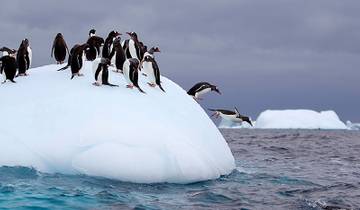
- Christmas & New Year
Antarctic Explorer, Operated by Quark
The Ocean Adventurer was the perfect ship for the voyage; the expedition team was knowledgable, fun, and took great care of us.

Classic Antarctica - 10 days
The food was wonderful, the scenery unbelievable and the small passenger group made us all into friends.

Antarctic Express: Fly the Drake, Operated by Quark
This trip surpassed ALL of our expecations. If you are looking for a high quality experience with like-minded individuals who love nature, wildlife viewing and adventure, Quark is definitely the company to sail with.

Life Returns - Springtime Expedition to Antarctica (MS Maud, 2024)
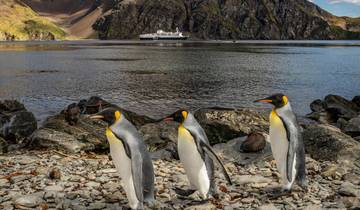
Shackleton's Falklands, South Georgia and Antarctica Expedition (Ocean Endeavour)

King Penguins of the Falklands and South Georgia - Expedition
- 10% deposit on some dates Some departure dates offer you the chance to book this tour with a lower deposit.

The Ultimate Antarctica Experience - The Peninsula In Depth
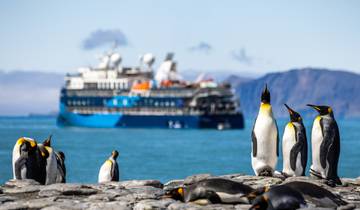
Falkland Islands, South Georgia & Antarctica - Ocean Albatros and Ocean Victory 18D/17N
Antarctica / south pole tour reviews.
It is truly a once in a lifetime experience.
This expedition to Antarctica was brilliant and so special. A chance to see the last frontier and the unique flora and fauna of this amazing place. The specialist team were amazing with their insiteful seminars that added to the experience and a shout out to the great crew above and below decks. All-in-all a unique and a very special experience. Thankyou. Steve and Elizabeth
Trip of a lifetime from Quark. Couldn't ask for a better experience - The Ocean Adventurer was the perfect ship for the voyage; the expedition team was knowledgable, fun, and took great care of us; the dining crew and the food were amazing.
Top operators

"It is truly a once in a lifetime experience.
G Adventures is an expert in:

"The trip was amazing and the pristine environment in Antarctica needs to be seen and felt to be appreciated. Quark provided a platform to conduct the the trip in a sustainable manner, impeccable procedures to preserve the environment and also good food to enjoy. Thoroughly enjoyable and unforgettable trip. One suggestion for Quark is to clearly advise future participants to cater 2-3 days leeway to allow for flights delay or cancellation due to the changeable weather conditions. There was a 2 days delay for my trip due to planes being unable to land in Antarctica due to accumulated snow on the runway. This caused a frantic rush to change flights and other travel arrangements for many participants aggravated by the limited internet access in Antarctica which could be avoidable or mitigated if the participants were advised of probable delays prior to the trip.
Exodus Travels is an expert in:

"We can’t say enough good things about this tour, the ship and the crew. Our time on board was fantastic. Our captain had a great deal of experience and we felt completely safe at all times on the ship. The expedition team were knowledgable and friendly, and all the crew from the deck hands to the bridge went out of their way to be helpful and kind. The food was wonderful, the scenery unbelievable and the small passenger group made us all into friends by the end of the journey. If you have ever wanted to visit the White Continent, book your trip on the MV Ushuaia and be prepared to have the experience of a lifetime!!
On The Go Tours is an expert in:
Antarctica / South Pole Tours starting in:
- Ushuaia (37)
- Buenos Aires (11)
- Santiago (5)
- Fully Guided (76)
- Explorer (57)
- Family (56)
- Ocean Cruise (56)
- Active (12)
- Partially Guided (5)
- Small Group (18)
- 10 Day Tours (6)
- 2 Week Tours (26)
- 3 Week Tours (24)
- 4 Week Tours (9)
- Summer 2024 (1)
- Fall / Autumn 2024 (19)
- Winter 2024 / 2025 (27)
- Spring 2025 (15)
- Summer 2025 (1)
- Fall / Autumn 2025 (15)
- Winter 2025 / 2026 (23)
- Spring 2026 (8)
- June 2024 (1)
- July 2024 (1)
- August 2024 (1)
- October 2024 (8)
- November 2024 (16)
- December 2024 (18)
- January 2025 (17)
- February 2025 (15)
- March 2025 (14)
- May 2025 (1)
- June 2025 (1)
- July 2025 (1)
- Best Time to Visit Antarctica
- Antarctic Wildlife: Animals You Can See in Antarctica
- Kayaking in Antarctica: What to Know & What to Expect
- Camping in Antarctica: Everything You Need to Know
- Hiking in Antarctica: What to Know & How to Prepare
- Zodiac Cruising & Shore Landings in Polar Regions
- How to Get to Antarctica
- How to get to Antarctica from Argentina
- Flights to Antarctica
Travel Styles
- Luxury (27)
- Singles and Solo (36)
- For Couples (33)
- Seniors (14)
Discover TourRadar
- Indonesia Tours
- Sailing in Thailand
- Spain Luxury tours
- Northwestern Pakistan Islamabad tours
- Virtual Travel: Best of Asia
- Best Time to Visit Masai Mara: Month by Month Infographic
- Contiki - Fun. Sun. Adventure.
- South Pole Flights
- Destinations
The Southernmost Point on Earth
Fly to the South Pole, where all 360 lines of longitude meet and in a few steps you can walk around the world. History comes alive as you stand at 90° South, the ultimate goal of polar explorers Amundsen and Scott. Imagine how it felt to head out across the frozen continent and into the unknown over 100 years ago. Feel the spirit of determination and discovery that has inspired a century of Antarctic exploration and scientific research.
6 or 7 Days
Activity level, upcoming departures, dec. 30, 2024.
- Availability
Embark on a flight to the South Pole, where all 360 lines of longitude meet and in a few steps you can walk around the world.
History comes alive as you stand at 90° South, the ultimate goal of polar explorers Amundsen and Scott. Imagine how it felt to head out across the frozen continent and into the unknown over 100 years ago. Feel the spirit of determination and discovery that has inspired a century of Antarctic exploration and scientific research.
Outside Amundsen-Scott Station, you’ll have plenty of time for photographs at the Ceremonial Pole, surrounded by the flags of the Antarctic Treaty signatory nations. A journey to the South Pole is a significant achievement for any world traveler and you’ll feel the power of this special place. Antarctic Logistics & Expeditions is proud to be the premier provider for South Pole flights.
The interior of Antarctica has a cold, dry, windy climate. Average mid-season temperatures at our base camp range from -12°F to 30°F (-24°C to -1°C ). On a sunny windless day it can feel quite warm but, when the wind blows, you will be glad of warm layers and a wind jacket. Temperatures can drop as low as -22°F (-30°C) in early November.
At the South Pole temperatures rarely climb above -13°F (-25°C) with light winds and windchill down to -40°F (-40°C). The physiological altitude (how high it feels) is roughly 11,000ft (3,300m).
Moderate trips offer adventure with a bit more challenge. They may include walking up to several miles/kilometres on uneven snow and ice; staying in remote field camps; extreme temperatures (–40°F / –40°C); activity at high altitudes (11,000ft / 3350m); or skydiving from 13,000 ft AGL (15,300 ft AMSL) .
What's Included
- Airport transfers in Punta Arenas, Chile
- Round trip flight to Antarctica from Punta Arenas
- Round trip flight to South Pole from Union Glacier, Antarctica
- Meals and tented accommodation in Antarctica
- Antarctic guides and lecturer
- Celebration event and Certificate of Achievement
- Checked luggage up to 55 lb (25 kg)
What's Not Included
- Insurance coverage—personal, medical, evacuation, or otherwise
- Commercial flights to and from Punta Arenas
- Airport transfers outside of Punta Arenas
- Meals and accommodation in Punta Arenas
- Additional flights within Antarctica
- Personal equipment and clothing
- Expenses incurred due to delays
- Luggage over 55 lb (25 kg)
- Satellite phone charges

Arrival Day: Punta Arenas, Chile
Pre-departure days: gear check, welcome and safety briefing, day 1: fly to antarctica, day 2-5: explore union glacier, flexible flight day: fly to the south pole, day 6 or 7: return to chile, flexible departure day: fly home.
*Subject to change based on weather and flight conditions.
- Clothing Rental Form
- Guest Reservation Checklist
- Medical Information Form
- Personal Information Form
- Terms and Conditions
- Standard Equipment List
- Medical Evacuation Insurance Providers
- Punta Arenas Map
- General Guidelines for Visitors to the Antarctic
- Biosecurity and Equipment Cleaning Guidelines
- Don’t Pack a Pest
- UAV Requirements
We reserve the right to revise our prices in the event of significant changes in the price of aviation kerosene and aircraft charter rates.
South Pole Flights Maps
South pole flights map, ready to book.
Status: …
Photos from South Pole Flights
Guest clam tent at union glacier camp.
South Pole Flights / © Christopher Michel
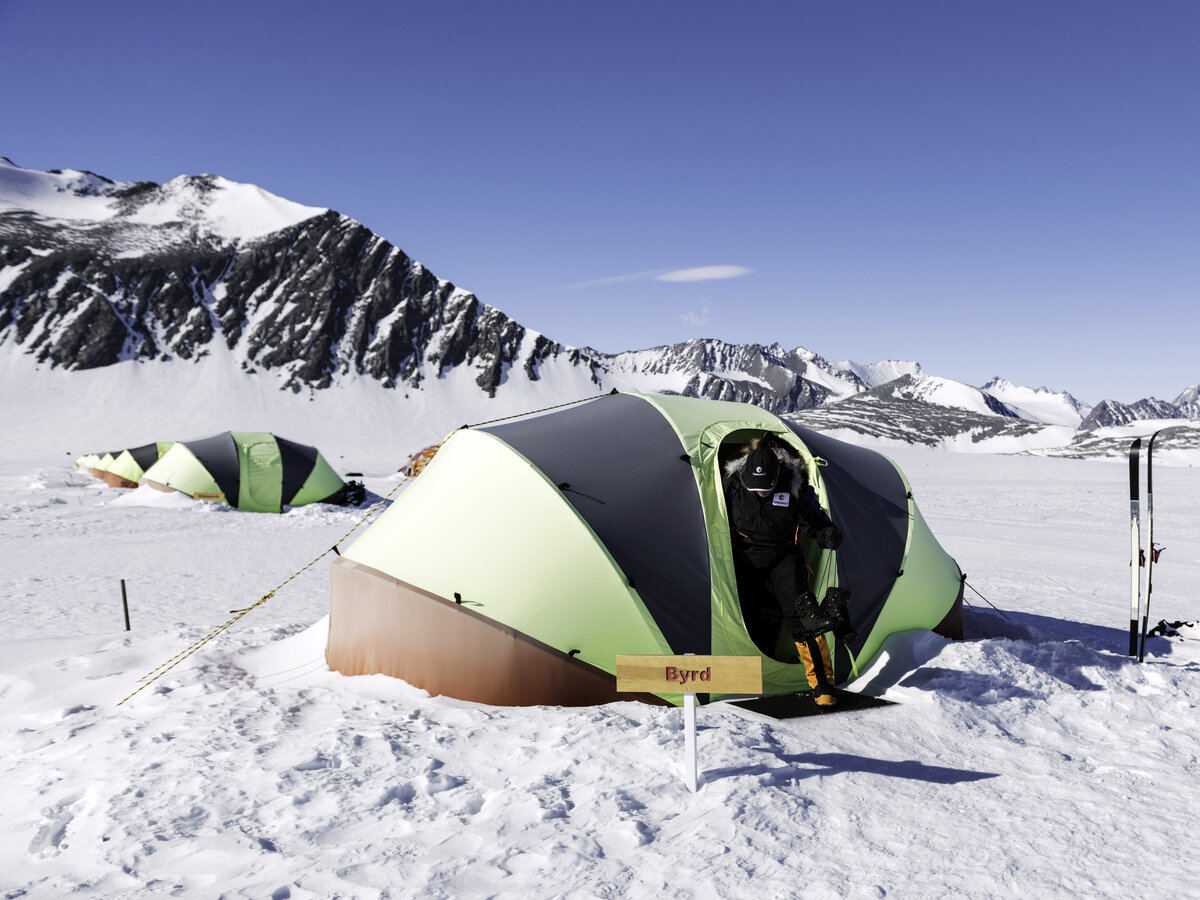
Hiker 'surfs' in the curl of a blue-ice wave, at the Drake Icefall
South Pole Flights / © Kirill Umrikhin

Road to South Pole Telescope and Dark Sector lab
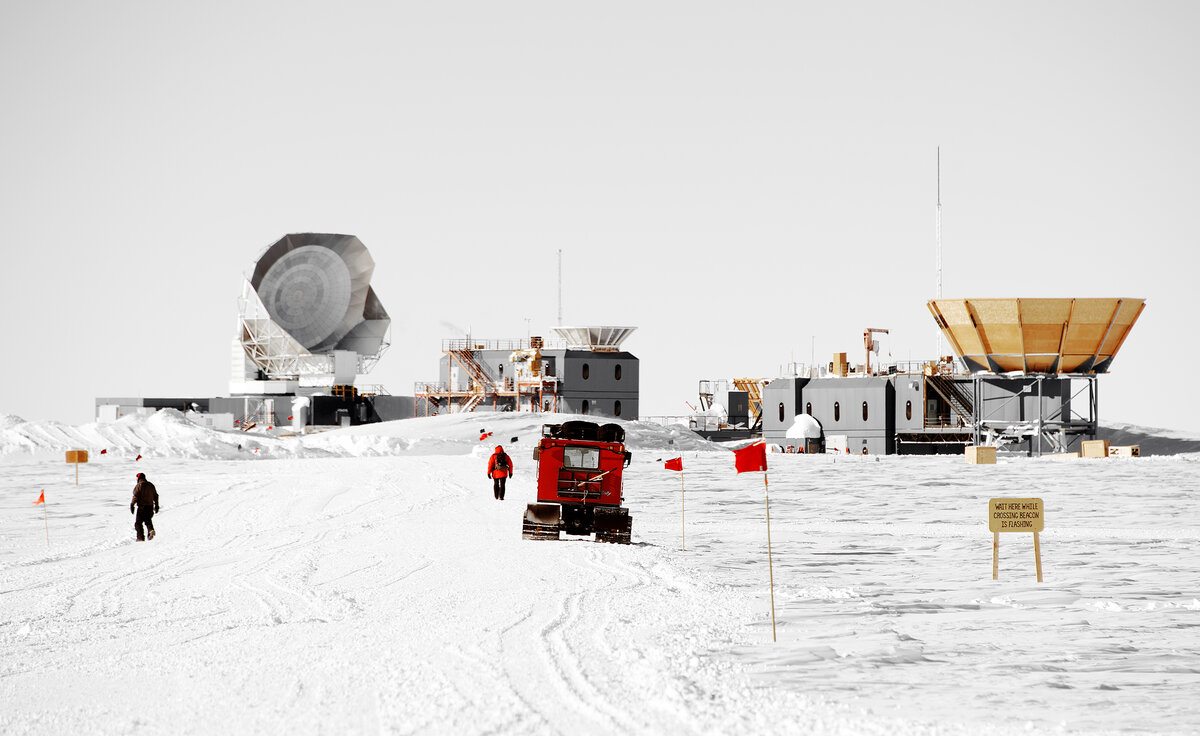
South Pole Flight guests on an excursion to Charles Peak Windscoop

Guests celebrate as the Twin Otter aircraft takes off
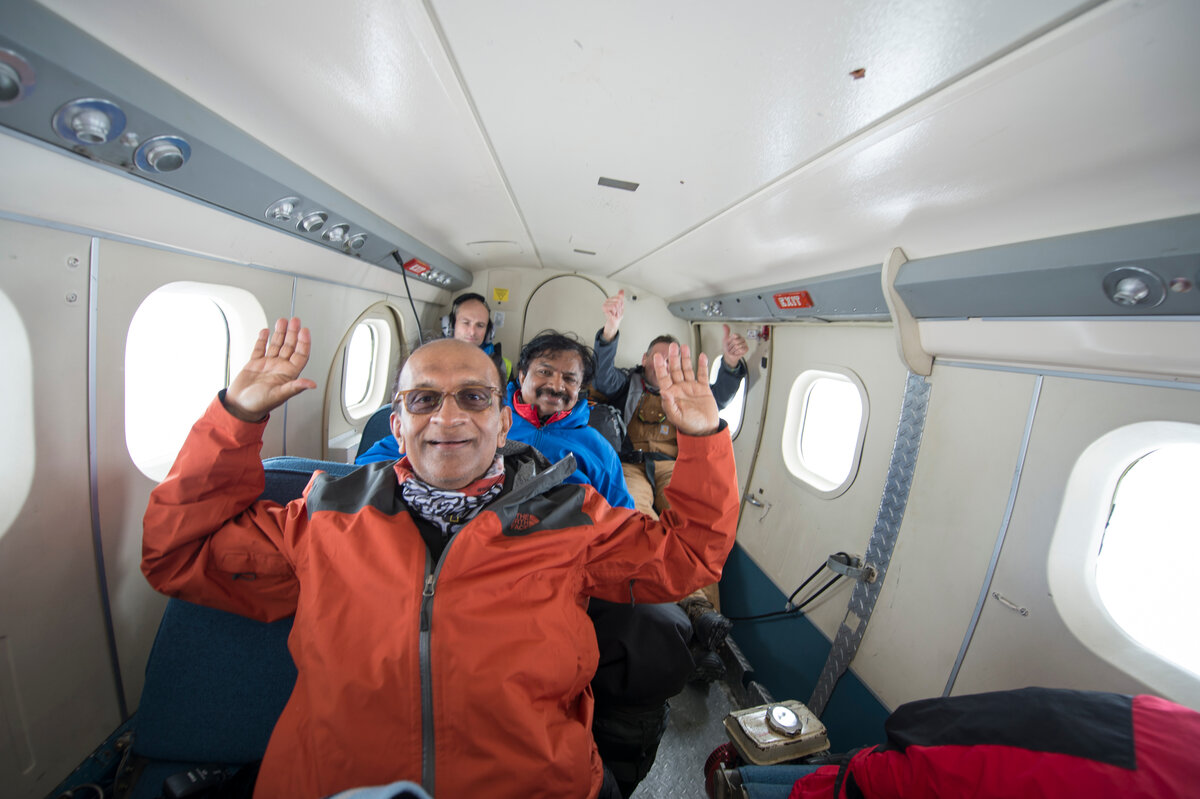
Guests take photographs at the Ceremonial South Pole
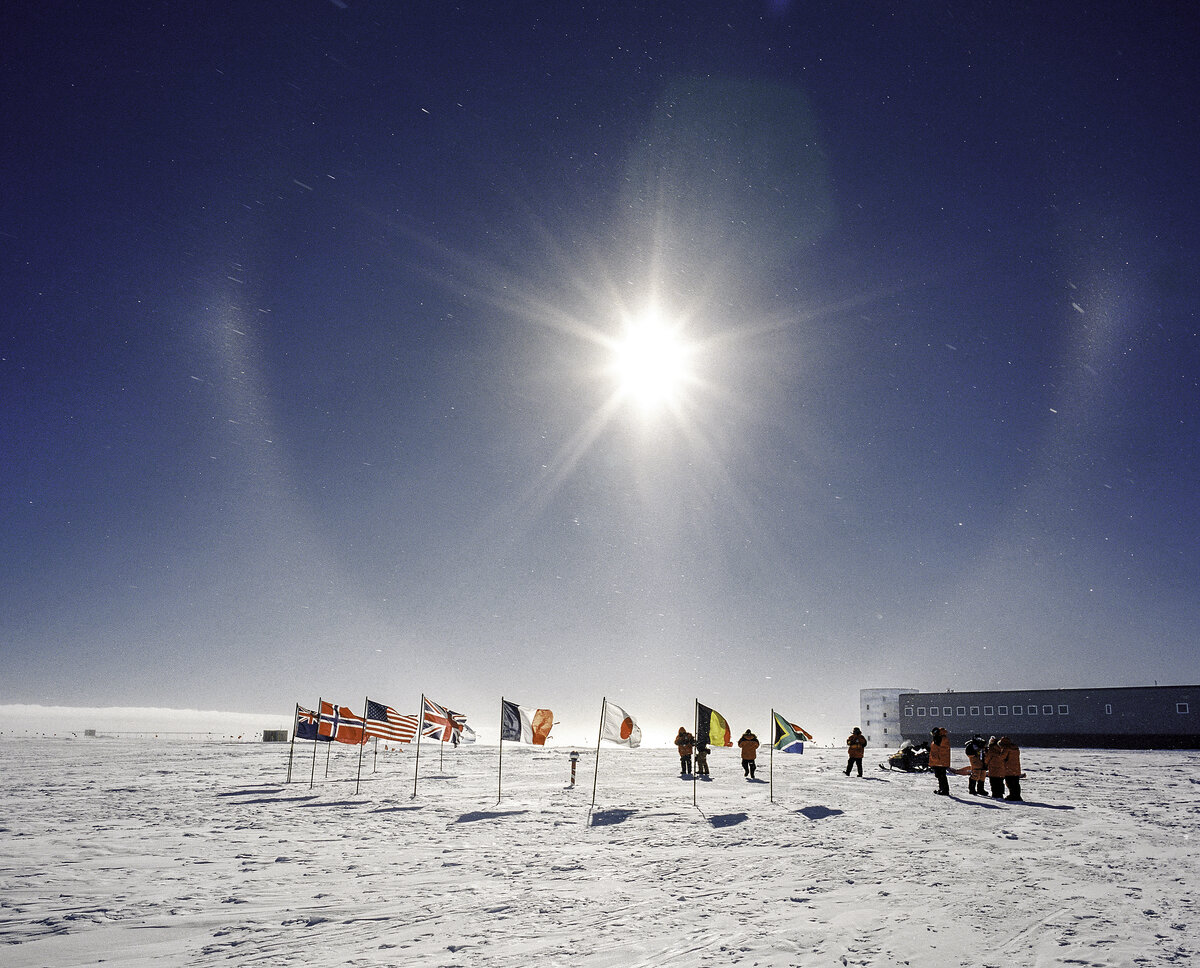
Guests use toilets at Thiel Mountain fuel cache
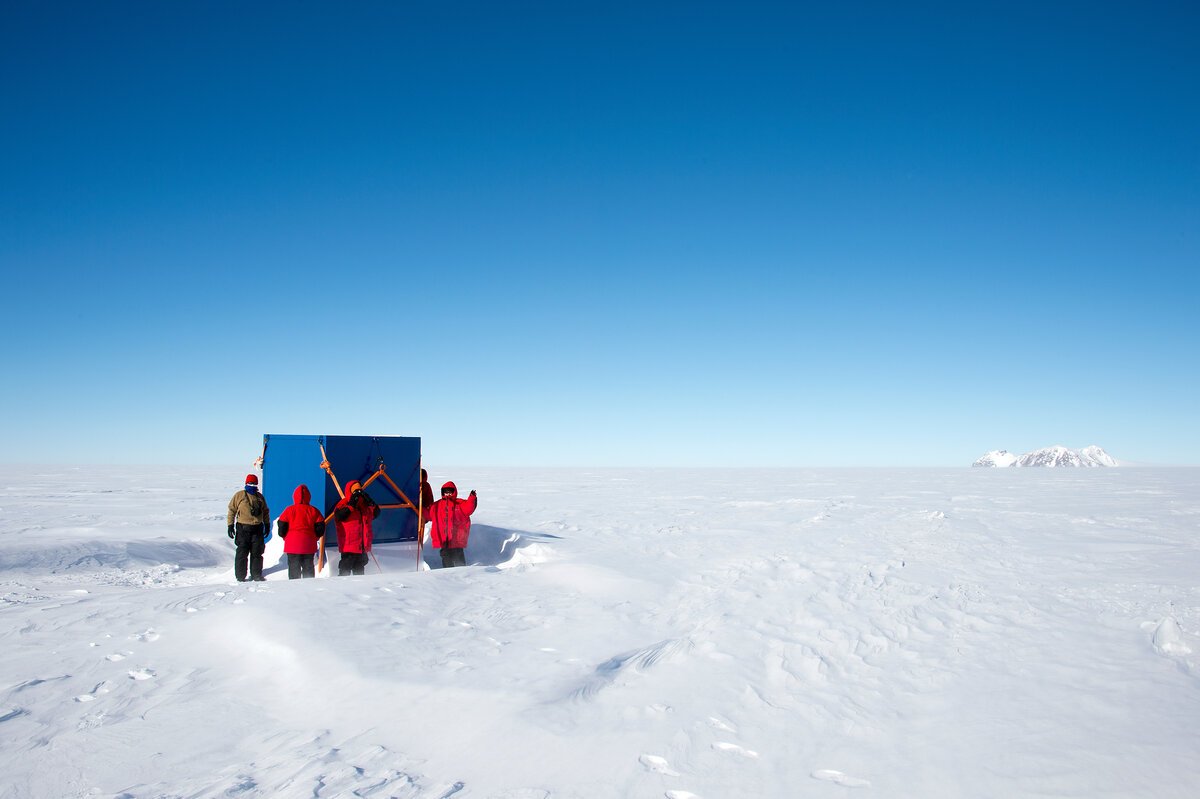
Ceremonial South Pole and flags of Antarctic Treaty nations
South Pole Flights / © Rory Martin
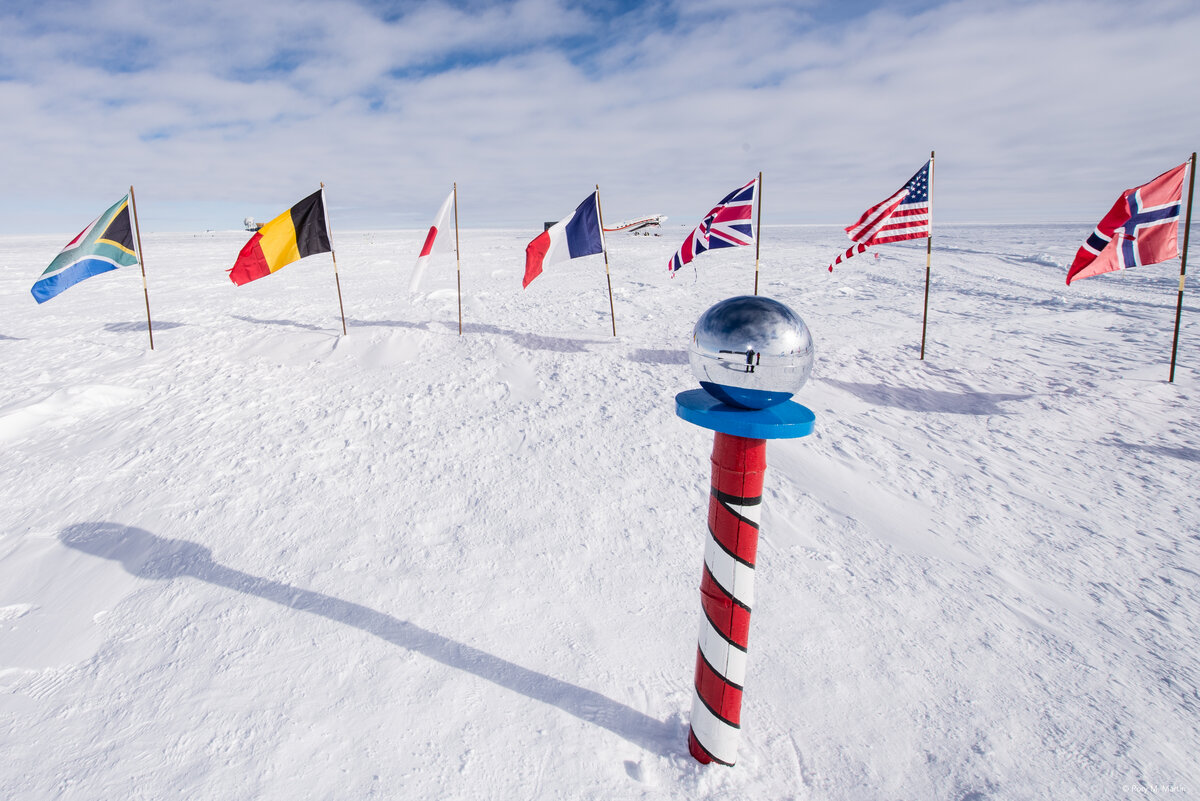
Twin otter at Thiel Mountains fuel cache
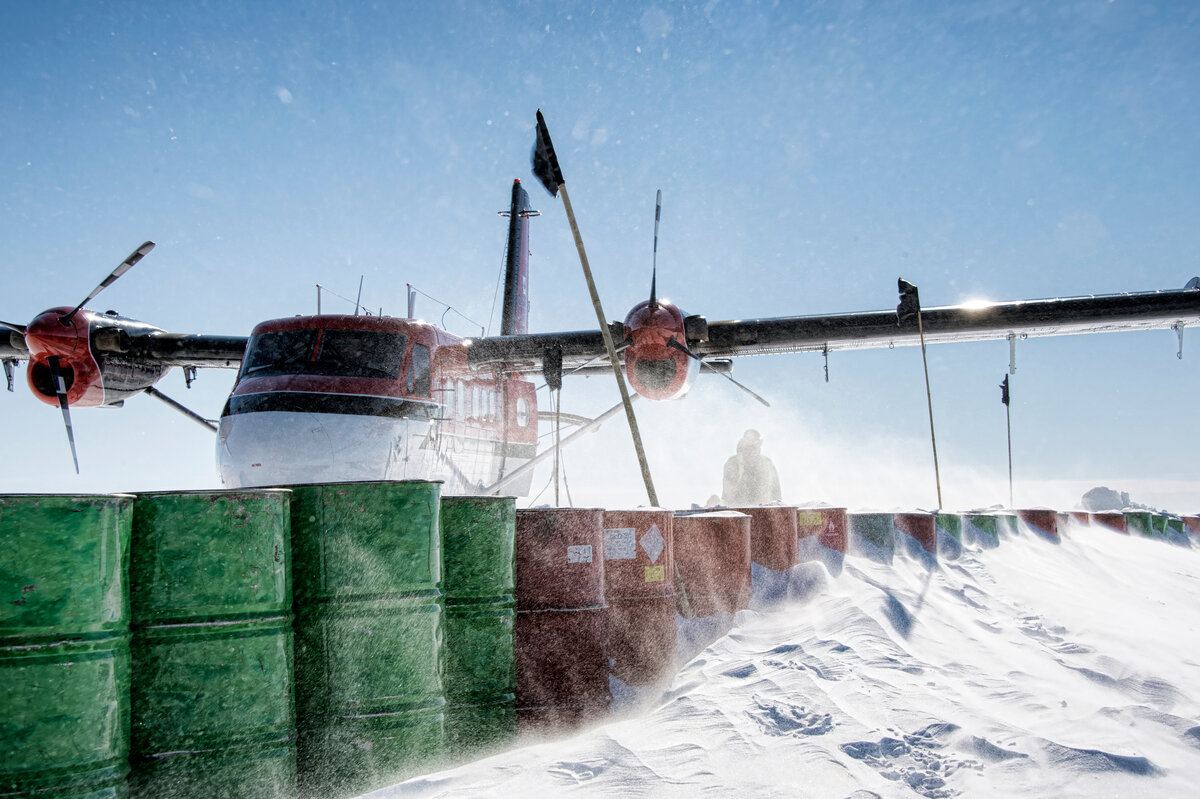
Guests celebrate at Ceremonial South Pole
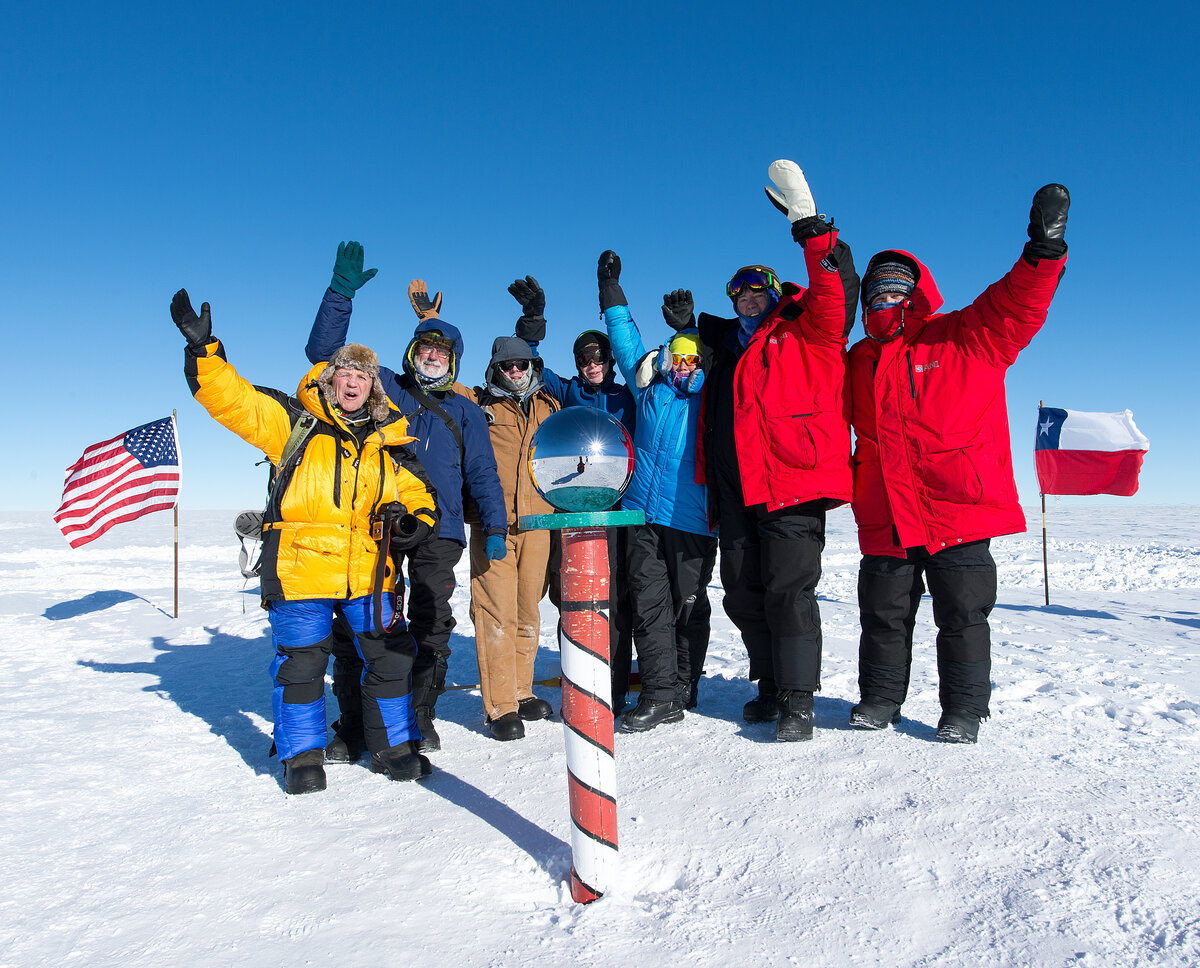
Two Twin Otters at Thiel Mountains fuel cache

Guest points to the Geographic South Pole on map
South Pole Flights / © Eric Larsen
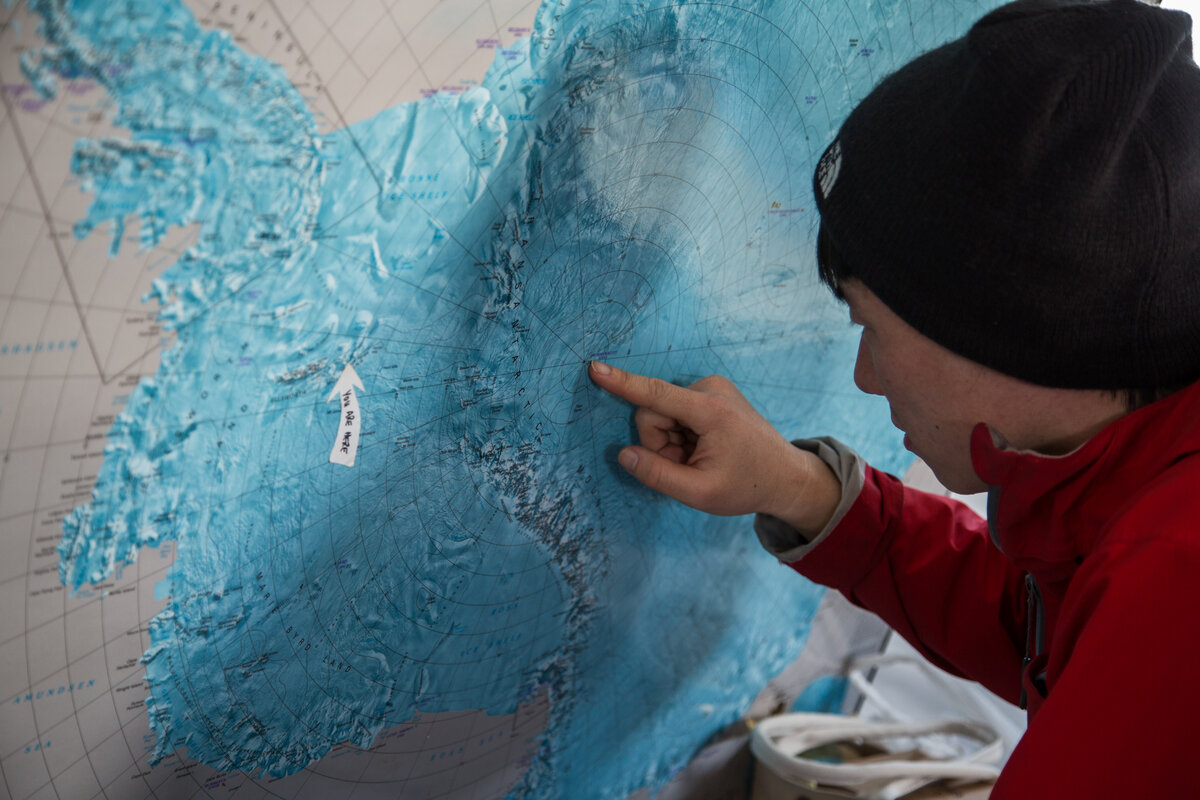
Guests hug the Ceremonial South Pole
South Pole Flights / © Bryan and Cherry Alexander
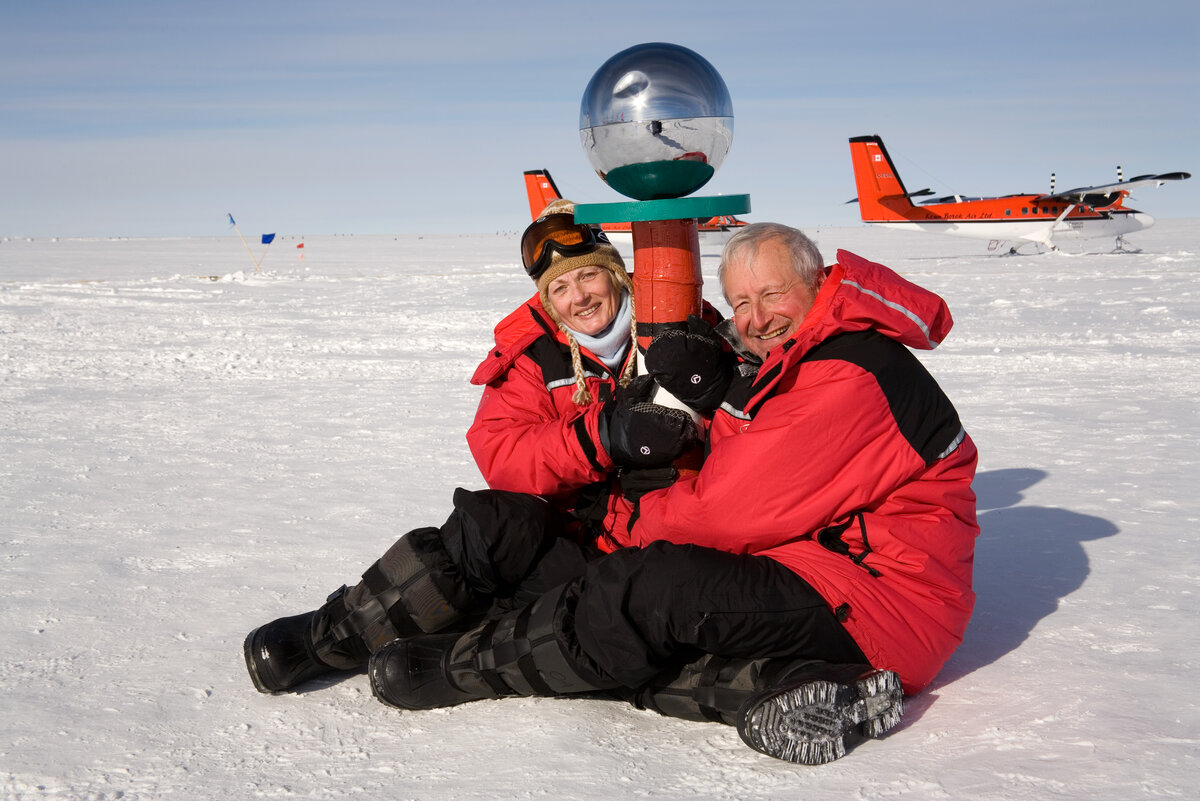
Jumping for joy upon reaching the South Pole
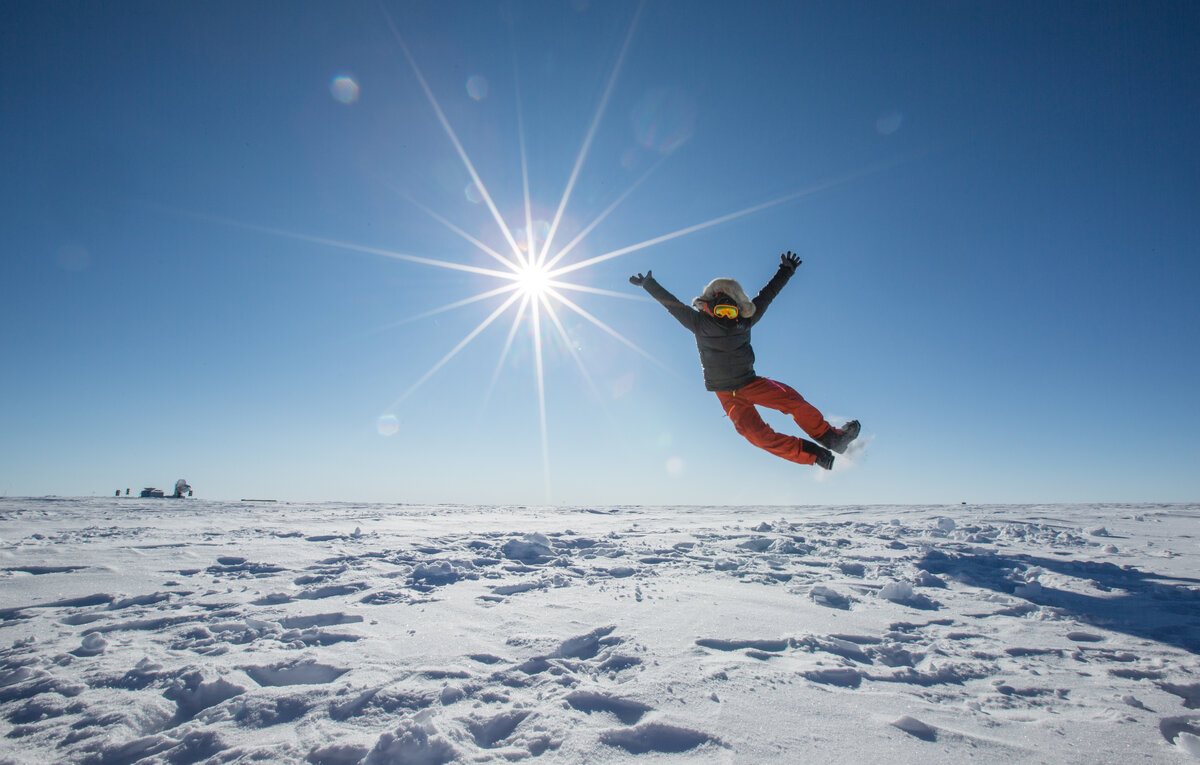
Guests enjoy hot cocoa and scones after an excursion to the Drake Icefall

Twin Otter flies past Pirrit Hills, towards South Pole

2020 Geographic South Pole Marker
South Pole Flights / © Alexey Nagaev
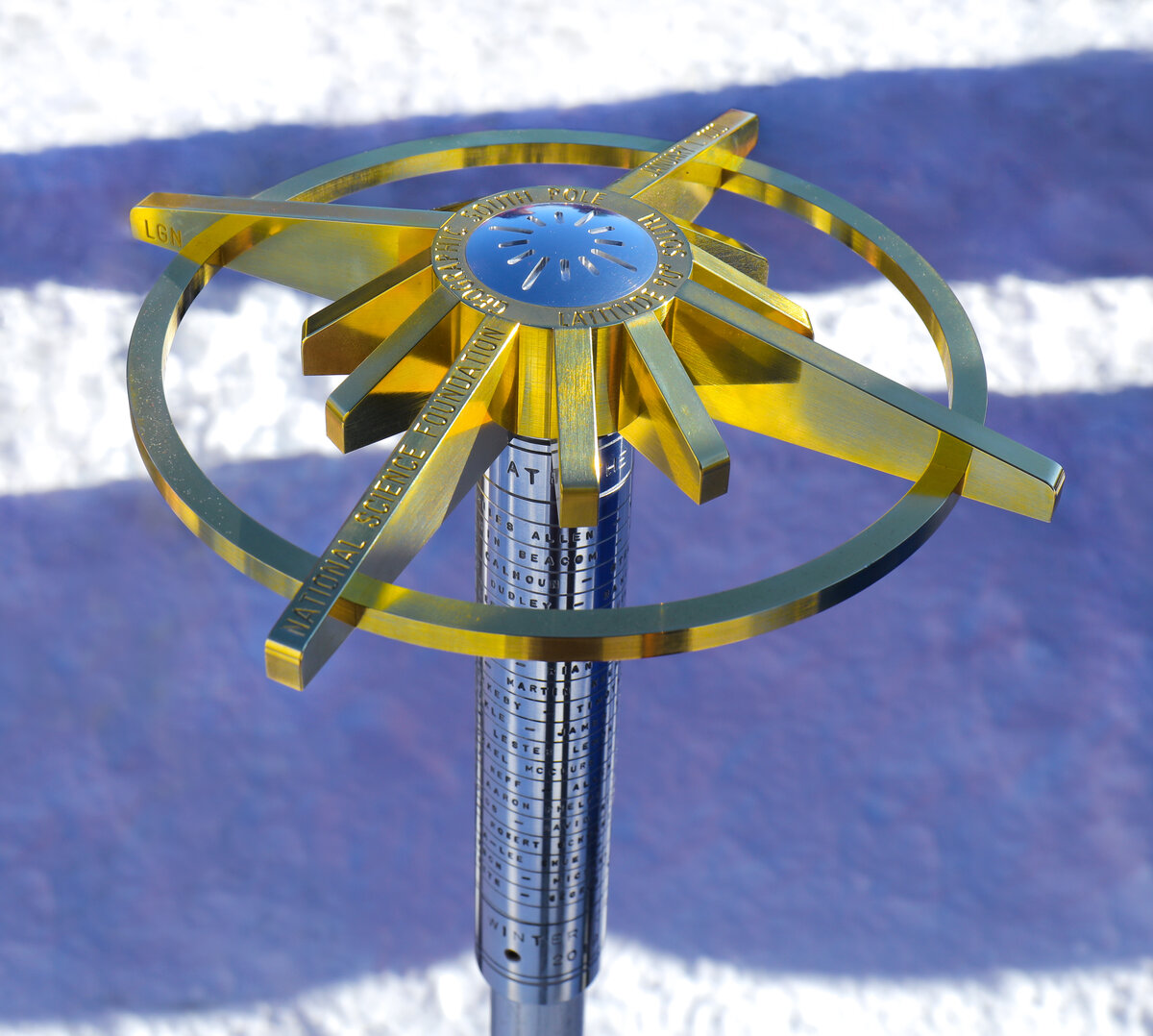
Guests prepare to board the Ilyushin on the Union Glacier blue-ice runway
South Pole Flights / © Mark Postle
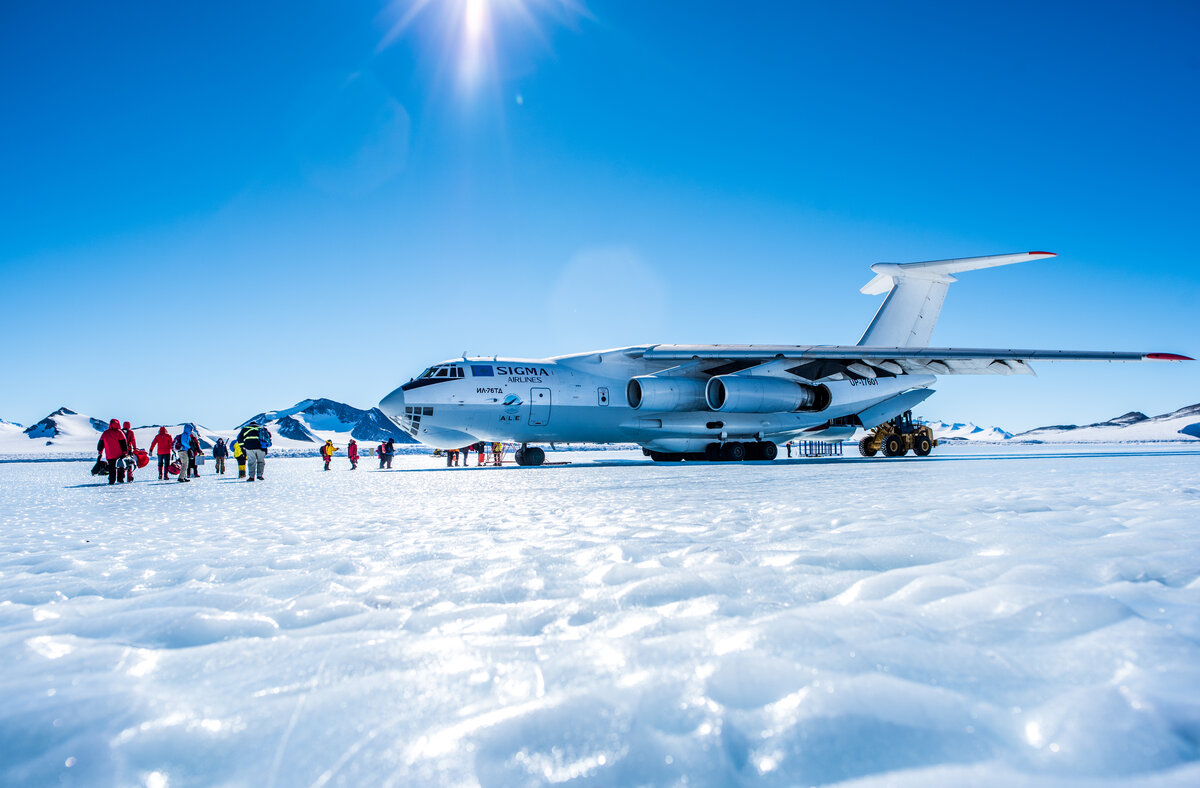
A guest ready to board his flight to the South Pole
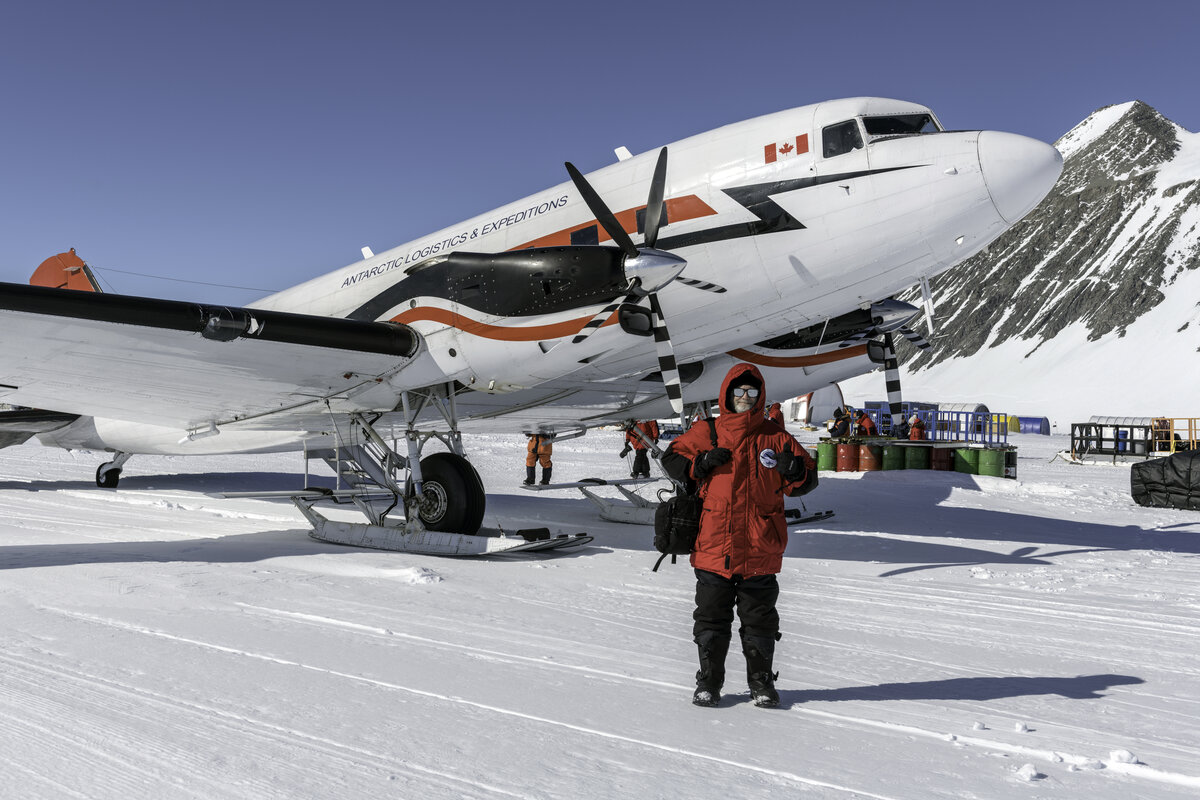
A sign pointing the way to the Visitor Center and South Pole markers

A guest looks at her reflection in the Ceremonial South Pole
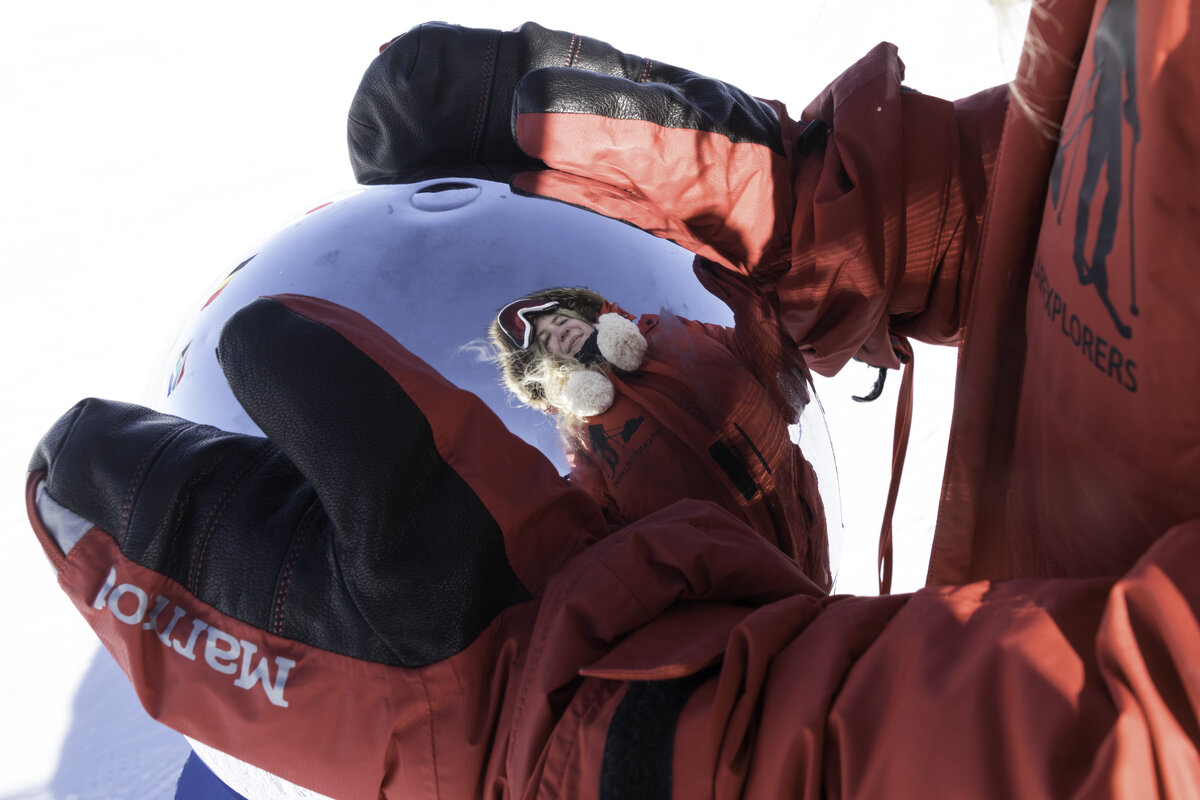
Beautiful sundogs and halos forming around the sun at the South Pole
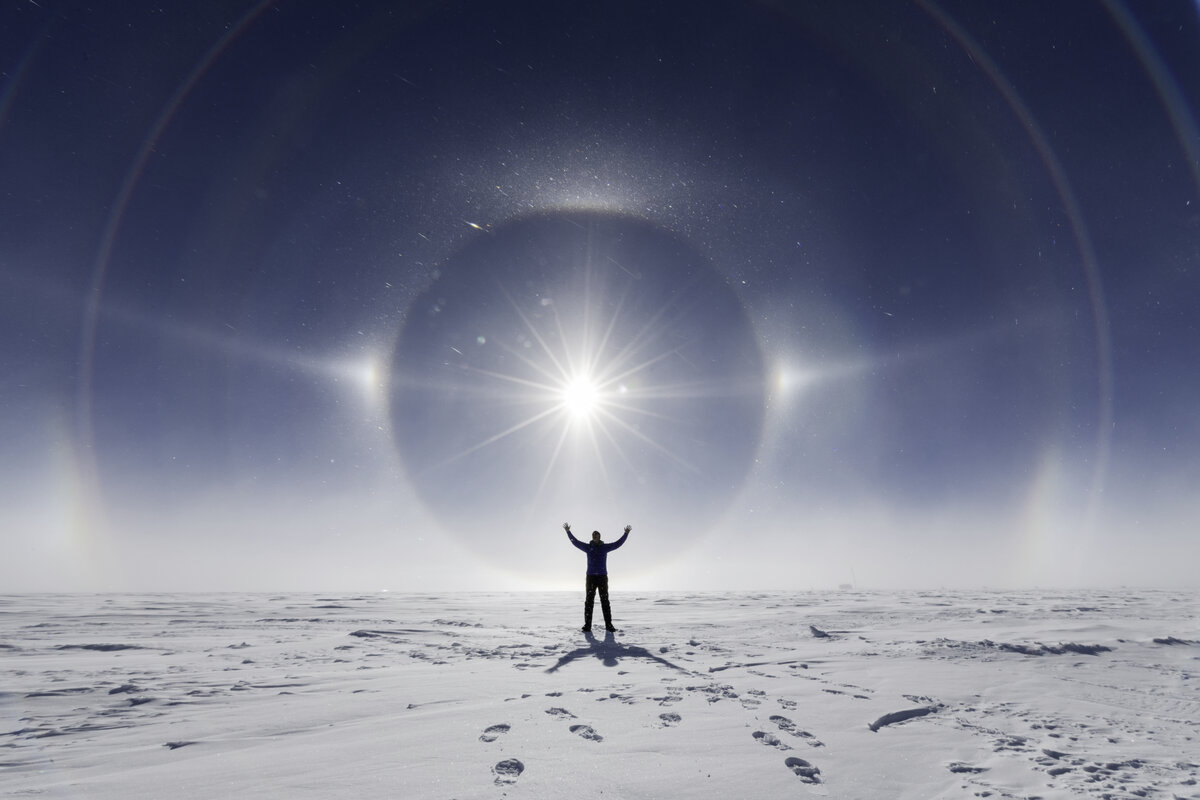
Guests visit the South Pole on a low contrast day
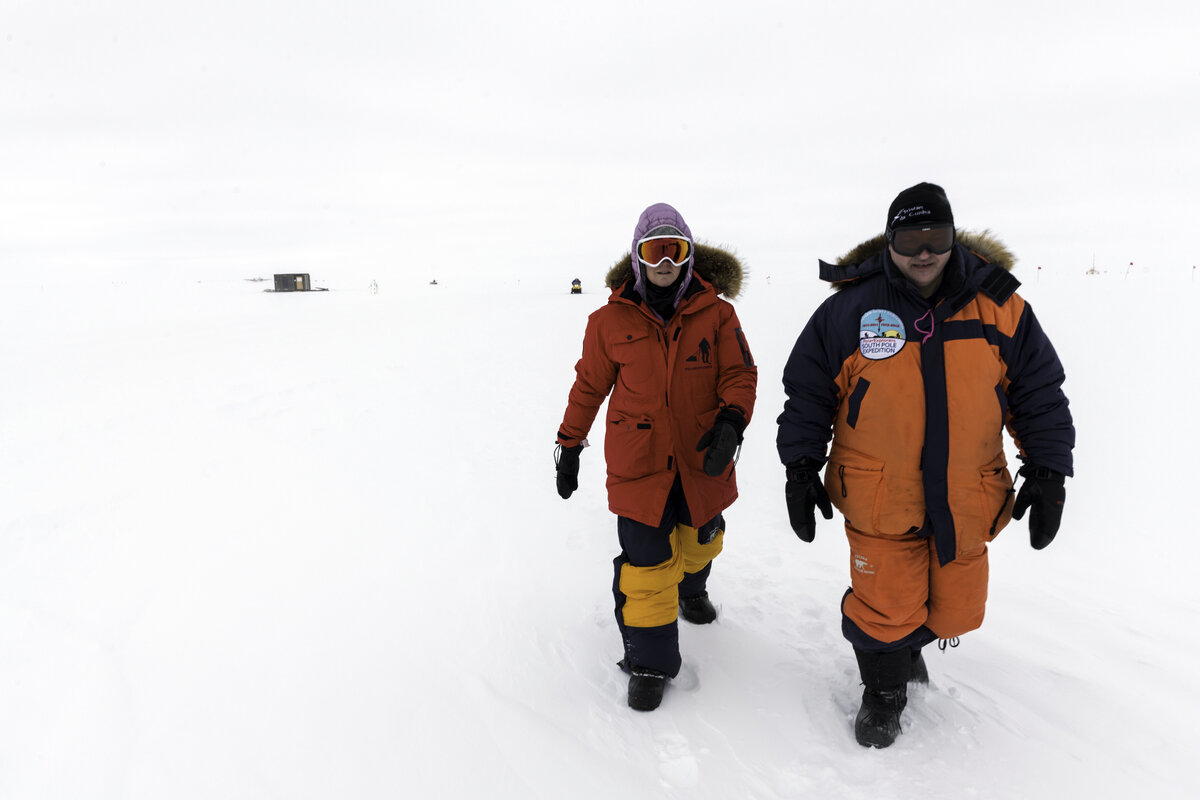
Geographic South Pole Sign with station in background
South Pole Flights / © Russ Hepburn

2014 Geographic South Pole marker
South Pole Flights / © Santiago Urrutia

GPS at South Pole shows 90 degrees south
South Pole Flights / © John Beatty
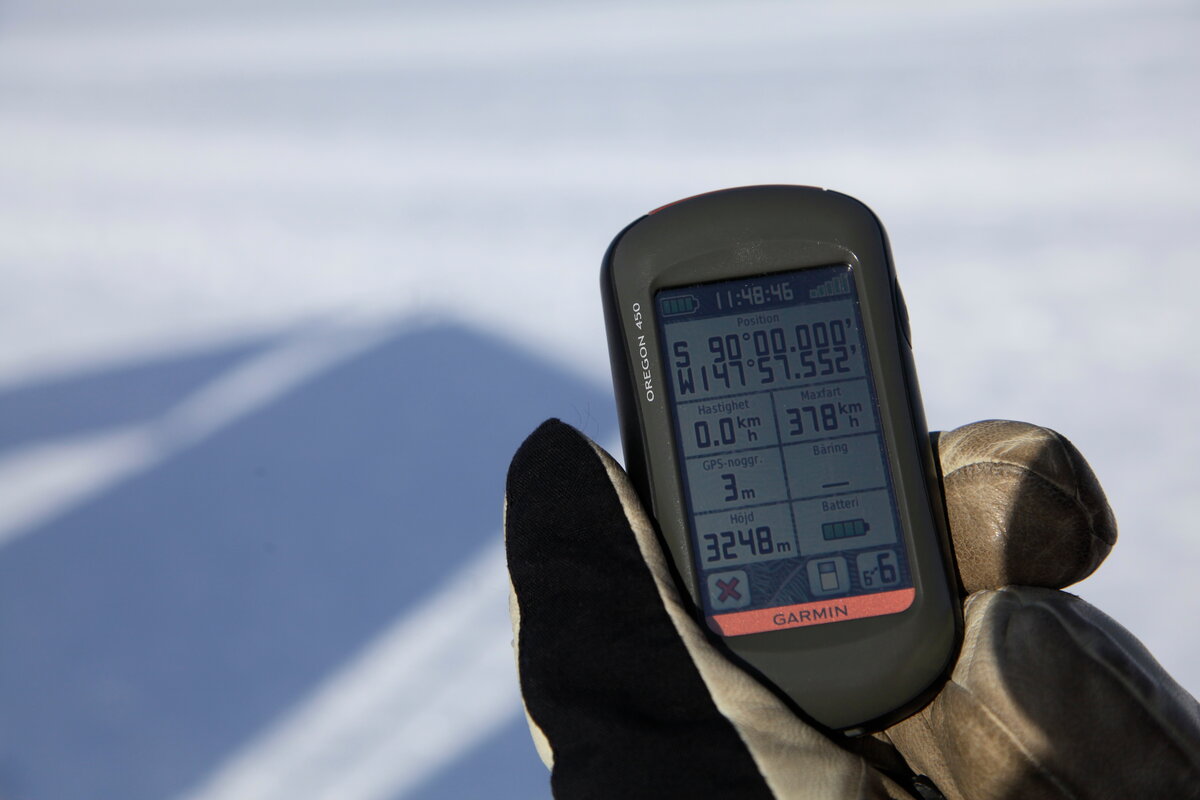
Guest kneels at the Geographic South Pole
South Pole Flights / © Adam Ungar
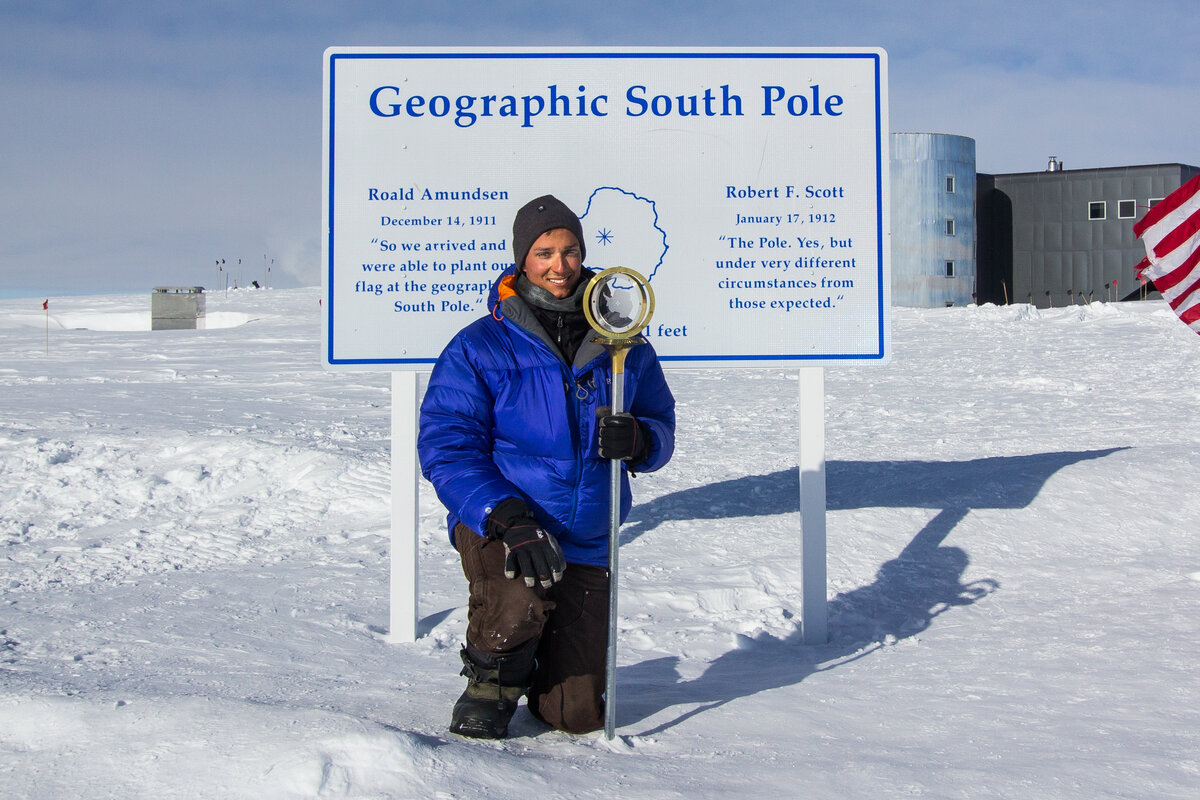
Union Glacier Camp
More from south pole flights.
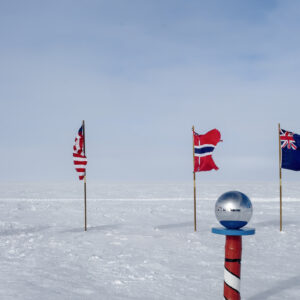
Travel to the South Pole
Oct 09 2023

Four Ways to Savor the...
Jul 02 2014

South Pole Sunrise
Sep 16 2013

Top 5 Reasons to Fly...
Jun 25 2013
Sign up for the newsletter
Thanks for signing up.
- Destinations

The Ultimate Guide to Visiting the South Pole
1. understanding the south pole, 2. best time to visit the south pole, 3. how to reach the south pole, 4. itineraries, 5. cost range, 6. essential gear and preparations, 7. safety considerations, 8. unique experiences at the south pole.
Embarking on a journey to the South Pole is an unparalleled adventure that offers a glimpse into one of the world's most remote and captivating regions. From mesmerizing icy landscapes to unique wildlife encounters, the South Pole promises an experience like no other. In this comprehensive guide, we'll provide you with essential information, expert tips, and example itineraries to help you plan your ultimate expedition to the South Pole.
Before diving into the logistics, let's explore what makes the South Pole so special. Located at the Earth's southernmost point, the South Pole is a frozen continent surrounded by the vastness of Antarctica. It boasts breathtaking landscapes comprising glaciers, ice shelves, and mountain ranges, creating an otherworldly atmosphere.
The Antarctic summer, from November to March, is the optimal time to visit the South Pole. During this period, temperatures are relatively milder, ranging from -20°C to -40°C (-4°F to -40°F). Days are longer, allowing for more exploration opportunities, and wildlife, such as penguins and seals, can be observed in their natural habitats.
Reaching the South Pole is an arduous journey, but one that guarantees an unforgettable experience. The most common method is through a guided expedition cruise, which departs from Ushuaia in Argentina or Punta Arenas in Chile. These cruises usually last around 10-20 days, with stops at various Antarctic destinations before finally reaching the South Pole.
To help you plan your adventure, we've put together two example itineraries:
a) Classic South Pole Expedition (14 days)
Day 1-2: Depart from Ushuaia, crossing the Drake Passage.
Day 3-4: Explore the breathtaking landscapes of the Antarctic Peninsula.
Day 5-6: Visit the historic Elephant Island and witness its incredible wildlife.
Day 7-10: Sail through the Weddell Sea, encountering seals, whales, and seabirds.
Day 11-13: Reach the South Pole, spending two days exploring the area and witnessing the iconic marker.
Day 14: Return to Ushuaia.
b) South Pole Adventure & Emperor Penguins (17 days)
Day 1-2: Depart from Punta Arenas and cross the Drake Passage.
Day 3-5: Explore the stunning landscapes of the South Shetland Islands.
Day 6-9: Witness the majestic beauty of the Antarctic Peninsula, visiting research stations and observing wildlife.
Day 10-13: Travel to Snow Hill Island, where you can observe Emperor Penguins in their natural habitat.
Day 14-16: Journey to the South Pole, spending three days exploring and capturing this unique experience.
Day 17: Return to Punta Arenas.
Visiting the South Pole is an investment, and costs can vary based on factors such as the length of the expedition, the vessel, and the level of luxury. On average, a 10- to 20-day expedition can range from $10,000 to $30,000 (USD) per person. It's crucial to consider additional expenses, such as travel insurance, gear, and flights to the embarkation point.
Given the extreme conditions, packing the right gear is essential for your safety and comfort. Here's a list of must-have items:
Insulated and waterproof clothing
High-quality winter boots
Thermal underlayers
Windproof and waterproof outer layers
Sunglasses and sunscreen
Cold-weather accessories (hats, gloves, scarves)
Camera equipment and spare batteries
Additionally, obtaining travel insurance that covers medical emergencies and trip cancellations is highly recommended.
Visiting the South Pole requires careful planning and adherence to safety guidelines. Always follow the instructions of your experienced guides and crew. Cold weather and harsh conditions demand caution, and staying hydrated, avoiding frostbite, and practicing responsible wildlife viewing are vital.
a) Witnessing the Midnight Sun: During the Antarctic summer, the South Pole experiences the phenomenon known as the Midnight Sun. With 24 hours of daylight, you can marvel at the stunning beauty of the endless polar landscape.
b) Exploring Ice Caves: Delve into the mesmerizing world beneath the icy surface by exploring ice caves. These natural formations offer an ethereal and unique experience.
c) Meeting Penguins: Encounter various penguin species, such as the iconic Emperor Penguins, as they waddle across the ice or nest in large colonies.
Visiting the South Pole is a once-in-a-lifetime adventure that immerses you in a world of ice, awe-inspiring landscapes, and incredible wildlife encounters. By following this ultimate guide, you can plan your journey with confidence, ensuring a safe, memorable, and unforgettable expedition to the Earth's southernmost point. Embrace the spirit of exploration and prepare to embark on an extraordinary adventure in the pristine wilderness of the South Pole.
Other Articles

Unique and Off-beat Festivals from Around the World

Explore the Underwater World Like Never Before with Sea Trek Helmet Diving
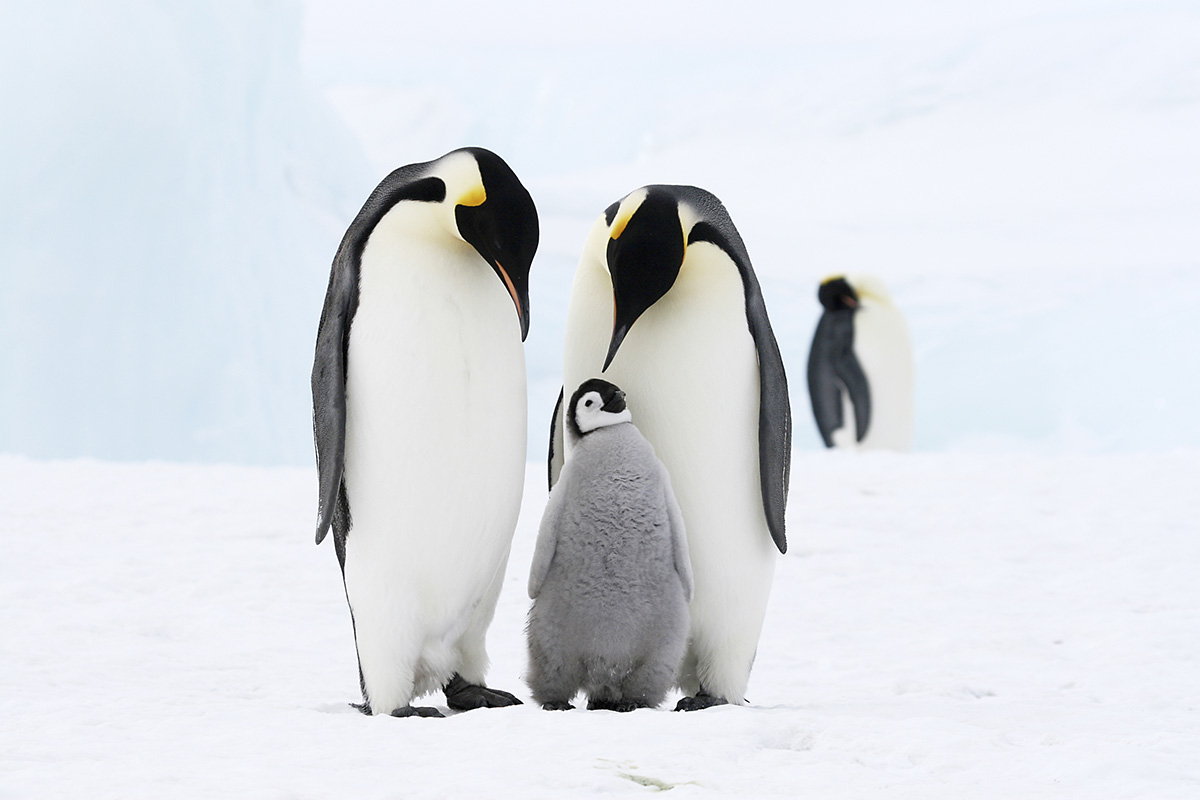
Journey to the South Pole: How to Travel to Antarctica
How to Travel to Antarctica is a question that sparks curiosity and adventure in many.
Visiting Antarctica , a continent that has seen few human footprints, is an exciting prospect.
Yet, traveling to Antarctica may seem daunting. After all, it's not your everyday vacation destination!
But here’s some good news: with careful planning and preparation, this dream journey can become a reality.
You might be wondering how feasible it really is for you to explore the icy wilderness of Antarctica?
Fret not! This guide will show you exactly how to travel to Antarctica , making what seems impossible entirely possible!

An Antarctic expedition cruise explores diverse wildlife, with zodiac landings, Antarctic exploration and charming English architecture.
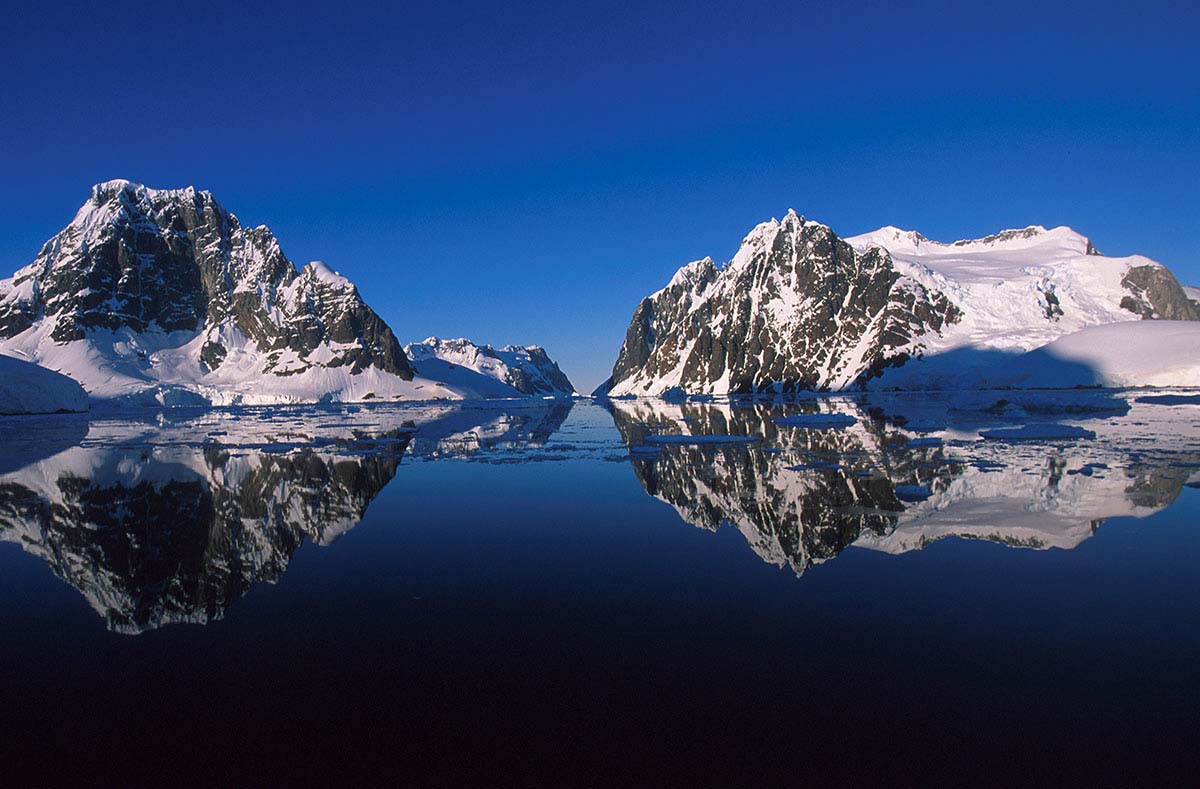
Set off from Punta Arenas, relish four days of Antarctic wilderness, and culminate with a scenic glacial hike and a tour in Ushuaia.
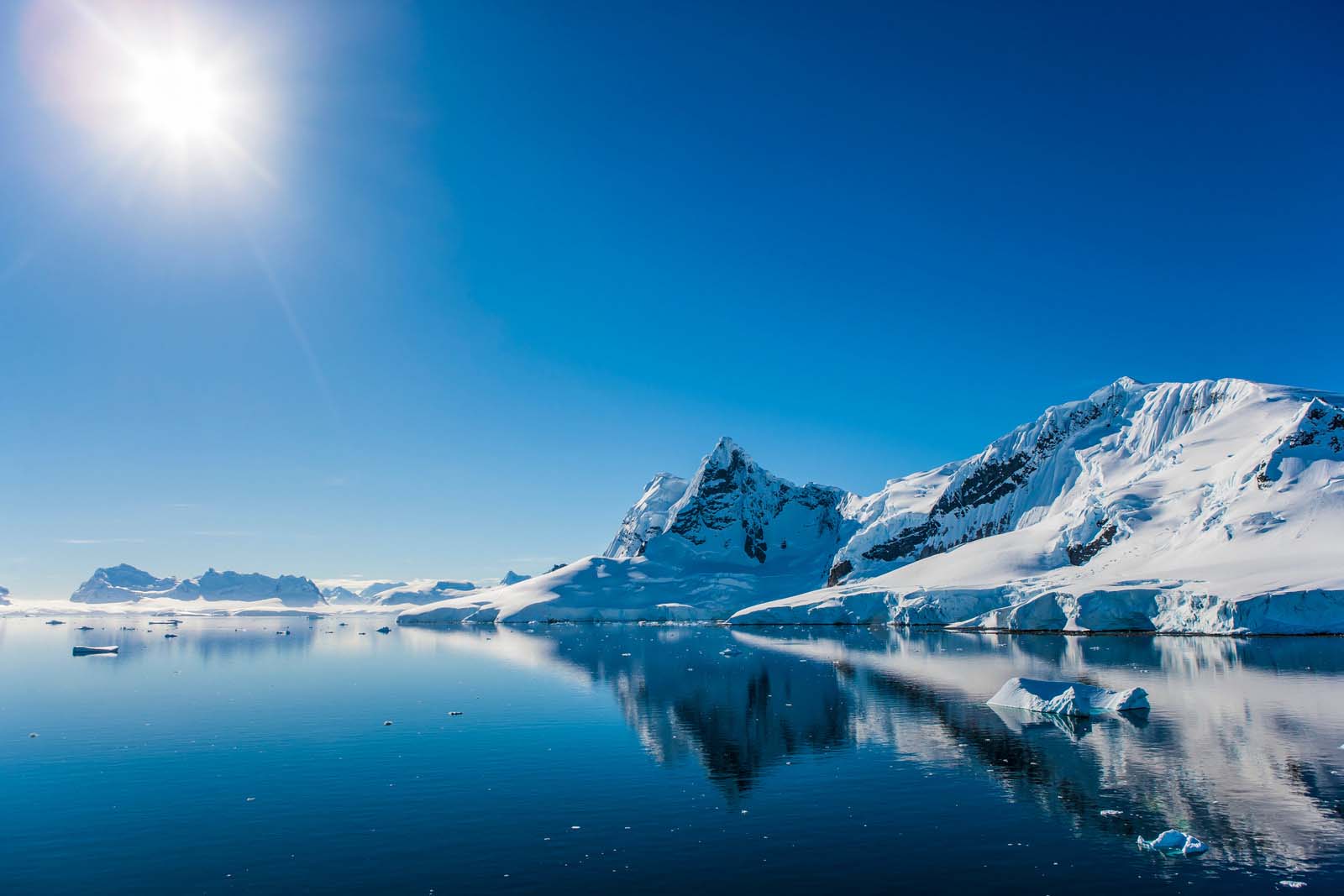
Embark on the Penguin Safari for an expedited journey to South Georgia Island.
Exploring Antarctica: An Overview
Unraveling the geography, diving into history, planning your trip to antarctica.
- Choosing The Best Time To Visit
- Deciding On Your Travel Style
- Selecting A Suitable Route For Your Journey
Embarking on the Adventure: Cruising to Antarctica
Cruise types: finding your perfect fit, your cruise experience unveiled, selecting your ideal journey, flying to antarctica, the fly-cruise option: a quick route to adventure, a few things to keep in mind when flying, luxury air cruises: soaring over the ice cap, what to do in antarctica, penguin safari and wildlife watching, kayaking and camping trips.
- Camping on Antartctica
Your Night Under The Stars
Tents and equipment, where to stay in antarctica, luxury lodges: comfort amidst ice, cruise ship cabins: your floating home, camping on ice floes: an unforgettable experience, making your trip memorable, capturing memories with photography, antarctica photography workshop, photography workshops led by experts, packing your gear for polar conditions, dive into adventure activities, faqs in relation to how to travel to antarctica, how to travel to antarctica, can i legally go to antarctica, how to visit antarctica responsibly.
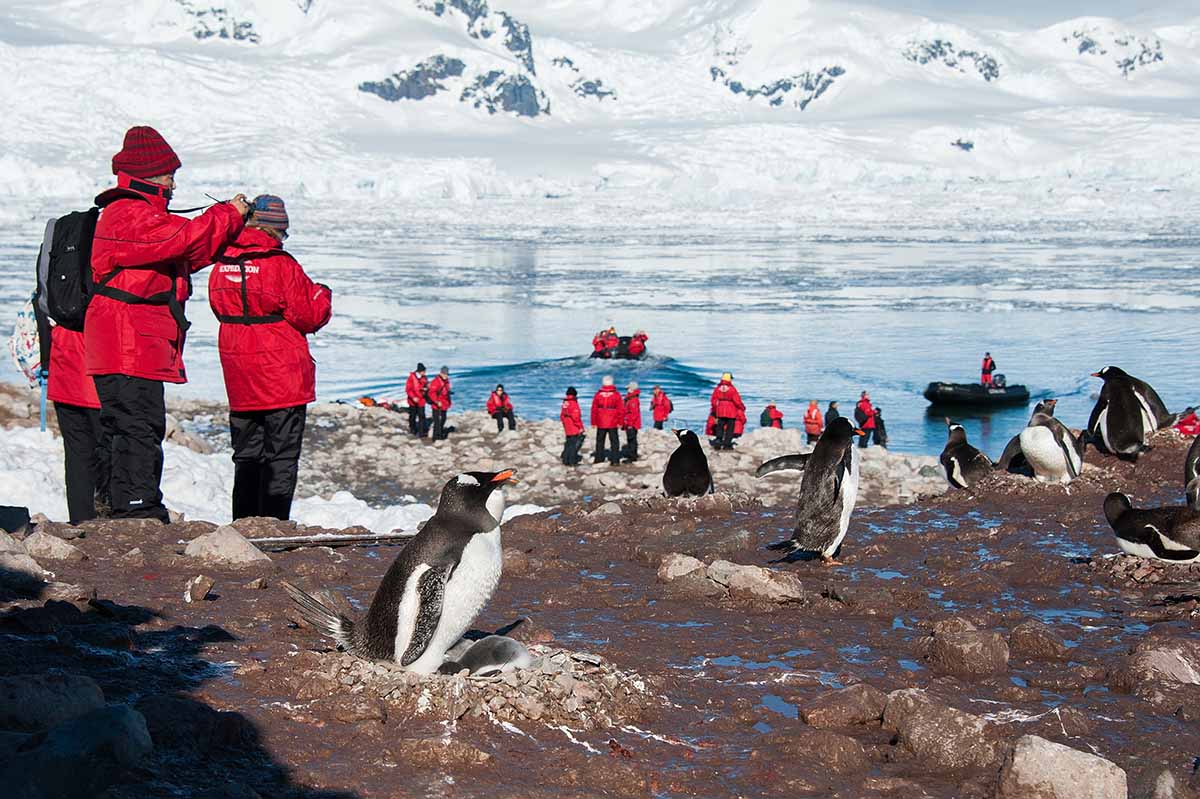
Learn how to travel to Antarctica , from planning your trip, choosing accommodations to exciting activities. Dive in now.
The enigmatic allure of Antarctica lies in its untouched, pristine beauty. The continent is a land of extremes - it's the coldest, driest, and windiest place on the planet. No other place on earth is like it.
Antarctica showcases breathtaking landscapes that are unparalleled anywhere else on earth. From towering icebergs dotting the Antarctic Peninsula to vast expanses of sea ice surrounding it, nature has sculpted masterpieces here.
Beyond mainland Antarctica lie remote islands like Diego Ramirez and Snow Hill Island - each offering unique exploration opportunities during your visit to this icy wonderland.
Your journey through time begins with tales from early expeditions by pioneers such as Roald Amundsen, which provide intriguing insights into human endurance against harsh conditions while visiting Antarctica. Read more about these explorers' adventures here.
Penguin Safari Epic: A Must-Do Activity
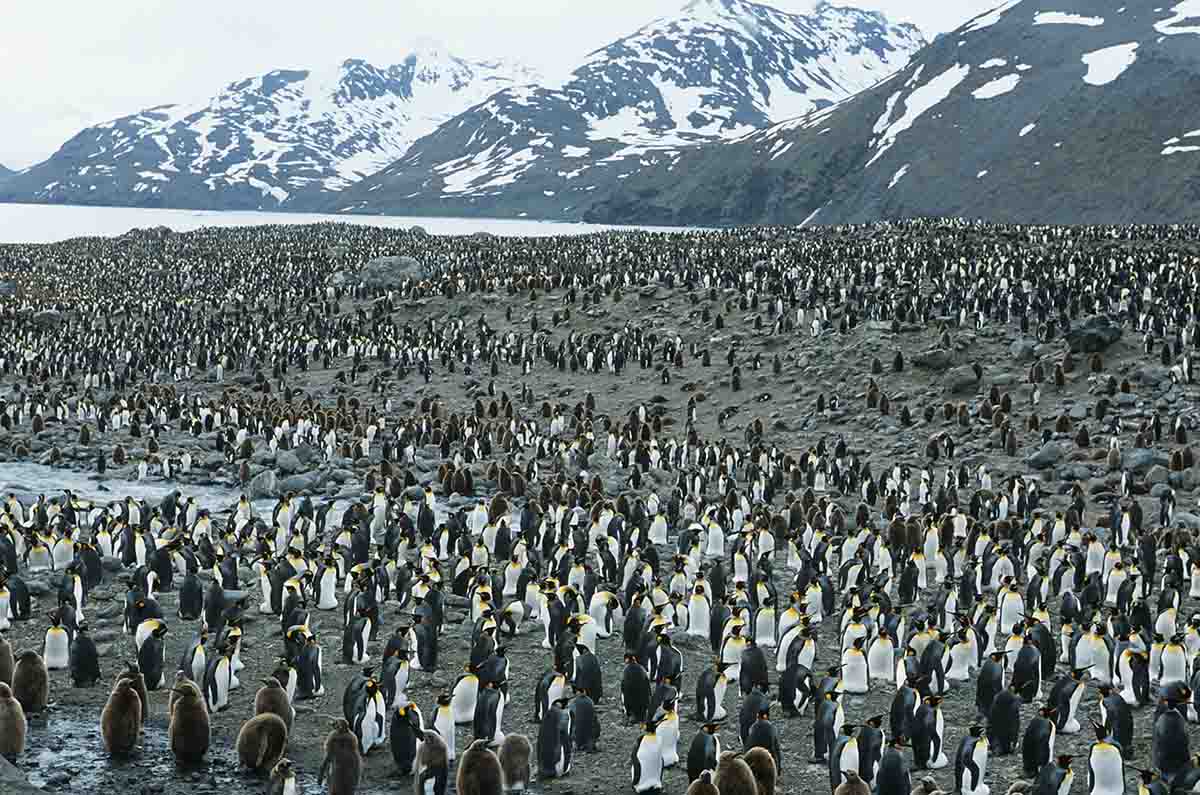
Remember, though; always respect wildlife and the environment since our small actions can have a significant impact on fragile ecosystems.
If photography interests you, then gear up for some spectacular shots. Penguin photography offers travelers an opportunity to capture thousands of penguins from several species in their natural habitat - a rare treat indeed.
- Embark on an extraordinary expedition to the South Pole, where the awe-inspiring Antarctic spring takes hold and blankets everything in a serene hush. This incredible adventure may take you beyond the mainland to explore the remote southernmost regions such as the south shetland Islands, south Georgia via the legendary Elephant, a route that was once fiercely pursued by numerous explorers including the legendary Shackleton.
So get ready... an unforgettable voyage filled with awe-inspiring vistas beckons
Key Takeaway:
Traveling to Antarctica offers a unique, awe-inspiring experience. From its untouched landscapes and historical tales of endurance to photography opportunities with penguins and respecting fragile ecosystems - it's an adventure like no other. So gear up for this unforgettable voyage.
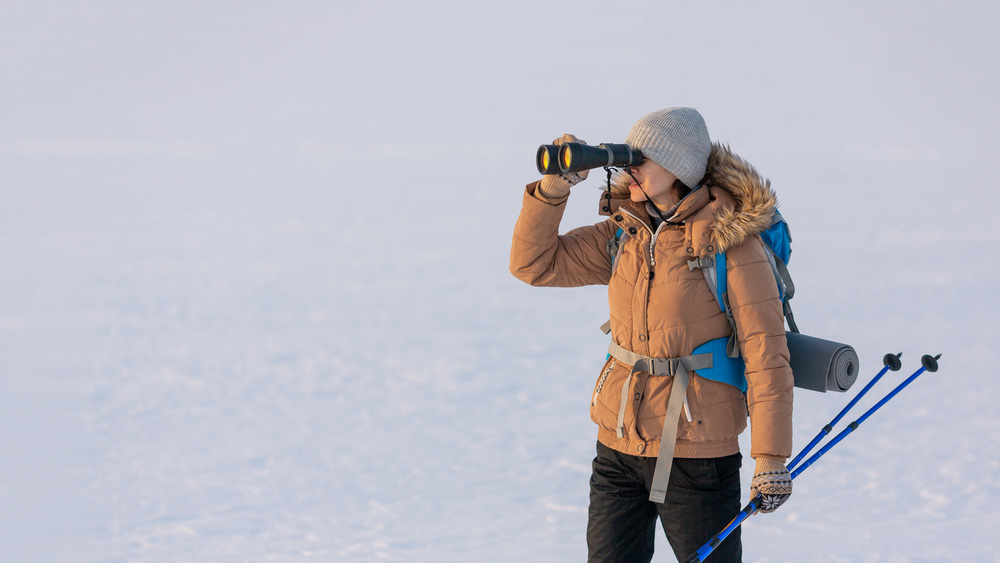
If you're thinking of venturing to Antarctica, there are several elements that require careful thought. From choosing the best time for your trip to deciding on how you want to travel and explore - every detail matters.
The following guide will help make planning this epic journey easier while ensuring a memorable experience in the Antarctic wilderness.
1. Choosing The Best Time To Visit
Your adventure begins with selecting when exactly you wish to set foot on this icy continent. Summer months from November through March provide milder weather conditions, making it an ideal period for most tourists who prefer up-close encounters with seals, penguins, and whales amidst temperatures reaching 20 degrees Fahrenheit at times.
If, however, witnessing the wonderfully powerful Antarctic autumn or experiencing sea ice adventures is what excites you more, then consider off-peak seasons. But do prepare yourself mentally for colder climates and possible changes in plans due to harsher environmental conditions.
2. Deciding On Your Travel Style
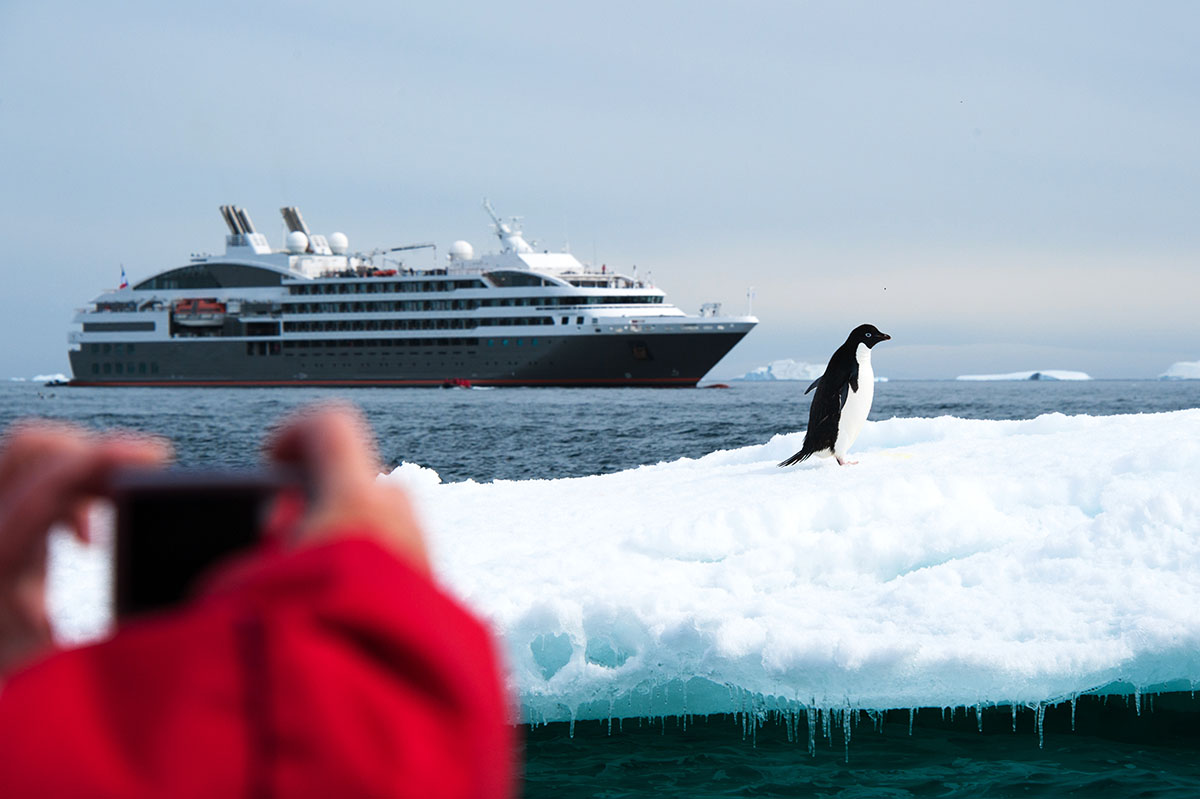
You must also decide how exactly you would like t o navigate around the vast expanses of Antarctica's pristine landscapes , depending upon personal preferences towards luxury experiences versus thrill-seeking adventures. This might involve kayaking amongst icebergs under the pure Antarctic silence offered by companies such as Quark Expeditions, known for their unique adventure activities and small ships .
Luxury lovers can opt for upscale expedition ships that typically carry less than 200 passengers, offering gourmet dining options, comfortable accommodations, and panoramic views of the surrounding scenery. Whereas those seeking something different may choose to embark on journeys involving camping trips and other exciting outdoor pursuits instead.
3. Selecting A Suitable Route For Your Journey
A popular route starts in Buenos Aires , where travelers disembark from expedition vessels bound for Ushuaia, Argentina's southern tip, before crossing the Drake Passage and heading towards the Antarctic Peninsula. Perhaps even further south if they've opted for longer voyages, encompassing visits to Diego Ramirez and the Antarctic Express Snow Hill Emperor Penguin Quest destinations. All of this is dependent upon prevailing sea conditions and the duration of the planned stay, respectively.
An alternative choice if you are looking for ultimate luxury could be charter a private expedition yacht.
Key Takeaway:
Planning your Antarctic journey involves careful decision-making. Choose the best time to visit, considering wildlife encounters and weather conditions. Decide on your travel style - luxury or adventure-filled experiences. Finally, select a suitable route that aligns with your desired destinations and trip duration.
The allure of visiting Antarctica is undeniable. The epic high antarctic adventure south pole bound beckons with its icy landscapes and unique wildlife. But how do you get there? One immersive way to explore this remote part of the world is through an expedition cruise.
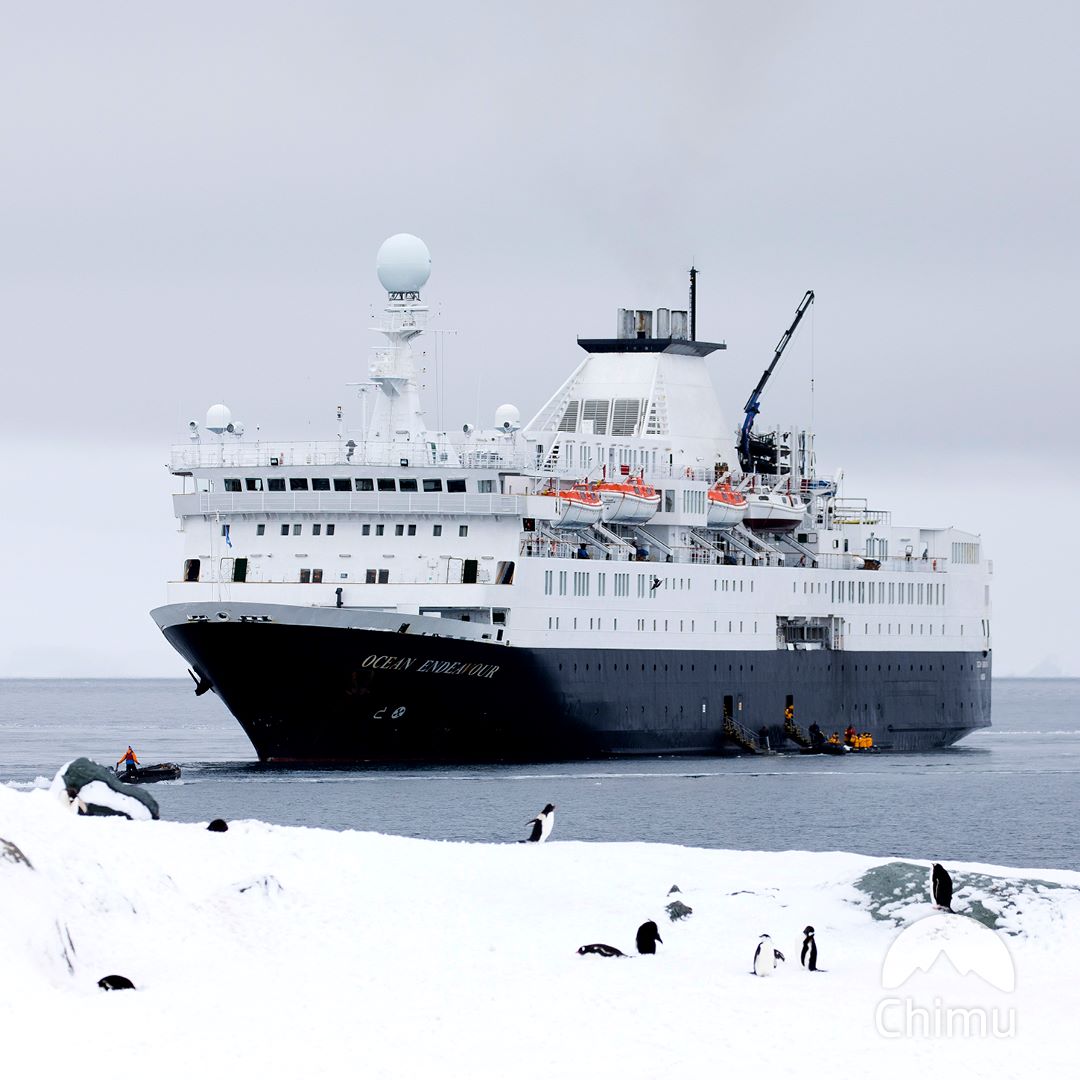
Different strokes for different folks - that's true even when it comes to cruising in Antarctica . Whether your heart beats faster at spotting leopard seals, school's of orca, whales or penguin colonies during Antarctic photography sessions or if you're intrigued by historical routes like the route of Shackleton, there's something for everyone.
- Penguin Safari Epic: This type focuses heavily on wildlife encounters, perfect for animal lovers wanting unforgettable experiences such as adding on South Georgia and the Falklands.
- Historical Exploration: These journeys trace paths charted by early explorers while sharing their stories along these historic routes.
An expedition cruise isn't just about getting from point A to B; it offers pure Antarctic silence surrounds where sea conditions become unpredictable but wonderfully powerful Antarctic autumn begins. Expedition ships typically carry between 50-200 passengers, allowing them closer access into narrower channels amidst sea ice which larger vessels cannot navigate through safely due to potential iceberg collisions.
Your travel style should guide your choice - are you seeking serenity amid stunning glacial vistas or adrenaline-pumping adventures like kayaking amongst floating ice formations? Perhaps camping under starlit skies appeals more?
Antarctica, a land of pure Antarctic silence that surrounds you with its breathtaking beauty and the wonderfully powerful Antarctic autumn begins. It's an ultimate icy adventure towards the south pole where one can experience sea ice like nowhere else on earth. But how does one get there? While many opt for cruises from Ushuaia in Argentina , flying directly into Antarctica is another exciting option especially for those who prefer speed over sailing.
If battling sea conditions isn't your idea of fun or if time is pressing, then why not consider a fly-cruise package ? These expeditions take off from Punta Arenas in Chile crossing Drake Passage by air before landing at King George Island located amidst South Shetland Islands. From here embarkation onto expedition ships typically carry travelers further southwards.
This approach significantly cuts down travel time allowing more days spent exploring mesmerizing landscapes filled with penguin safari epic adventures and a myriad of whale watching photography opportunities.
While opting to visit Antarctica by air might seem appealing initially, remember it has its own set of challenges too. Weather patterns are unpredictable causing potential delays, so flexibility becomes key when choosing this mode of transport.
Besides, weight restrictions could limit what gear you bring along, something to consider if you have loads of video and photography equipment.
If luxury experiences define your voyages, then perhaps an air cruise would suit better. With operators offering flights out of Australia, these tours provide panoramic views over vast snow-covered expanses meeting the horizon where Snow Hill Emperor Penguins' quest territory starts unfolding beneath. Imagine experiencing all this without even setting foot on icy terrain?
While Antarctica's beauty is breathtaking, getting there requires careful planning. You can fly directly or opt for a fly-cruise package from Chile, cutting down travel time. However, unpredictable weather and weight restrictions may pose challenges. For luxury voyages, consider air cruises out of Australia.
Antarctica, the last frontier of true adventure. But what exactly can you do on this icy continent? Let's explore some thrilling activities that await.
If wildlife watching is your thing, then prepare for an epic experience with endless penguin encounters. Get up close to different species of penguins, seals, and various birdlife native to Antarctica.
You can also spot several species of whales during these expeditions. The unique ecosystem here will leave nature enthusiasts spellbound.
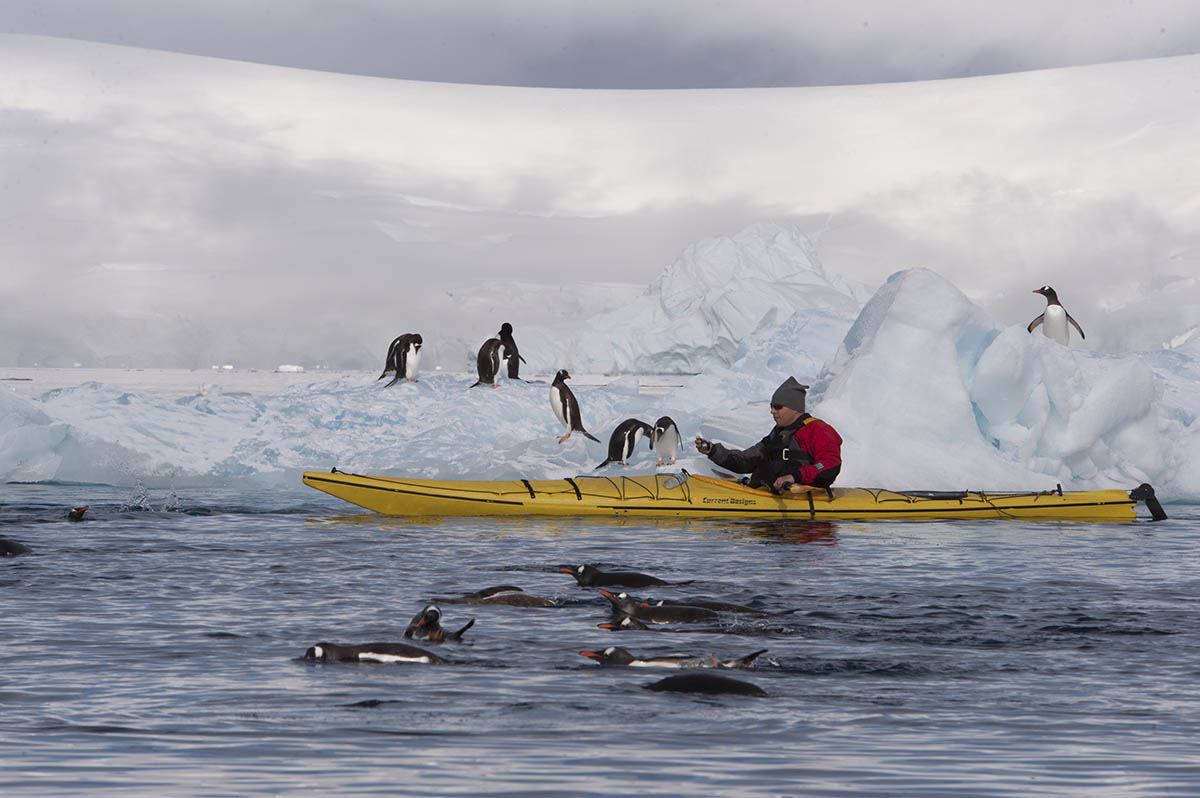
Crank up your adrenaline levels by kayaking through icebergs or camping under southern stars amidst sea ice. These are not just mere adventures but rather transformative experiences that push boundaries while ensuring safety at all times due to changing sea conditions. Voyagers Travel , among others, offer such adventure options polar exploration style.
Camping On Antarctica
Have you ever wondered what it would be like to sleep under the stars in one of the most remote places on Earth? Well, visiting Antarctica and camping there is an experience that will exceed your wildest dreams. It's a journey into pure Antarctic silence surrounds where a wonderfully powerful Antarctic autumn begins.
Expedition ships typically carry all necessary equipment and provisions needed for this unique expedition.
A night spent camping in Antarctica is unlike any other outdoor experience. As darkness falls over the icy landscape, you'll find yourself surrounded by towering glaciers and sparkling ice formations. A blanket of countless stars covers the sky above as penguins and their colonies sleep nearby.
The mats and sleeping bags used during our Antarctica nights on the ice are designed specifically for extreme weather conditions with heavy-duty material to protect against harsh winds and low temperatures. For comfort, we provide insulated sleeping bags rated for sub-zero temperatures along with foam pads to insulate from cold ground beneath.
Ready for an icy adventure? Plan your trip to Antarctica. From Penguin Safaris and wildlife watching, to kayaking among icebergs or camping under southern stars. #TravelAntarctica Click to Tweet
Your Antarctic adventure doesn't stop at the end of each day. In fact, where you lay your head to rest is a crucial part of this unique travel experience.
If luxury accommodation is more your style, then fear not. Even amidst the icy wilderness of Antarctica, there are options that cater to those who prefer their adventures with a side serving of comfort and class.
A standout option for high-end lodgings includes eco-friendly camps offering heated dome tents complete with plush beds and private bathrooms - an oasis amid pure Antarctic silence surrounds you. And let's not forget about food; these places serve gourmet meals that could give any fine dining establishment in Buenos Aires a run for its money.

Sailing into the Antarctic circle or exploring the Wedell sea on expedition ships typically carry all types sea conditions experiences right from wildlife viewing to iceberg sightings. But when it comes time to unwind after a day full of exploration, cruise ship cabins offer cozy retreats ranging from basic bunk rooms up till suites featuring balconies overlooking majestic ice landscapes.
Renowned polar voyages operators like Albatross Expeditions and Aurora Expeditions provide comfortable accommodations catering various travel styles while ensuring personalized service during your ultimate south pole journey due to smaller passenger numbers compared larger cruise lines.
The thrill-seekers among us might be enticed by another type of lodging entirely - camping out under the stars on vast expanses known as 'ice floes'. This truly immersive experience offered by many tour operators lets travelers fully immerse themselves into polar exploration. It's nothing short than waking up surrounded by snow hills possibly seeing curious penguins nearby.
Remember though regardless wherever choose stay visiting Antarctica important always respect pristine environment follow guidelines set forth organizations promoting responsible tourism.
Antarctica offers a range of unique accommodations to enhance your polar adventure. Choose from luxury lodges with gourmet meals, cozy cruise ship cabins that navigate icy landscapes, or the thrilling experience of camping on ice floes under starlit skies.
When you visit Antarctica, it's not just about the destination but also how to make your journey unforgettable. Here are some tips on photography and more.
A picture is worth a thousand words - especially when that photo captures the moment where pure Antarctic silence surrounds you or records an epic adventure sailing by Shackleton's infamous Elephant island. You might consider investing in top-notch camera gear before embarking, in many cases an iphone will do. Several photos included here have been taken with a smart phone.
If you're looking to embark on the ultimate adventure to the southern latitudes amongst penguins and schools of beluga, minke and even blue whales, there's no better place than Antarctica. The breathtaking landscapes and diverse wildlife make it a paradise for photography enthusiasts.
The journey usually begins from Ushuaia , where you will board one of the ice strengthened expedition ships. These ships typically carry travelers across the Beagle channel, onwards through the Drake passage and take base at the Antarctic peninsula. This is an experience in itself as pure Antarctic silence surrounds you while traversing through icebergs and witnessing sea conditions unlike anywhere else on earth.
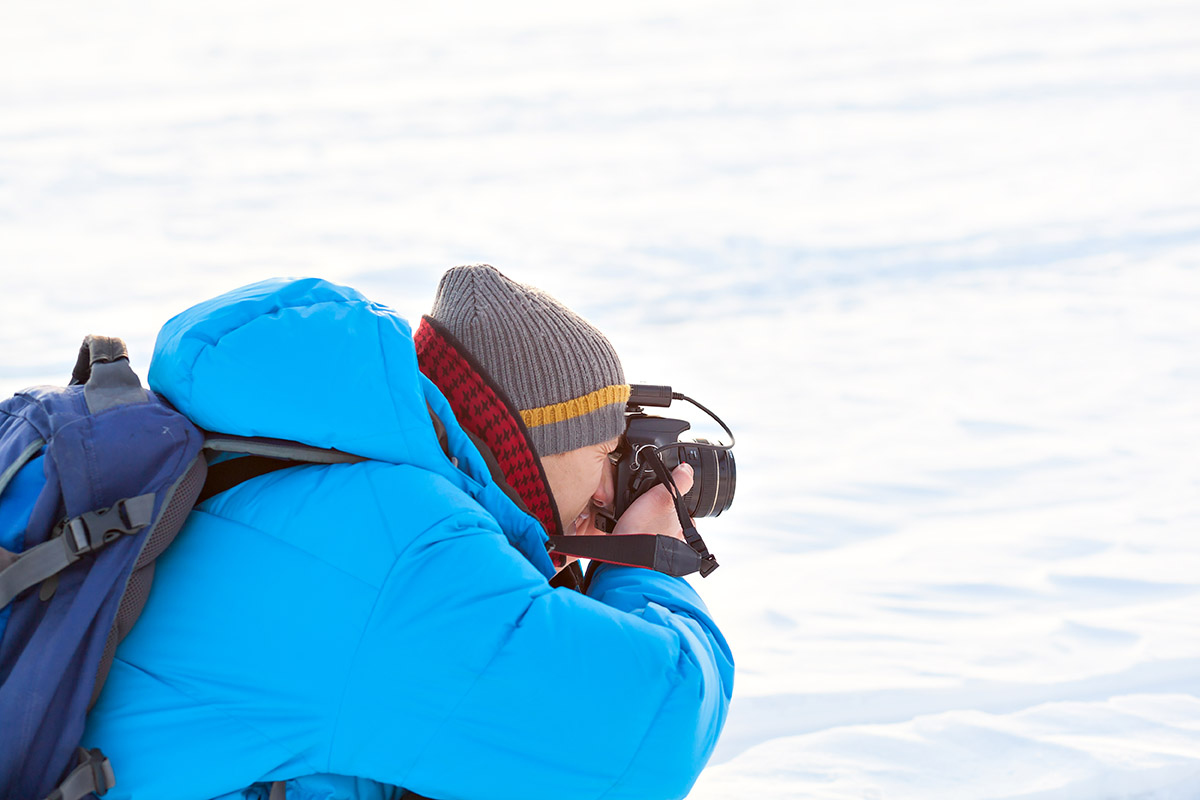
The workshops are led by experts renowned wildlife photographers, who have extensive knowledge about snow and ice, finding the proper light, penguin sightings, taking pictures from zodiacs of whales and leopard seals and in general uplifting your game in photography among other things. These trips usually include the use of forward-facing zodiacs that provide comfort while ensuring that nothing obstructs your view when taking pictures or simply soaking in the beauty around.
In terms of gear required for this trip, remember that weather conditions can be extreme, so pack accordingly! Waterproof jackets and trousers are essential, along with warm clothing layers underneath, because the wonderfully powerful Antarctic autumn begins during these months, which can get quite chilly!
Beyond enjoying the wonderfully powerful Antarctic autumn begins scenery around you, participating actively in various travel style activities available enhances the overall experience dramatically. Imagine taking the polar plunge while your fellow ship mates cheer you on, a dip into the icy waters will for sure awaken your senses.
Journaling Your Journey
The act of journaling offers another intimate way to remember visiting Antarctica; whether jotting down daily observations regarding changing sea conditions over time or personal reflections stirred up due to its exciting passage through the Drake to the unique location far away from regular life pressures back home.
To make your Antarctic journey truly unforgettable, invest in quality photography gear, collect unique souvenirs during the voyage, participate actively in adventure activities like kayaking or camping amidst glaciers and penguins. Additionally, journaling can offer a personal touch to your polar exploration experience.
Travelers typically reach Antarctica via cruise ships from Ushuaia, Argentina. Some also opt for direct flights.
Absolutely. However, you must book a trip with a tour operator that complies with the Antarctic Treaty System's regulations and obtain necessary permits. Our reservations team at Voyagers Travel can help you make the right choice.
To protect its pristine environment, follow guidelines like not disturbing wildlife or leaving waste behind during your visit.

Embarking on a journey to the South Pole is indeed an adventure of a lifetime.
From understanding Antarctica's unique geography and wildlife, planning your trip meticulously, choosing between cruising or flying - every step matters.
You've learned about the exciting activities that await you in this icy wilderness. Sightseeing tours, wildlife watching, kayaking, or even camping on ice floes!
The accommodation options are diverse too; luxury lodges for comfort lovers or camping sites for true adventurers.
Making your trip memorable with photography tips and other ideas has also been covered.
All these elements come together to answer one intriguing question: How to Travel to Antarctica?
It's time to make your Antarctic dreams come true! With Voyagers Travel Company by your side, we ensure a tailor-made travel program focusing on cruises in Antarctica along with other thrilling destinations like the Galapagos Islands and the Amazon River basin . Ready for an unforgettable journey? Visit us at Voyagers Travel , let's make it happen!
Check our Antarctica Cruises:
- Antarctic Explorer: Discovering the 7th Continent plus Cape Horn & Diego Ramirez
- Christmas In Antarctica
- South Georgia and Antarctic Peninsula: Penguin Safari
- Antarctic Express: Crossing the Circle
Visit The South Pole
The epitome of polar exploration, the revered south pole is the most southerly point on earth, a frozen desert at the heart of antarctica, and the jewel in the crown of polar explorers., introduction.
The South Pole is a frozen landmass on an icy, windswept plateau at 2,835 m (9,301 ft) above sea level. Unlike the North Pole on a frozen ocean, the South Pole has land under it. It is considered one of the planet’s most extreme destinations and hard to reach destinations. To get it is to experience something that only some have ever achieved. Standing on the South Pole is considered one of the outstanding polar achievements, along with reaching the North Pole and traversing the Greenland Ice Cap.
The South Pole was first reached on December 14, 1911, by the Norwegian explorer Roald Amundsen, who promptly raised the Norwegian flag at the most southerly point on Earth. He narrowly beat his rival, British explorer Robert Falcon Scott, by just 33 days. Scott would later perish in the frozen wilderness, never completing his Transantarctic expedition.
Today, reaching the South Pole relatively quickly by flight is possible. For seasoned polar explorers, reaching the South Pole through a land-based expedition is possible.
Ways to Visit The South Pole

Fly To The South Pole

South Pole Expeditions
To find out more details about all the ways of reaching the South Pole, including expeditions, please see our guide, How to Get To The South Pole.
Best Time to Visit The South Pole
The best time to visit the South Pole is from December to January during the middle of the Antarctic summer. Due to the extreme weather and temperatures at the South Pole for the rest of the year, the window for flying to the South Pole is limited to these two months.
During December and January, visitors will experience milder temperatures and 24 hours of glorious sunlight illuminating the captivating polar wilderness.
To help you plan your visit to the South Pole, please see our guide below on the differences between the months.

Where is the South Pole?

The geographic South Pole is the southernmost place on Earth, close to Antarctica’s centre, where all of the Earth’s lines of longitude meet together at a single point. Standing on the South Pole, you will face north in every direction.
Unlike the North Pole on the frozen Arctic Ocean, the South Pole has a landmass underneath it covered permanently by an icecap. The ice depth at the South Pole is estimated to be 2800 metres before you reach the land under it.
The nearest permanent civilization to the South Pole is Puerto Williams, Chile, the most Southern town on Earth. This does not include various scientific bases on Antarctica itself, which do not have a permanent population.
South Pole Wildlife
Due to its extreme location and considering it is the windiest, coldest desert on Earth, no animals live on the South Pole itself, although it could be possible to see birds there a long way off course.
The wildlife in Antarctica is situated closer to its coastline, where conditions are more supportive of wildlife such as penguins and seals. It is possible to encounter wildlife on the journey to the South Pole. Our South Pole expeditions include a flight to meet a rarely visited colony of emperor penguins close to the Weddell Sea in a small group of just 12.
For the best chances of encountering Antarctica’s wildlife, we highly recommend an Antarctica luxury expedition cruise that will make landings at wildlife sights, including penguin colonies, seal haulouts and excellent opportunities for whale watching.
Please see our guide to learn more about the wildlife you can encounter in Antarctica.

South Pole Weather and Climate

The South Pole is colder than the North Pole and experiences some of Earth’s most extreme cold temperatures. During the Antarctic summer (November to February), temperatures range from about -25 °C to 15°C (13°F to 5°F). In the winter months with total darkness (June to August), temperatures plummet drastically, often reaching as low as -60°C (-76°F) or even lower.
The climate of the South Pole is classed as a desert, one of the driest on Earth. Due to the cold temperatures, there is very little precipitation, primarily occurring as snow. Antarctica is known for its strong katabatic winds and dense, cold air masses that flow downhill from the polar plateau towards the coast. These winds can reach high speeds, sometimes exceeding 100 miles per hour (160 kilometres per hour).
South Pole History
The South Pole has a fascinating history, which began with the first sighting of Antarctica by European explorers in 1820. Norwegian polar explorer Roald Amundsen won the quest to be the first person to reach the South Pole in 1911. Ann Bancroft became the first woman to reach the South Pole on a land-based expedition without flying in 1993.
From Ernest Shackleton’s attempt to be the first man to reach the South Pole in 1907, falling just 97 miles short on his Nimrod expedition, to Robert Falcon Scott’s fateful attempt to beat Amundsen, the South Pole has always been idolized by all true polar explorers.
The history of the South Pole draws travellers to follow in the footsteps of the great explorers and stand on the South Pole, a place few of them ever made it to.

Frequently Asked Questions
The South Pole was first reached by a Norwegian explorer named Roald Amundsen. On December 14, 1911, Amundsen and his team reached the geographic South Pole. They used dog sledges to make the journey and were the first to confirm their arrival at the southernmost point of the Earth.
This expedition beat a rival British expedition led by Robert Falcon Scott, who arrived at the South Pole about a month later, in January 1912, only to find that Amundsen had already been there. Tragically, Scott’s entire party perished on their return journey. Amundsen’s successful expedition secured his place in history as the first person to reach the South Pole.
The geographic South Pole is located at 90 degrees south latitude. The longitude lines converge at the South Pole, so it doesn’t have a specific longitude. Therefore, the coordinates for the South Pole are often expressed simply as 90 degrees South latitude and 0 degrees longitude. In the commonly used format, this is written as 90°S, 0°W.
Yes, there is land under the ice at the South Pole. The South Pole is located on the continent of Antarctica, which is covered by a massive ice sheet. The ice is incredibly thick, reaching several kilometres deep in some areas.
The bedrock beneath the ice forms the actual landmass of Antarctica. So, while the South Pole is covered by ice, it sits on a solid landmass, unlike the North Pole, which is situated in the Arctic Ocean and surrounded by floating sea ice. The land under the ice in Antarctica is made of rock and forms the continent’s geological foundation.
The North and South Pole are two distinct geographic locations at opposite ends of the Earth. Here are some key differences between the two:
Geographic Location:
– North Pole: Located at the northernmost point of the Earth, it’s defined as the point where the Earth’s axis of rotation intersects its surface. It’s situated in the Arctic Ocean, covered by shifting sea ice.
– South Pole: Situated at the southernmost point of the Earth, it’s where the Earth’s axis of rotation intersects the Earth’s surface in the Antarctic continent, which is covered by a thick ice sheet.
– North Pole: The Arctic climate at the North Pole experiences seasonal changes, with temperatures ranging from extremely cold in winter to relatively milder temperatures in summer. The Arctic is an ocean surrounded by land masses.
– South Pole: The climate at the South Pole is consistently cold, with extremely low temperatures year-round. Antarctica, where the South Pole is located, is a continent covered by a thick ice sheet and experiences colder temperatures than the Arctic.
Accessibility:
– North Pole: The North Pole is predominantly covered by shifting sea ice, making it difficult to reach. During certain times of the year, it’s accessible by icebreakers or specialized expeditions. There’s no stable landmass at the North Pole.
– South Pole: The South Pole is located on the Antarctic continent, with a permanent ice sheet. Access to the South Pole is typically through research stations or specialized flights that land on ice runways. It has a stable landmass beneath the ice.
Human Presence:
– North Pole: There are no permanent human settlements at the North Pole due to the shifting sea ice. However, temporary research stations or camps may be set up for scientific purposes.
– South Pole: The South Pole has a permanent research station, the Amundsen-Scott South Pole Station, which hosts scientists and support staff throughout the year. It serves as a hub for scientific research in Antarctica.
Ecosystems:
– North Pole: The Arctic region has unique ecosystems adapted to cold conditions, including polar bears, seals, walruses, and various species of fish and birds.
– South Pole: Antarctica’s harsh environment supports limited terrestrial life, mainly of microorganisms, insects like mites and springtails, and marine life in the surrounding waters.
These differences showcase the unique characteristics of the North and South Pole, from their geographic locations and climates to accessibility and ecosystems.
The temperature at the South Pole is considerably colder than the North Pole due to its altitude, strong winds and ice-encrusted landscape.
The South Pole experiences frigid temperatures throughout the year due to its location within Antarctica, characterized by its polar climate. Here’s a general guide to the temperatures at the South Pole on a month-by-month basis:
– Average Temperature: Around -18°C to -28°C (0°F to -18°F)
– January is typically one of the warmest months at the South Pole, though temperatures remain well below freezing. Daylight lasts 24 hours during this time due to the summer solstice.
– Average Temperature: Around -25°C to -35°C (-13°F to -31°F)
– Temperatures begin to drop gradually as the summer months transition towards autumn. Still, 24-hour daylight continues.
– Average Temperature: Around -35°C to -45°C (-31°F to -49°F)
– Autumn sets in, and temperatures continue to decline. By the end of March, the sun starts to dip below the horizon, leading to twilight and darkness.
– Average Temperature: Around -45°C to -55°C (-49°F to -67°F)
– Darkness envelops the South Pole as the sun stays below the horizon for an extended period, leading to a continuous night.
– Average Temperature: Around -55°C to -65°C (-67°F to -85°F)
– The darkness continues, temperatures drop to their lowest levels during the year, with severe cold becoming the norm.
– Average Temperature: Around -60°C to -70°C (-76°F to -94°F)
– Midwinter occurs in late June, marking the shortest day and the longest night. Temperatures remain extremely frigid.
– Temperatures stay consistently low, and darkness persists.
– While extremely cold, temperatures rise gradually as the Antarctic winter ends.
– Spring begins, and daylight returns, leading to twilight and eventually continuous daylight.
– As daylight increases, temperatures slowly rise but remain well below freezing.
– With increasing daylight, temperatures continue to rise slightly, signalling the onset of summer.
– Summer officially arrives, and temperatures start to peak for the year. 24-hour daylight resumes during this time.
These temperature ranges are general estimates, and fluctuations can occur due to various factors, but the South Pole remains one of the coldest places on Earth throughout the year.
Yes, you can visit the South Pole. If you don’t have any polar experience, the only way to reach the South Pole is on a flight as part of an expedition. Please see our South Pole expeditions to learn more about how to visit the South Pole.
To learn more about how to visit the South Pole, including land-based expeditions, please see our guide, How To Get To The South Pole.
The closest country to the geographic South Pole is Chile. While no country owns the South Pole itself (it’s governed under the Antarctic Treaty System), Chile is the nearest country with a territorial claim close to the South Pole. Chile’s claim is part of the Antarctic region called the Chilean Antarctic Territory, which lies closest to the South Pole compared to other nations’ territorial claims in Antarctica. However, it’s important to note that these claims are not universally recognized, and Antarctica is governed by international agreements focused on scientific research and environmental protection rather than national ownership.
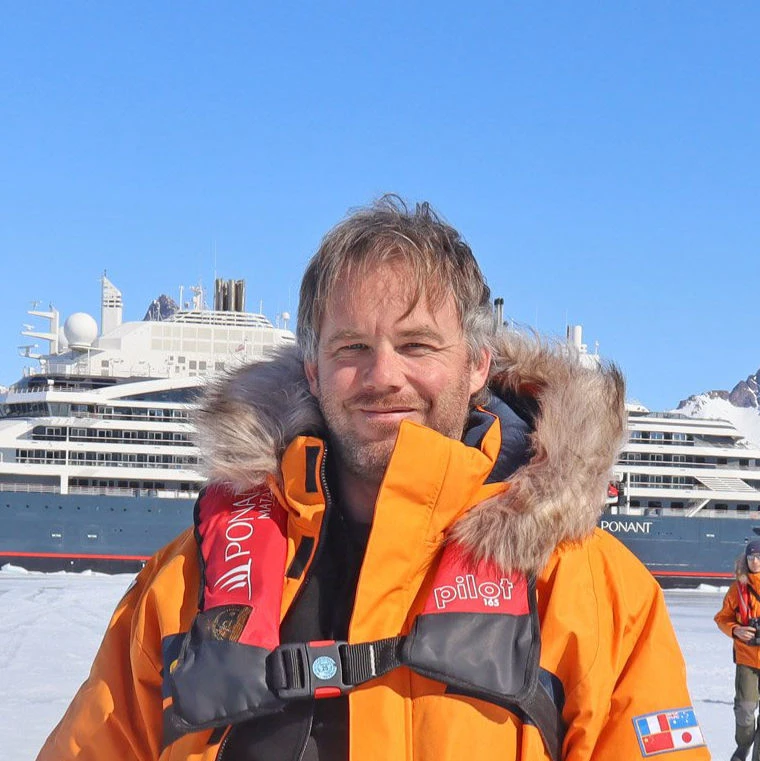
Do you need help planning your expedition cruise?
Why reserve with us.
- Choose from over 20 ships curated by our expert team
- Choose from over 500 cruises
- Best choice of Small and luxury ships
- Portfolio of trusted operators that deliver outstanding expeditions
- 100% financial protection on all reservations
- Guaranteed Best Price at the time of reservation
- Free impartial advice to help you plan your expedition
- We provide outstanding service and support at no extra cost
Subscribe to be the first to know about new voyages, exclusive offers and insider travel tips.

International House 6 South Molton Street Mayfair London W1K 5QF United Kingdom
Tel: +44 20 3290 8799
USA & Canada
276 5th Avenue Suite 704 New York NY 10001 USA
Tel: +1 917 267 7707
Show Prices In
Destinations, book with confidence.
100% Financial Protection

North Pole Cruises – a brand by the Expedition Collective Limited
Ask A Question
Do you have a question for our knowledgeable Travel Experience Team? We’re all ears! Just fill out this form, and we will be in touch shortly to answer your question.
USA & Canada
Your guide to exploring the polar regions.
An official website of the United States government
Here's how you know
Official websites use .gov A .gov website belongs to an official government organization in the United States.
Secure .gov websites use HTTPS. A lock ( Lock Locked padlock ) or https:// means you've safely connected to the .gov website. Share sensitive information only on official, secure websites.
Geosciences (GEO)
- Research Areas
- Geosciences
- Polar Programs
Amundsen-Scott South Pole Station
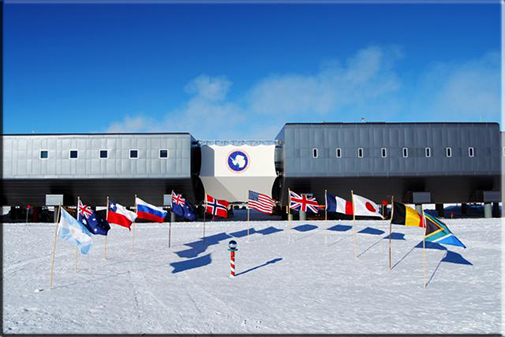
NSF Special Report U.S. South Pole Station: Supporting Science
Visit the South Pole webcam .
Read recent reports from South Pole Station , published in the Antarctic Sun .
Recent NSF press releases about the South Pole and research.
Americans have occupied the geographic South Pole continuously since November 1956. The station stands at an elevation of 2,835 meters (9,306 feet) on Antarctica's nearly featureless ice sheet, which is about 2,700 meters (9,000 feet) thick at that location. The station, which is 850 nautical miles south of McMurdo Station, is drifting with the ice sheet at about 10 meters (33 feet) each year.
Recorded temperature has varied between -13.6° C and -82.8° C. Annual mean is -49° C; monthly means vary from -28° C in December to -60° C in July. Average wind is 10.7 knots (12.3 miles per hour); peak gust recorded was 48 knots (55 miles per hour) in August 1989.
Snow accumulation is about 20 centimeters of snow (6-8 centimeters water equivalent) per year, with very low humidity.
The station's name honors Roald Amundsen and Robert F. Scott, who attained the South Pole in 1911 and 1912.
U.S. research stations at the geographic South Pole
The first station, built to support researchers during the International Geophysical Year, was begun in November 1956 and completed in February 1957. As interest in polar research increased, it became evident that a new design and a larger station was necessary.
In 1975 the central area of the station was rebuilt as a geodesic dome 50 meters wide and 16 meters high that, with 14- by 24-meter steel archways, covering modular buildings, fuel bladders, and equipment. Detached buildings housed instruments for monitoring the upper and lower atmosphere and for numerous and complex projects in astronomy and astrophysics. There is an emergency camp.
The dome facility was designed to house 18 science and support personnel during the winter and 33 during the austral summer. However, over the years, the facility's infrastructure and technology have exceeded its design and operational life. To augment the existing facility, a number of science and berthing structures were added in the 1990s, particularly for astronomy and astrophysics.
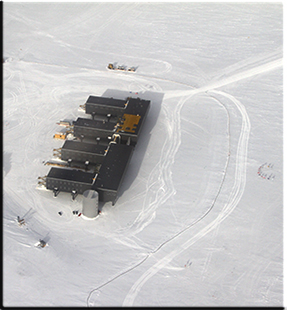
In 1997, a redevelopment plan to upgrade the station began. The new station, which was dedicated in 2008, is one connected, elevated facility. To accommodate changes in population from winter to summer, certain areas can be closed.
Remote science facilities are being developed with small one- to two-story elevated buildings and are located away from the main station to minimize interference between necessary operations and science.
As part of the elevated station, the existing arches were re-used for fuel storage, cargo, and waste management. New arches accommodate the garage shops and power plant. The benefits of elevated structures include reduced snow drifting, increased building life, diminished environmental impact, enhanced safety, maximized solar energy use, and more cost-effective construction.
Some 50 scientists and support personnel winter at the station, and up to 150 people work there during the summer. The station's winter personnel are isolated between mid-February and late October.
Support for science
The station has an Atmospheric Research Observatory, the Martin A. Pomerantz Observatory for astrophysics, and computer systems for research and communication including Internet access. It has collected the longest continuous set of meteorological data from Antarctica's vast interior ice plateau, and it is well located for studies of the cusp region of the magnetosphere. Astronomy and astrophysics have flourished in recent years, taking advantage of excellent optical properties of the atmosphere (resulting from its high elevation, low temperature, and low humidity) and, for neutrino detection, the extremely clear and homogeneous thick ice below. A small biomedical research facility is present. Other areas of interest include glaciology , geophysics and seismology, ocean and climate systems , astrophysics , astronomy , and biology .

South Pole Travel Heats Up on 100th Anniversary of "Discovery"
A hundred years ago, a Norwegian team beat the British to the pole.
By plane and by skis, a steady stream of visitors are flocking to the South Pole in time for the centennial celebrations of two pioneering Antarctic expeditions.
A hundred years ago, on December 14, 1911, Norwegian explorer Roald Amundsen and his team became the first humans to reach the geographic South Pole, which sits in a lifeless desert nearly 1,000 miles (1,600 kilometers) from the Antarctic coast.
A little more than a month later, on January 17, 1912, British explorer Robert Falcon Scott and his team also reached the Pole, but they died on the return journey. (Find out how Amundsen won the race to the South Pole , in his own words.)
Enlarge picture of penguins > >

Today, some intrepid travelers still make it to Earth's southernmost point, though they're only a small fraction of the approximately 30,000 people who visit Antarctica each year, according to the International Association of Antarctica Tour Operators .
(Read a first-person account of visiting the South Pole .)
"There's a lot of excitement over the centennial anniversaries, and there's been more interest in South Pole expeditions because of that," said Annie Aggens, a spokesperson and guide for Polar Explorers , an Illinois-based company that specializes in expeditions to polar regions.
For instance, the company usually takes about two teams of four to six people to the South Pole a year, but this year they're taking at least four, Aggens said.
Though the Antarctic tour operators' organization has not made an exact estimate, there will likely be hundreds of people making the pilgrimage to the Pole during the 2011-2012 Southern Hemisphere summer season.
These visitors will also be joined by Norwegian Prime Minister Jens Stoltenberg, who is at the Pole today to mark the anniversary of countryman Roald Amundsen's expedition. ( Watch archival video of Amundsen's South Pole trek .)
Stoltenberg, who will arrive by plane, will be only the second head of government to visit the South Pole, after New Zealand's Prime Minister Helen Clark in 2007.
South Pole Travel Not Cheap
Most visitors to Antarctica remain aboard cruise ships or coastal camps. Getting to the South Pole, though, requires either skiing from the coast or flying in via private helicopter.
There are no facilities for travelers at the Pole—the only settlement, the U.S. Amundsen-Scott South Pole research station , does not usually house tourists. (Read "Race to the South Pole" in National Geographic magazine .)
This season, however, tourists will be able to stay at a base camp that has been set up especially for celebrations and events tied to the anniversaries.
Many of the people who want to visit the South Pole are attracted by the idea of experiencing something that the early explorers did, Aggens noted.
Though cold-weather gear has much improved, and it's now possible to phone home at the end of each day, "when you've got a sled behind you and it's minus 40 degrees out, you're very much in the same conditions that Scott or Amundsen experienced," she said.
(See pictures from the Amundsen and Scott expeditions .)
The ages of South Pole-bound visitors varies widely, but they generally tend to be between about 45 and 60 years old, she added.
"Being older allows them a couple of things," she said. "They don't have commitments with children and things like that. And many of them also have a lifetime of working behind them and have the income to be able to do a trip that is not inexpensive."
Just how inexpensive? Polar Explorers charges U.S. $45,500 for a flight to the pole on either anniversary and $65,000 for a two-month ski expedition, which involves pulling a 90-pound (41 kilogram) sled for 700 miles (1,126 kilometers). (See a hi-res Antarctic map .)
"They're skiing the whole way, from the coast of Antarctica to the South Pole," Aggens said. "Every waking moment of the day, they're either eating or setting up or breaking camp or skiing."
South Pole Tourist Inspired by Explorers
The company also offers a combo flight-and-ski trip that lasts approximately two weeks for about $50,000.
This is the package that Mike Strong, a 60-year-old landscape contractor from Wichita, Kansas, chose for his South Pole trip in 2009.
Strong grew up reading about famous explorers and knew he wanted to go on adventures and expeditions since an early age.
(Read about National Geographic's modern-day explorers .)
He'd also read Alfred Lansing's book Endurance , about British explorer Ernest Shackleton's failed South Pole expedition, and thought that he'd like to go there one day.
He had that same thought again in a hotel lobby in 2006 after successfully climbing Tanzania's Mount Kilimanjaro . He heard someone mention that only a few dozen people had climbed the seven highest peaks and been to both poles.
"I thought that was cool, and the more I thought about it, the more I thought I'd kind of like to do that," said Strong, who has completed more than 50 triathlons and recently finished his first 100-mile (160-kilometer) ultramarathon.
So in 2008, Strong signed up for a 60-mile (96-kilometer) ski expedition to the North Pole with Polar Explorers. He followed that up in 2009 with his South Pole adventure.
"Skiing Through Milk"
For many tourists, Antarctica is as extreme as it gets.
The cold, which can reach the negative teens in summer, combines with wind and dry air to make physical exertion a challenge.
And during December and January—the height of austral summer, when most tourists visit—the sun never sets.
On a clear day, sunlight and ice crystals in the air can combine to make everything glitter, and visitors might glimpse a "sun dog," or a circular rainbow ringing the sun.
(See picture: "Double Sun Dog Dazzles Icy Omaha." )
Other times, the snow swirls so thick that the air seems to merge with the ground and the horizon, and all landmarks disappear.
Traveling in such whiteout conditions, Strong said, was like "skiing through milk."
Even just the flight to the South Pole can be a shock.
Polar Explorers' Aggens said, "You're in a place that's extremely cold, and you get off the plane at 9,300 feet [2,834 meters] of altitude, but because of the polar atmosphere, it feels closer to 12,000 feet [3,657 meters]."
Trekking for the Blind
Briton Richard Smith is experiencing some of these Antarctic phenomena for the first time on a trek from the Antarctic coast to the South Pole. Smith is part of a four-person team called Polar Vision , which is raising funds and awareness for sight charities.
Smith and team members Andrew Jensen and Hannah McKeand are traveling with Alan Lock, a former British Royal Navy officer who lost his sight as a result of macular degeneration. The Polar Vision team, 16 days into their trip, is expected to arrive at the South Pole in January.
"The landscape can be described as a 'white' desert, the sky is incredible, with every shade of blue, and although it's 24-hour sunlight with the sun circling around, you do get a change in the light and the shade," Smith relayed to an assistant in the U.K. recently via satellite phone, who then emailed National Geographic News Smith's observations.
"When you are still and there is little or no wind, there is a silence. You can smell and taste the fresh cleanliness. The snow creates some fascinating structures of all different shapes and sizes; it could be likened to modern art sculptures," he said.
South Pole Celebrations
Once at their destination, South Pole visitors can also take a tour of the Amundsen-Scott research station, which is home to various scientific experiments, including the IceCube neutrino observatory. (See "Photos: Huge Observatory 1.5 Miles Deep in Antarctic Ice." )
The geographic pole is designated by a brass marker that's moved each year as the marker shifts due to ice sheet movement. Nearby, people can take their pictures at the ceremonial pole, which is ringed by the flags of the original 12 nations that signed the Antarctic Treaty.
People celebrate their polar feats in various ways, said Strong, who took the 2009 trip.
"You've got all kinds of antics. People take their shirt—or more—off," he said. "I personally did a handstand and walked around the Pole."
Overall, Strong said his time in Antarctica was like visiting another world.
"You get out on the ice and you're in the middle of nowhere," he said.
"You're just this little speck on this vast continent, and you have a sense of vastness and isolation. And, I suppose, for people like me, that's exciting."
Would you go to the South Pole? Leave a comment below.
Related Topics
- POLAR EXPEDITIONS
You May Also Like

Photo story: a water-borne adventure into fragile Antarctica

What it's like to cross Antarctica's Weddell Sea

Maritime archaeologist Mensun Bound delves into 30 years of underwater adventures

11 of the best wildlife cruises for 2024 and beyond

Following early polar explorers on a journey through Canada's Northwest Passage


See the otherworldly beauty of Earth’s polar regions

Get ready for your next iconic adventure like a pro with these tips
- Environment
- Paid Content
- Photography
- Perpetual Planet
History & Culture
- History & Culture
- Mind, Body, Wonder
- Destination Guide
- Terms of Use
- Privacy Policy
- Your US State Privacy Rights
- Children's Online Privacy Policy
- Interest-Based Ads
- About Nielsen Measurement
- Do Not Sell or Share My Personal Information
- Nat Geo Home
- Attend a Live Event
- Book a Trip
- Inspire Your Kids
- Shop Nat Geo
- Visit the D.C. Museum
- Learn About Our Impact
- Support Our Mission
- Advertise With Us
- Customer Service
- Renew Subscription
- Manage Your Subscription
- Work at Nat Geo
- Sign Up for Our Newsletters
- Contribute to Protect the Planet
Copyright © 1996-2015 National Geographic Society Copyright © 2015-2024 National Geographic Partners, LLC. All rights reserved
The South Pole is the southernmost point on Earth. It is located on Antarctica, one of the planet's seven continents.
Earth Science, Geology, Geography, Physical Geography, Social Studies, World History
Loading ...
The South Pole is the southernmost point on Earth. It is the precise point of the southern intersection of Earth's axis and Earth's surface. From the South Pole, all directions are north. Its latitude is 90 degrees south, and all lines of longitude meet there (as well as at the North Pole ). The South Pole is located on Antarctica , one of Earth's seven continents . Although land at the South Pole is only about a hundred meters above sea level , the ice sheet above it is roughly 2,700-meters (9,000-feet) thick. This elevation makes the South Pole much colder than the North Pole, which sits in the middle of the Arctic Ocean. In fact, the warmest temperature ever recorded at the South Pole was a freezing -12.3 degrees Celsius (9.9 degrees Fahrenheit). The South Pole is close to the coldest place on Earth. The coldest temperature recorded at the South Pole, -82.8 degrees Celsius (-117.0 degrees Fahrenheit), is still warmer than the coldest temperature ever recorded, -89.2 degrees Celsius (-128.6 degrees Fahrenheit). That temperature was recorded at the Russian Vostok Research Station , about 1,300 kilometers (808 miles) away. Because Earth rotates on a tilted axis as it revolves around the sun, sunlight is experienced in extremes at the poles. In fact, the South Pole experiences only one sunrise (at the September equinox ) and one sunset (at the March equinox) every year. From the South Pole, the sun is always above the horizon in the summer and below the horizon in the winter. This means the region experiences up to 24 hours of sunlight in the summer and 24 hours of darkness in the winter. Due to plate tectonics , the exact location of the South Pole is constantly moving. Plate tectonics is the process of large slabs of Earth's crust moving slowly around the planet, bumping into and pulling apart from one another. Over billions of years, Earth's continents have shifted together and drifted apart. Millions of years ago, land that today is the east coast of South America was at the South Pole. Today, the ice sheet above the South Pole drifts about 10 meters (33 feet) every year. Amundsen–Scott South Pole Station Compared to the North Pole, the South Pole is relatively easy to travel to and study. The North Pole is in the middle of the Arctic Ocean, while the South Pole is on a stable piece of land. The United States has had scientists working at Amundsen–Scott South Pole Station since 1956. Between 50 and 200 scientists and support staff live at the this research station at any given time. The station itself does not sit on the ground or ice sheet. It is able to adjust its elevation, to prevent it from being buried in snow, which accumulates at a rate of about 20 centimeters (eight inches) every year, and does not melt. In the winter, the Amundsen–Scott South Pole Station is completely self-sufficient . The dark sky, freezing temperatures, and gale -force winds prevent most supplies from being flown or trekked in. All food, medical supplies, and other material must be secured before the long Antarctic winter. The station's energy is provided by three enormous generators that run on jet fuel. In winter, stores of food are supplemented by the Amundsen–Scott South Pole Station's greenhouse. Vegetables in the greenhouse are grown with hydroponics , in a nutrient solution instead of soil. Some of the earliest discoveries made at South Pole research stations helped support the theory of continental drift , the idea that continents drift apart and shift together. Rock samples collected near the South Pole and throughout Antarctica match samples dated to the same time period collected at tropical latitudes. Geologists conclude that the samples formed at the same time and the same place, and were torn apart over millions of years, as the planet split into different continents. Today, the Amundsen–Scott South Pole Station is host to a wide variety of research. The relatively undisturbed ice sheet maintains a pristine record of snowfalls, air quality, and weather patterns. Ice cores provide data for glaciologists, climatologists, and meteorologists , as well as scientists tracking patterns in climate change . The South Pole has low temperatures and humidity and high elevation, making it an outstanding place to study astronomy and astrophysics . The South Pole Telescope studies low-frequency radiation , such as microwaves and radio waves . The South Pole Telescope is one of the instruments designed measure the cosmic microwave background (CMB) –faint, diffuse radiation left over from the Big Bang . Astrophysicists also search for tiny particles called neutrinos at the South Pole. Neutrinos interact very, very weakly with all other matter. Neutrino detectors therefore must be very large to detect a measurable number of the particles. The Amundsen–Scott South Pole Station's IceCube Neutrino Detector has more than 80 "strings" of sensors reaching as deep as 2,450 meters (8,038 feet) beneath the ice. It is the largest neutrino detector in the world. Ecosystems at the South Pole Although the Antarctic coast is teeming with marine life, few biologists conduct research at the Amundsen–Scott South Pole Station. The habitat is far too harsh for most organisms to survive. In fact, the South Pole sits in the middle of the largest, coldest, driest, and windiest desert on Earth. More temperate parts of this desert (called either East Antarctica or Maudlandia) support native flora such as moss and lichen, and organisms such as mites and midges. The South Pole itself has no native plant or animal life at all. Sometimes, however, seabirds such as skuas can be spotted if they are blown off-course. Exploration The early 20th century's "Race to the Pole" stands as a symbol of the harrowing nature of polar exploration. European and American explorers had attempted to reach the South Pole since British Capt. Robert Falcon Scott 's expedition of 1904. Scott, along with fellow Antarctic explorers Ernest Shackleton and Edward Wilson, came within 660 kilometers (410 miles) of the pole, but turned back due to weather and inadequate supplies. Shackleton and Scott were determined to reach the pole. Scott worked with scientists, intent on using the best techniques to gather data and collect samples. Shackleton also conducted scientific surveys, although his expeditions were more narrowly focused on reaching the South Pole. He came within 160 kilometers (100 miles) of the pole in 1907, but again had to turn back due to weather. Scott gathered public support and public funding for his 1910 Terra Nova expedition. He secured provisions and scientific equipment. In addition to the sailors and scientists on his team, the Terra Nova expedition also included tourists —guests who helped finance the voyage in exchange for taking part in it. On the way to Antarctica, the Terra Nova expedition stopped in Australia to take on final supplies. Here, Scott received a surprising telegram from Norwegian explorer Roald Amundsen : "Beg leave to inform you Fram [Amundsen's ship] proceeding Antarctic." Amundsen was apparently racing for the pole, ahead of Scott, but had kept all preparation secret. His initial ambition, to be the first to reach the North Pole, had been thwarted by American explorers Frederick Cook and Robert Peary , both of whom claimed to reach the North Pole first. (Both claims are now disputed, and Amundsen's flight over the North Pole is generally recognized as the first verified journey there.) The Terra Nova and Fram expeditions arrived in Antarctica about the same time, in the middle of the Antarctic summer (January). They set up base camps about 640 kilometers (400 miles) apart. As they proceeded south, both expeditions established resupply depots with supplies for their return journey. While Scott's team stuck to a route forged by Shackleton years earlier, Amundsen took a new route. Scott proceeded with scientific and expeditionary equipment hauled by dogs, ponies, and motor sledges. The motorized equipment soon broke down, and the ponies could not adapt to the harsh Antarctic climate. Even the sled dogs became weary. All the ponies died, and most members of the expedition turned back. Only four men from the Terra Nova expedition (including Scott's friend Wilson) proceeded with Scott to the pole. Amundsen traveled by dogsled , with a team of explorers, skiers, and mushers . The foresight and navigation paid off: Amundsen reached the pole in December 1911. He called the camp Polheim, and the entire Fram expedition successfully returned to their resupply depots, ship, and Norway. More than a month later, Scott reached the South Pole, only to be met by Amundsen's camp—he had left a tent, equipment, and supplies for Scott, as well as a note for the King of Norway to be delivered if the Fram expedition failed to make it back. Disheartened, Scott's team slowly headed back north. They faced colder temperatures and harsher weather than Amundsen's team. They had fewer supplies. Suffering from hunger, hypothermia , and frostbite , all members of Scott's South Pole expedition died fewer than 18 kilometers (11 miles) from a resupply depot. American explorer Richard E. Byrd became the first person to fly over the South Pole, in 1926, and the Amundsen–Scott South Pole Station was established 30 years later. However, the next overland expedition to the South Pole was not made until 1958, more than 40 years after Amundsen and Scott's deadly race. The 1958 expedition was led by legendary New Zealand mountaineer Sir Edmund Hillary, who had become the first person to scale Mount Everest in 1953. Transportation to the South Pole Almost all scientists and support personnel, as well as supplies, are flown in to the South Pole. Hardy military aircraft usually fly from McMurdo Station, an American facility on the Antarctic coast and the most populated area on the continent. The extreme and unpredictable weather around the pole can often delay flights. In 2009, the U.S. completed construction of the South Pole Traverse. Also called the McMurdo-South Pole Highway, this stretch of unpaved road runs more than 1,600 kilometers (995 miles) over the Antarctic ice sheet, from McMurdo Station to the Amundsen–Scott South Pole Station. It takes about 40 days for supplies to reach the pole from McMurdo, but the route is far more reliable and inexpensive than air flights. The highway can also supply much heavier equipment (such as that needed by the South Pole's astrophysics laboratories) than aircraft. Resources and Territorial Claims The entire continent of Antarctica has no official political boundaries. Seven countries made defined claims to Antarctic territory prior to the Antarctic Treaty of 1959, which does not legally recognize any claims.
Cold and Lonely Highway The South Pole Traverse is not paved. The highway was created by filling in deep crevasses in the Antarctic ice sheet. The only vehicles on the highway are specialized tractors equipped with specialized towing sleds.
Tradition of Horror The few "winter-overs" at Amundsen-Scott South Pole Station have an annual tradition. After the last supply plane has left the facility (not to return for six months), they watch two movies: The Thing (about a parasitic alien being terrorizing an Antarctic research facility) and The Shining (about a caretaker isolated at a remote hotel in the winter).
No Time at the Poles Time is calculated using longitude. For instance, when the sun seems directly overhead, the local time is about noon. However, all lines of longitude meet at the poles, and the sun is only overhead twice a year (at the equinoxes.) For this reason, scientists and explorers at the poles record time-related data using whatever time zone they want.
Media Credits
The audio, illustrations, photos, and videos are credited beneath the media asset, except for promotional images, which generally link to another page that contains the media credit. The Rights Holder for media is the person or group credited.
Last Updated
October 19, 2023
User Permissions
For information on user permissions, please read our Terms of Service. If you have questions about how to cite anything on our website in your project or classroom presentation, please contact your teacher. They will best know the preferred format. When you reach out to them, you will need the page title, URL, and the date you accessed the resource.
If a media asset is downloadable, a download button appears in the corner of the media viewer. If no button appears, you cannot download or save the media.
Text on this page is printable and can be used according to our Terms of Service .
Interactives
Any interactives on this page can only be played while you are visiting our website. You cannot download interactives.
Related Resources
South Pole Tours
- Start Date Select Month June 2024 July 2024 August 2024 September 2024 October 2024 November 2024 December 2024 January 2025 February 2025 March 2025 April 2025 May 2025 June 2025 July 2025 August 2025 September 2025 October 2025 November 2025 December 2025 January 2026 February 2026 March 2026 April 2026 May 2026 June 2026 OR, More specific start
- Scheduled Group Tour
- Wildlife & Safari Exploration
- Adventure Options
- Wilderness Lodge Exploration
- Wildlife Viewing
Emperors & Explorers
- Explore Union Glacier
- Camp near an Emperor Penguin Colony
- Explore Antarctica
- Photograph local wildlife
South Pole and Emperors at Echo Camp
- Explore remote areas of Antarctica
- Stay in a remote and luxurious camp
- See penguin colony in Atka Bay
- Visit the Geographic South Pole
South Pole and Emperors at Whichaway Camp
Ski the last degree.
- Visit the South Pole
- Experience Antarctica
- Ski to the South Pole
- Enjoy outdoor activities
South Pole Overnight and Three Glaciers Retreat
- Visit the Amundsen-Scott Station
Antarctica Travel Guide
- All Antarctica Trips
- Antarctica Luxury Cruises
- Best Time of Year to Travel to Antarctica
- Comparing the Two Polar Regions: Antarctica and Arctic Cruising
- Antarctica FAQs
- Antarctica Weather
- Antarctica Fly + Cruise
- Punta Arenas
- Falkland Islands
- Antarctica Adventure Cruises
- Kayaking in Antarctica Tours
- Camping in Antarctica
Favorite Antarctica All Trips
- Falklands, South Georgia and Antarctica: Explorers and Kings
- Antarctica Express Air Cruise
- Antarctic Small Ship Expedition
Top South Pole Travel Destinations
South pole trips by departure date.
- 2024 South Pole trips (4)
- 2025 South Pole trips (4)
Top Experiences in South Pole
- South Pole Land Tours (5)
- South Pole Active (3)
- South Pole Wildlife & Safari Exploration (3)
South Pole Trips by Activity
- South Pole adventure options (5)
- South Pole skiing (4)
- South Pole wildlife viewing (3)
- South Pole camping (3)
- South Pole hiking (3)
Why Travel With Adventure Life
Recognized by.

- 1 Understand
- 2.1 By plane
- 2.2 By road
- 3 Get around
- 4 See and do
- 9 Stay healthy
The Geographic South Pole is the point where the Earth's axis of rotation intersects the surface of the southern hemisphere, in the remote, bleak interior of Antarctica . The underlying land is close to sea-level but is covered by ice over 2.5 km thick, so the surface is at 2835 m / 9301 ft on a flat, featureless plateau. The Pole was first reached by Amundsen in 1911, and the permanent US Amundsen-Scott South Pole Station has stood here since 1956.
Unless otherwise specified, references on these pages to "the Pole" mean this place. It shifts a few metres each year as the ice cap slowly moves, and there's also a "polar motion" as the earth's spin is slightly lopsided so the axis of rotation oscillates. See East Antarctica for the South Geomagnetic Pole and "Pole of Inaccessibility", both some 800-900 km away across the plateau, and for the South Magnetic Pole, which is way out to sea beyond Wilkes Land.
Understand [ edit ]

19th century explorers probed Antarctica's coasts but realized that the Pole lay over 1000 km inland in an intensely cold, uncharted region. The best route was from the Ross Sea, which ships could approach in summer. There you'd need to establish a base and lay supply caches along your return route, and camp over winter, to be ready to strike out for the Pole next spring and get back before the following winter overtook you. And how would you even know (and prove to the world) that you'd got there?
Several expeditions were forced back, the closest being Shackleton's Nimrod group of 1908 / 09 which got to within 180 km. This established that the interior beyond the Transantarctic Mountains was a featureless high-altitude plateau. Roald Amundsen (1872-1928) initially aimed for the North Pole, but this target was mired by contested claims of Peary and others to have reached it, and funding dried up. (Not until 1926 did Amundsen himself bring the first verified party to the North Pole, by airship.) He secretly switched focus to the South Pole and didn't even tell his crew until they'd left their last port-of-call in Madeira. They reached Antarctica in Jan 1911, camping on the edge of the Ross Sea ice shelf. They laid caches then in October set out with dog-hauled sleds along a straight line south, crossing the mountains by the Axel Heiberg Glacier, and reached the Pole on 14 Dec. They returned safely to the coast in Jan 1912. Just as they were doing so, Scott's Terra Nova expedition belatedly reached the Pole, to find Amundsen's tents and the Norwegian flag fluttering there. That group of five did not survive their return north.
No-one stepped foot on the Pole again until 1956, when a US Navy plane landed. Over the summer of 1956/57, the "International Geophysical Year", the US built a station that's been permanently staffed since. The next people to come overland, with limited air support, were Edmund Hillary and Vivian Fuchs, arriving separately in Jan 1958. The age of tourism began in 1987 with the opening of privately-run Patriot Hills airfield and camp, which in 2010/11 relocated to Union Glacier Camp, and this remains in use.
The climate at the South Pole is intensely cold, though it's not the coldest place on earth - that's in the vicinity of Vostok station at higher altitude. In December, mid-summer, the Pole averages −28 °C (−18 °F), and in July this drops to −80 °C (−112 °F). (There are no "day-time highs" or "night-time lows", since in summer it's always day and in winter it's always night.) The Pole is also very dry, and indeed is classed as desert. It seldom catches the furious "katabatic" winds that scourge the coast. However, it doesn't take much breeze to kick up the drifting snow into a blizzard white-out that will disorient then bury anyone caught out in it.
Get in [ edit ]
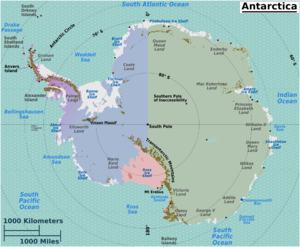
By plane [ edit ]
Jack F. Paulus Skiway 1 km from the Pole is the airstrip, open in summer Oct-Feb. Only ski-planes can land here, though this includes chunky ski-equipped Lockheed Hercules. Tourists make the first leg of their journey (say from Punta Arenas) by conventional wheeled aircraft to one of the few Antarctic airfields that can receive them, then transfer to ski-plane. There may be a stopover of a couple of days at the transfer point to await a weather window to fly onward. But on reaching the Pole the aircraft doesn't wait around: it keeps its engines turning to avoid freezing while it unloads then gets gone, so don't be forgetting your mittens under your seat.
There are no scheduled commercial flights to the Pole. Staff come and go on government-sponsored flights. Tourists arrive on fly-stay packages, for prices that start from US$65,000 pp.
- Antarctic Logistics and Expeditions (ALE) are the market leader, flying via their Union Glacier camp in West Antarctica . Their packages include:
- Icetrek is ostensibly a different company yet offers packages, departure dates and prices identical to ALE.
- Northwest Passage offer similar packages, including a combi of "Last Degree" and climbing Mount Vinson.
- PolarQuest are mostly a cruise operation but they offer six to seven day trips by plane from Punta Arenas via Union Glacier to the Pole.
- White Desert flies you here business-class, for double the price of the other very expensive operators. Guests fly from Capetown in business jets to Whichaway Camp in Queen Maud Land (think deep-freeze glamping) then on to the Pole or along the coast to admire the Emperor penguins.
By road [ edit ]

The South Pole Traverse or Highway is a 1600 km trail from McMurdo Station on the Ross Sea to the Pole. It's compacted snow with crevasses filled in and marked by flags. It can only be travelled by specialized tractors, hauling sleds with fuel and supplies. These aren't very nimble so the trail has to take a long swerve around the Transantarctic Mountains to come onto the plateau.
Ski treks from coast to Pole are partly along this route, but take short-cuts through the mountains to bring the distance below 1200 km.
Get around [ edit ]
The area of interest is all within one km of the Pole along marked trails, so you get around on foot. Never leave these trails. There's simply nowhere else to go - the next point of interest is Kunlun station over 1000 km away, and frankly not worth the walk. This is a featureless plateau where conditions can turn from sparkling daylight to howling blizzard in an instant. The wind whips up the snow into a white-out where you have no sense of where you're going, and your trail gets covered so you can't retrace your route.
See and do [ edit ]
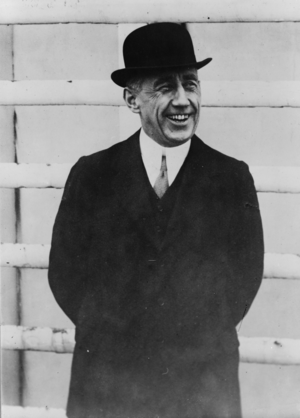
See Antarctica for general suggestions. The most important thing to do here is come home safe .
- The ceremonial South Pole is a metal sphere on a red and white pole, set within the flags of the signatories of the Antarctic Treaty. It makes a good photo but is about 300 m from the true Pole. (Yes, to be specific it's 300 metres north .)
- The Geographic South Pole is marked by a simpler rod. The ice here shifts 10 m annually and the marker is moved each New Year's Day in a small ceremony. There are also the US and Norwegian flags and a sign bearing quotes from the journals of Amundsen and Scott. Circumnavigate the world by taking a couple of dozen steps around the Pole.
- The Old Pole , the original wooden station, was built in 1956 and abandoned in 1975. It's now buried by drifting snow, and off-limits as unsafe.
- The Geodesic Dome of the 1970s was dismantled in 2009 / 10 and its site soon became covered by snow.
- The Elevated Station , built from 1999, is a modular structure on stilts to prevent snow from accumulating around it. Semicylindrical metal "arches" next to the dome serve as storage, power plant, and vehicle shop. They linked to the main station via a six-story unheated metal tower known as the "beer can".
- The Visitor Center is a grand name for a small tent.
- Station tours: you can but ask the staff, but the answer is usually "sorry".
- Play Disc Golf: this is the version where you flip a disc towards a target basket, playing your disc from wherever it lands. But it's odd that no golf course developer has sought to establish a traditional course and resort hotel here. Where's Donald Trump when you want him?
- Send a letter home from the world's southernmost post office in the station.
Buy [ edit ]
There is a small gift shop in the station, cash only.
Eat [ edit ]
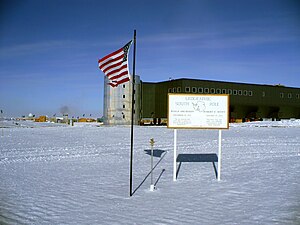
Visitors are fed at the camp site, and can't access the station canteen.
Drink [ edit ]
- There's no shortage of fresh ice, but unlocking the water requires fuel and a means of heating. That's not a problem at the polar station and camp, but on treks such as "Ski the Last Degree" these add weight, and lugging them raises a thirst.
- As in any very cold climate, never drink alcohol until you are safely in shelter. It's notorious for generating a false glow of warmth and well-being while your core body temperature ebbs away.
Sleep [ edit ]
Tourist visitors are accommodated at the campsite 1 kilometre (0.62 mi) from the station and Pole, using "Arctic Oven" tents.
Stay healthy [ edit ]

All the health and safety advice for Antarctica apply in force to the Pole. The main local factor is that intense dry cold is combined with altitude, so you need to acclimatize. That's usually done by spending a night at a staging post such as Union Glacier. The UV is also stronger at this altitude.
Connect [ edit ]
Connectivity at the Pole is extremely limited. For around four hours each day, NASA satellites are in view which provide reasonably high-bandwidth connections; these are used for uploading scientific data and for staff to browse the Internet or have audio and video calls with family and friends. Another eight to nine hours of connection are available on two military satellites, at significantly lower speeds. The rest of the time, the only access is through the Iridium satellite network, which covers the entire globe and has excellent coverage at the poles, but only offers low-quality (and expensive) voice calls and dialup-speed Internet.
Go next [ edit ]
You're tied to your package itinerary, so you must return north with them. They may have the option of side-trips from their Antarctic staging post, e.g. from Union Glacier to Mount Vinson, or from McMurdo to climb the active volcano Erebus.
- Previously Off the beaten path
- Has custom banner
- Guide rural areas
- Guide articles
- Rural area articles
- Has Geo parameter
- All destination articles
Navigation menu
What It Costs
Cost Benefit Analysis of Everything in Life
Travel to Antarctica & the South Pole – Prices & Cost
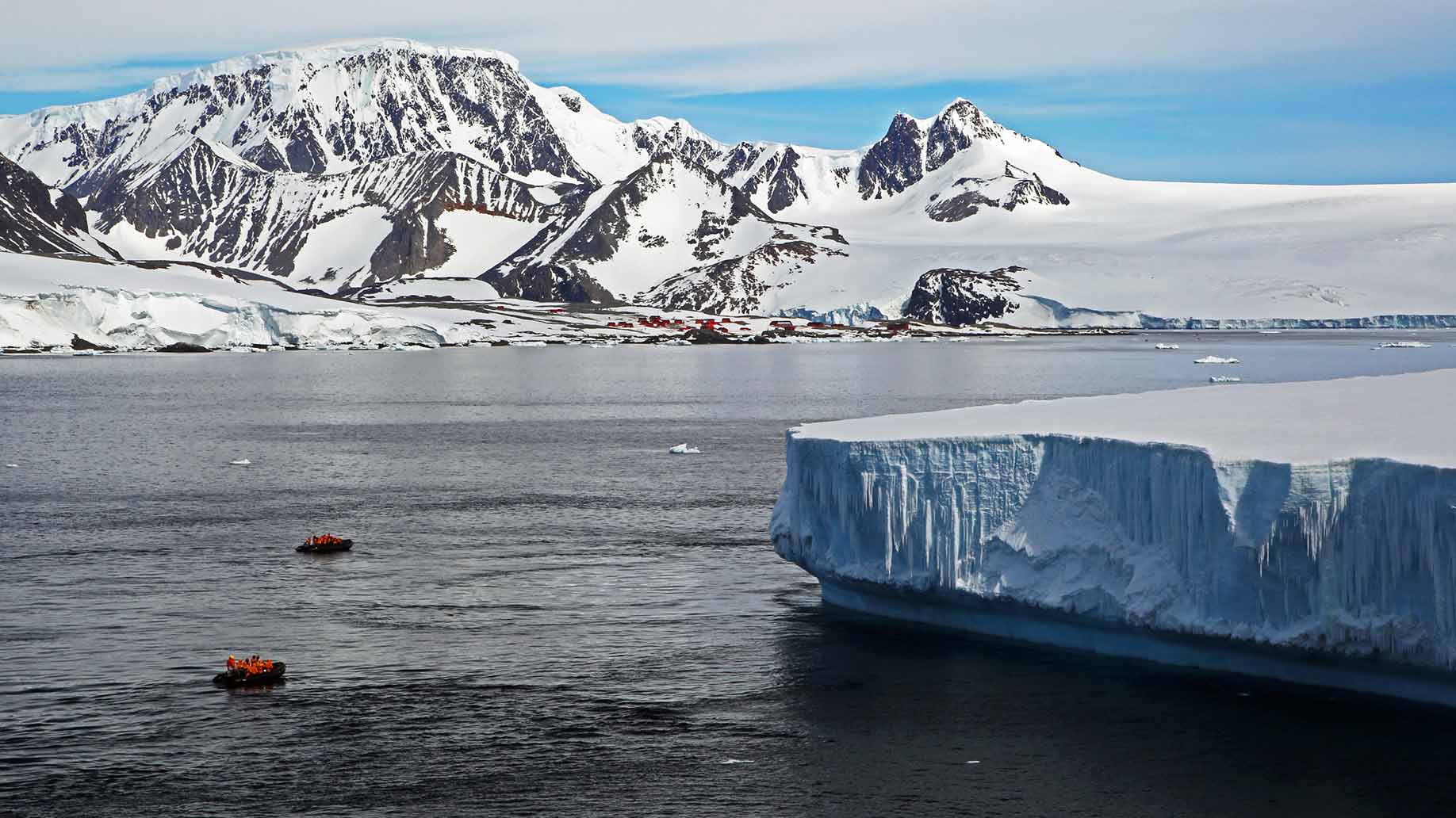
Ballpark Estimate: $36,000 to $65,000
Antarctica is a popular tourist destination. Dozens of cruise ships sail there from November to March, when the sun never sets. Tourists pay tens of thousands of dollars for the trip, mostly to see penguins and icebergs. However, if you really want to experience adventure travel to the world’s coldest continent, you need to head 700 miles further south from the coast—to the South Pole.
There are three different South Pole locations:
- South Magnetic Pole – Currently located off the coast of Antarctica, this is a constantly shifting spot, due to changes in the Earth’s magnetic field.
- Geographic South Pole – The southernmost point on the planet, located at 90°S, is marked by a small sign and a tall stake driven into the ice. The markers must be moved annually, to compensate for the movement of the ice – about 10 meters per year. The Geographic South Pole is the goal of expeditions and trips.
- Ceremonial South Pole – Used for photography purposes, this shiny metallic sphere atop a diminutive red-and-white striped pole is located a short distance from the Geographic South Pole, and is surrounded by flags of the Antarctic Treaty countries.
The first explorers to reach the South Pole were Roald Amundsen’s Norwegian party, arriving on December 14, 1911. A British expedition, led by Robert Scott arrived one month later, although Scott and his four companions all perished from starvation and cold during their return trip. The Amundsen-Scott South Pole Station was established in 1956-57 for scientific research, and has been staffed ever since by researchers and support personnel. During the austral summer, from November to March, about 250 scientists live at the station. That number drops to between 50 and 60 when the winter season descends, with its constant darkness and extreme temperatures.
Environmental Impact of Antarctic Tourism
With the box office success of “March of the Penguins” and “Happy Feet,” and the growing popularity of adventure tourism, the fragile ecosystems in the Antarctic are coming under attack. “Penguin tourism” has skyrocketed in recent years, bringing thousands of tourists to a land once thought to be unapproachable. Environmental impacts are already visible: noticeable footpaths have appeared in formerly pristine areas, slow-growing moss beds have been damaged, penguin colonies have been disrupted, and over-eager tourists have been known to illegally walk off with historic or geological “souvenirs.” Some cruise ships or tourist vessels practice careless or improper waste disposal, and the increased ship traffic has resulted in accidents with potentially catastrophic environmental consequences, and expensive repairs.
More recent notable trips to the pole, some more admirable than others, include:
- December 1989 – Arved Fuchs and Reinhold Messner became the first people to reach the pole without animal or motorized aid.
- December 2005 – a small team from Great Britain, along with one Icelander, drove 707 miles from Patriot Hills to the South Pole in a specially-outfitted 6×6 fully-modified Econoline. The cost of that world record expedition, including construction and transport of the vehicle, was $1.6 million. (Gas at the South Pole cost $84/gallon.)
- December 2007 – Hannah McKeand (33) set a new speed record for skiing alone and unsupported, 690 miles to the pole in only 39 days, to raise money for breast cancer research.
Where to Go
Trips to the South Pole take advantage of the five austral summer months, November to March, when the sun never sets.
Passports and Visas: $100+
There are special entry forms and permits required to enter Antarctica, but no passport or visa is needed since no single government owns the continent. The entry permits are often arranged for you by your guide service or travel agent.
You will, however, need a passport for your travels in South America. If you are an American citizen, no visa is required, but a $100 “reciprocity fee” will be charged upon your arrival in Chile.
Your flight from the United States will take you through Santiago, Chile and then farther south to Punta Arenas. If all goes well, flying time should be around 24 hours. All prices are approximate:
- $1,300 to $2,350 – Round trip from New York City (LGA) to Punta Arenas, Chile (PUQ)
- $1,500 to $1,900 – Round trip from Chicago (ORD) to Punta Arenas, Chile (PUQ)
- $1,370 to $1,700 – Round trip from Los Angeles LAX) to Punta Arenas, Chile (PUQ)
What Will It Cost You?
The first commercial flights landed at the South Pole in the 1960s, and since 1987, Adventure Network International has been flying scientists, explorers, film crews, and the occasional wealthy private citizen to the pole from their base camp in the Patriot Hills. However, 2008 marks the first year that tourists will be able to book flights to the South Pole. Under a great deal of international scrutiny and criticism, a British travel company is currently scheduling tourist trips for December 2008. The trips will be 6-hour flights to the pole from Patriot Hills, and passengers will be allowed to get out and walk around for 4 hours, if weather permits. There will be only four flights, 11 people per flight. Cost: $36,000 per person
Guided Expeditions
Costs cover most expenses once you arrive in Punta Arenas, Chile (i.e., flights to and from Antarctica, guide services, meals and lodging in Antarctica, etc.).
- Ski the last degree: 10-21 days. You fly from Punta Arenas to Patriot Hills, Antarctica where you, your guide, and other group members are flown to 89°S. From there you ski “the last degree” – 69 miles to the Geographic South Pole. Depending on the guide service, you may be pulling a sled or you may not. You may have gourmet food, soft mattresses at night, and insulated tents, or you may not. Shop around for the type of trip you prefer. Either way, once you arrive at the pole, you will spend about 4 hours there before a small plane arrives to return you to Patriot Hills for a celebratory dinner. You leave for Chile the next day. Cost: $41,000 to $42,000 per person
- Messner start: 35-40 days. You, your guide, and group members will be flown from Patriot Hills to the coastal location where Reihold Messner and Arved Fuchs started their 1989 expedition. You will then ski and pull sledges 555 miles, over unexplored terrain, to the Geographic Pole. Cost: $50,000 – $51,500 per person
- Patriot Hills start: 55-60 days. This is a 600-mile unsupported expedition. You, your guide, and group members will ski and pull sledges loaded with supplies and food for 55 days, to the Geographic South Pole. Once there, you will be picked up in a small plane and returned to Patriot Hills. Cost: $60,000 to $62,000 per person
- Ski all the way: 65-68 days. This is a 730-mile supported trip from coast to pole, skiing over glacier ice, ice cap, and mountain passes. Food, supplies, beer, wine, bed linens, clean laundry, and more will be flown in to prearranged locations along the route. Cost: $62,000 to $65,000 per person
- Mount Vinson and Ski the Last Degree Combo: You will be part of a guided expedition to climb Mt. Vinson, the highest point in Antarctica. Upon your return to Patriot Hills, you will rest for a few days and then be flown to 89°S where you ski “the last degree” – 69 miles to the Geographic South Pole – before being picked up and flown back to Patriot Hills. Cost: $57,000 to $60,000 per person
- Environment
- Station & Logistics
- Media, Arts & Education

- Home >
- Activities >
Photo Gallery
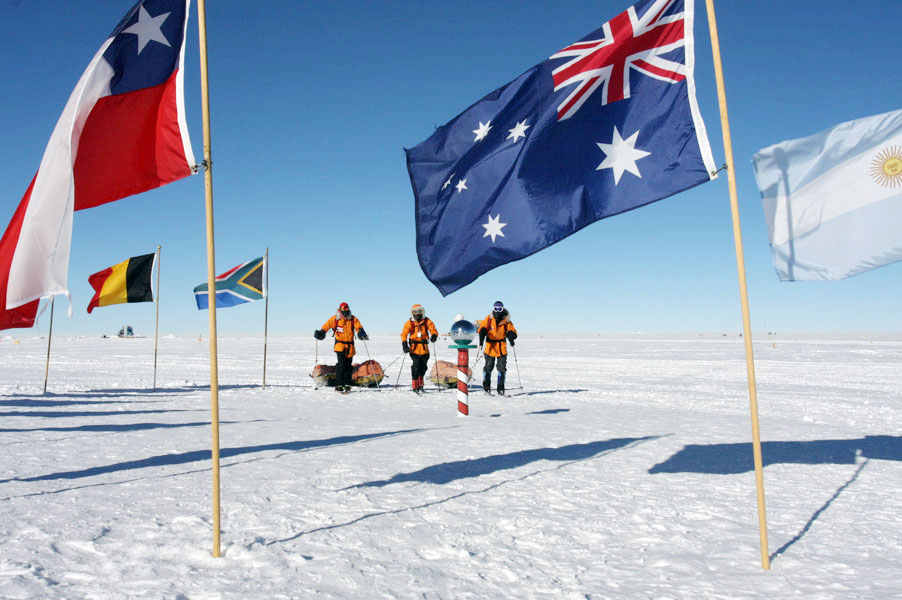
Opportunities to visit the South Pole as a tourist or on a private expedition are limited and generally expensive. A number of private companies operate organized tours and support expeditions to the South Pole, both overland and by air, more information on which is available from the non-governmental organization International Association of Antarctica Tour Operators (IAATO).
Tourism in the Antarctic is subject to procedures and regulations adopted by the Antarctic Treaty Parties, including in particular the Protocol on Environmental Protection to the Antarctic Treaty and the Guidance for Visitors to the Antarctic (Antarctic Treaty Recommendation XVIII-1 (PDF)). In addition, expedition members need to comply with the laws of the countries from which they originate and / or of those who are organizing the expedition, and / or of the country from which they depart to Antarctica. The legal situation can be complex for multinational expeditions.
Tour operator interests are represented by IAATO, which plays an important role in the coordination and management of the industry. IAATO was founded in 1991 by seven private companies who were already operating tours within the region. The organization aims to advocate, promote and practice safe and environmentally responsible private sector travel to the Antarctic and presently has a membership of more than one hundred companies from around the globe. IAATO has developed extensive procedures and guidelines for Antarctic tourist activity including: guidelines on numbers of people ashore, site-specific activity guidelines, wildlife watching, pre- and post-visit activity reporting, passenger, crew and staff briefings, previous Antarctic experience for tour staff, and contingency and emergency medical evacuation plans.
The Guidance for Visitors to the Antarctic is based on five basic principles:
- Protect Antarctic wildlife;
- Respect protected areas;
- Respect scientific research;
- Keep Antarctica pristine.
IAATO compiles annual statistics on tourist activities across Antarctica, including visits to the continental interior and the South Pole , which are presented to the Antarctic Treaty meetings. Tourists are permitted to visit Amundsen-Scott South Pole Station (US) in accordance with procedures that ensure science activities are not disrupted. Visitor numbers to the South Pole have increased substantially in recent years. Tourism at the South Pole must be balanced against the need to protect the environment and preserve the integrity of sensitive science areas, particularly for sites requiring clean air for atmospheric studies or quiet conditions for seismic measurements.
South Pole Holidays
The South Pole, also known as the Geographic South Pole or Terrestrial South Pole, is the southernmost point on the surface of the Earth with the Antarctic continent. It is the site of the US Amundsen-Scott South Pole Station, which was established in 1956 and has been permanently staffed since that date.
Contact our Antarctica experts now
01737 214 250
We recommend
South pole adventure.
from £52429 excluding flights
5 nights | Dec
Escorted | Active
Follow in Amundsen's footsteps journeying to the harsh yet iconic South Pole.
The Geographic South Pole is defined for most purposes as one of two points where the earth’s axis of rotation intersects its surface (the other being the Geographic North Pole). The projection of the Geographic South Pole onto the celestial sphere gives the south celestial pole.
The Ceremonial South Pole is an area set aside for photo opportunities at the South Pole Station. It is located a short distance from the Geographic South Pole, and consists of a metallic sphere on a plinth, surrounded by the flags of the Antarctic Treaty signatories.
The ceremonial marker is not moved each year, so its position relative to the Geographical South Pole slowly changes over time as it drifts with the ice.
The first humans to reach the Geographic South Pole were Norwegian Roald Amundsen and his party on December 14, 1911. Amundsen named his camp Polheim and the entire plateau surrounding the Pole Haakon VII’s Vidde in honour of King Haakon VII of Norway. Amundsen’s competitor Robert Falcon Scott, with four other men from the Terra Nova Expedition, reached the Pole a month later. On the return trip Scott and his four companions all died of starvation and extreme cold. In 1914 British explorer Ernest Shackleton’s Imperial Trans-Antarctic Expedition set out with the goal of crossing Antarctica via the South Pole, but his ship the Endurance, was frozen in pack-ice and sank 11 months later.
Discover Our Way

- First hand knowledge on tap
- Plan your trip with your own travel specialist
- We offer flexibility to suit you
- Feefo Platinum Service Award
- We'll help you find the right:
- Accommodation style
- Ways to travel
- You set the pace
- 24/7 in country support and guidance
- Full financial protection
- Travel disruption support
- Our flexibility promise
- View Our Guarantee »

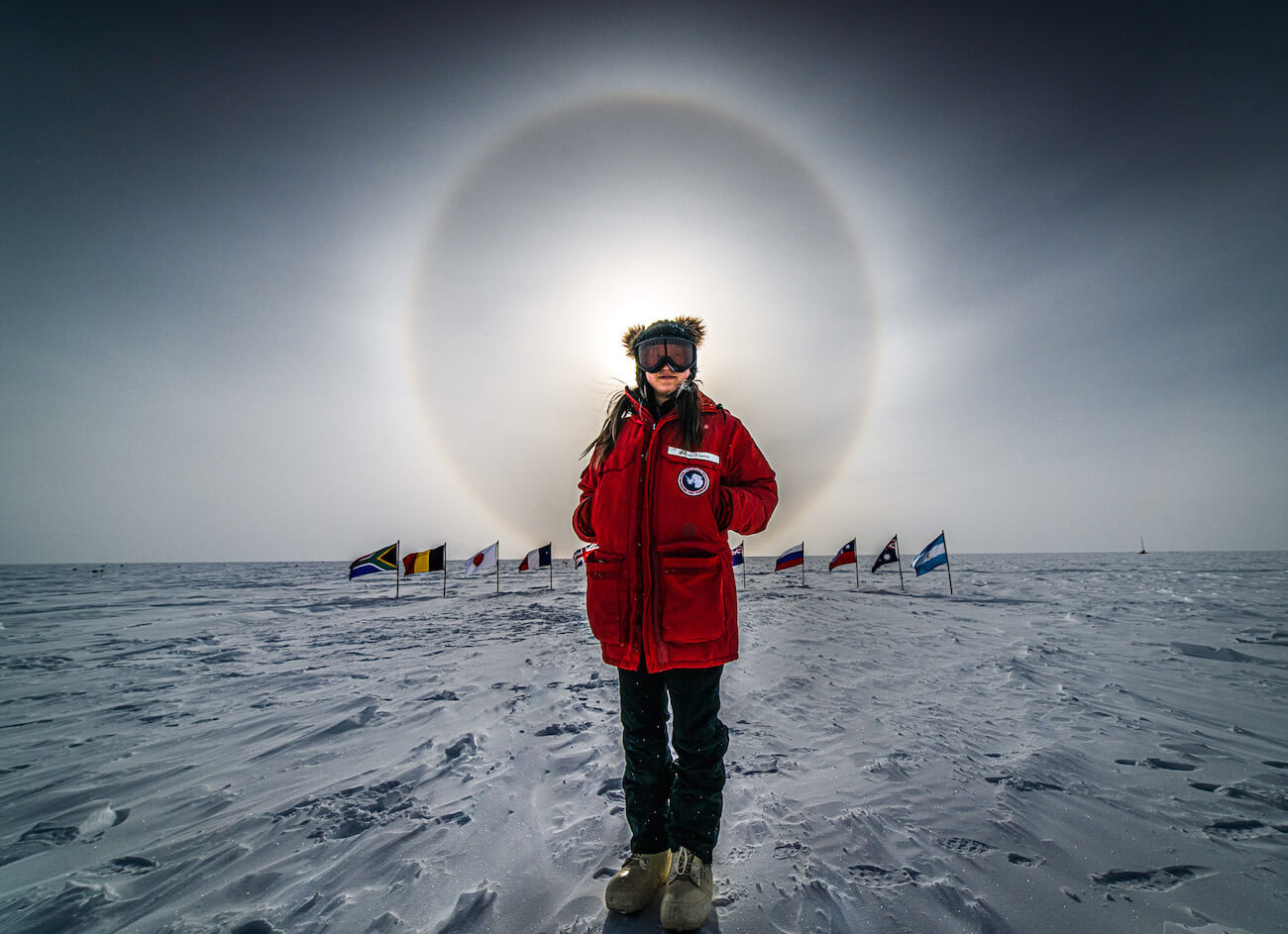
Life at the South Pole Station: Everything You Want to Know
Whenever I tell people I’ve worked in Antarctica , specifically at the South Pole, the most common questions I get asked are about what life at the South Pole Station is like.
The short answer:
Working and living at Amundsen-Scott South Pole Station, 90° South, is full of challenges; but it is the ultimate experience of a lifetime many of us Polies (people who have lived at the South Pole) will never forget.
I was fortunate enough to work at Pole during the 2021-2022 austral summer season as a steward.
I’m also the current steward coordinator (front of the house manager) for a full year until November 2023.
While it’s definitely not easy work, I couldn’t be happier about the opportunity to live where few people ever have the chance to visit.
And how often do people get to brag that they’ve been paid to live at the South Pole ?!
For those who might be headed down themselves in the future, or those who are just curious, I’ve compiled as much information as I could into this post from my experience working and living at the bottom of the world.
Feel free to use the Table of Contents to jump to specific sections of interest.
South Pole Station History and Background
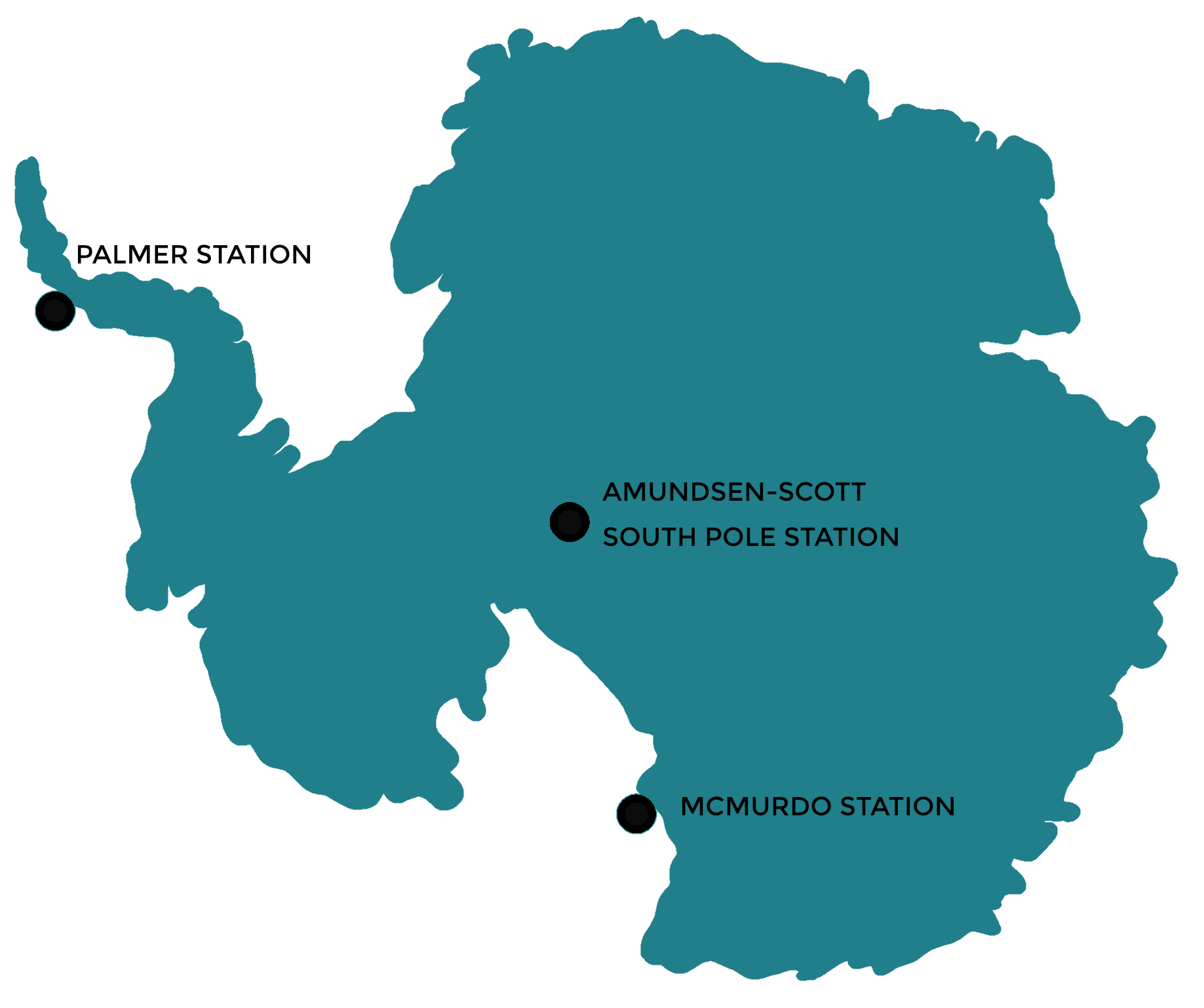
The official name of the station is Amundsen-Scott South Pole Station.
This is in honor of the first two expedition leaders to ever reach the Geographic South Pole in 1911 and 1912: Roald Amundsen (Norway) and Robert F. Scott (Great Britain).
The first South Pole Station was completed in 1957 and is one of three permanent U.S. Antarctic research stations.
The station was upgraded in 2008 and is now an elevated facility.
Outside of the main structure, there are detached buildings used for science and other operational needs.
Related: How I Got Paid to Live in Antarctica: FAQ About Working on the Ice
Get Your FREE eBook Now!
By providing your details, you consent to receiving our emails. Unsubscribe any time.
Where is the South Pole?
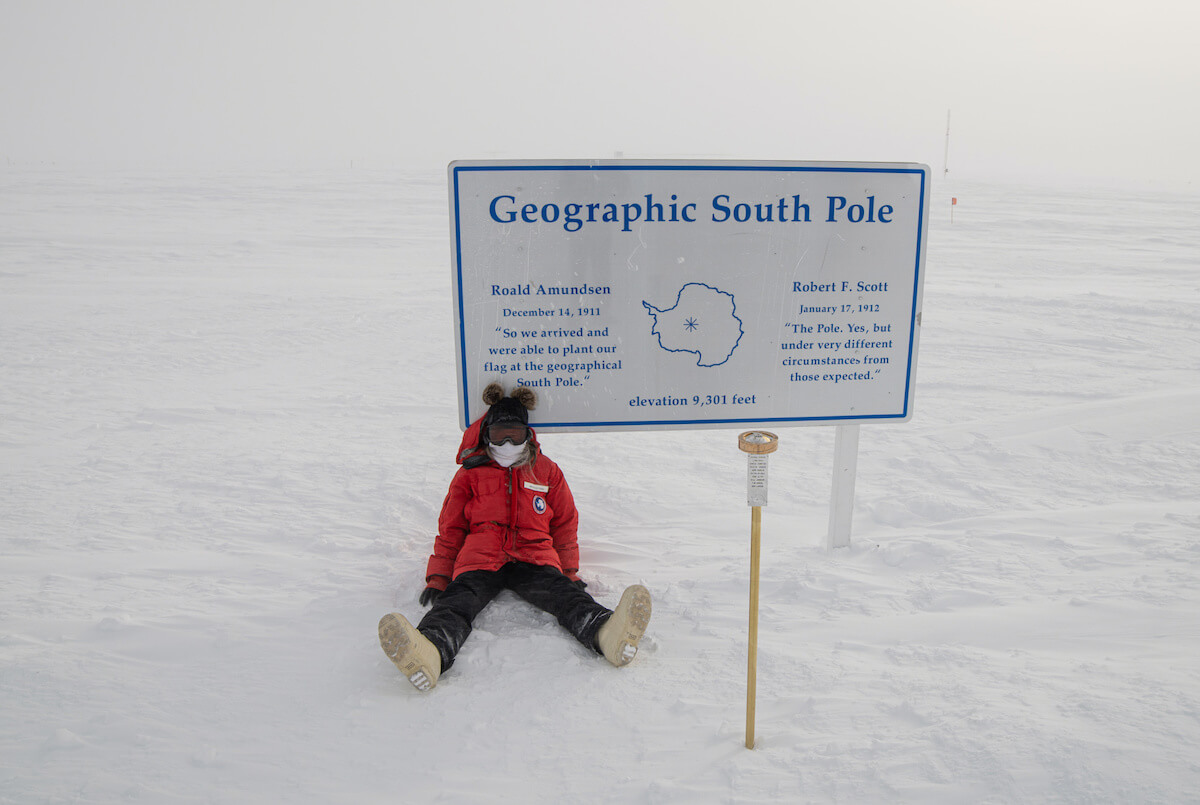
The Geographic South Pole is the southernmost point on Earth, located at 90° South.
Every direction from this point is north.
This pole marker is located to the side of the station and is adjusted by approximately 10 meters (33 feet) every year on January 1st to compensate for the shifting polar ice sheet that covers Antarctica.
Because of the South Pole’s unique location, circling the Geographic South Pole means visitors can go through 24 time zones in a matter of seconds.
Near the South Pole Station, there is also a ceremonial pole marker that is used for photo opportunities.
The Ceremonial South Pole is marked by a silver ball on top of a striped red and white pole, and surrounded by the flags of the original 12 countries that signed the Antarctic Treaty in 1959.
Fun Fact: Every Christmas, the station hosts a “Race Around the World” fun run in which participants complete an approximately two-mile loop around the Geographic South Pole.
What is Life Like at the South Pole?
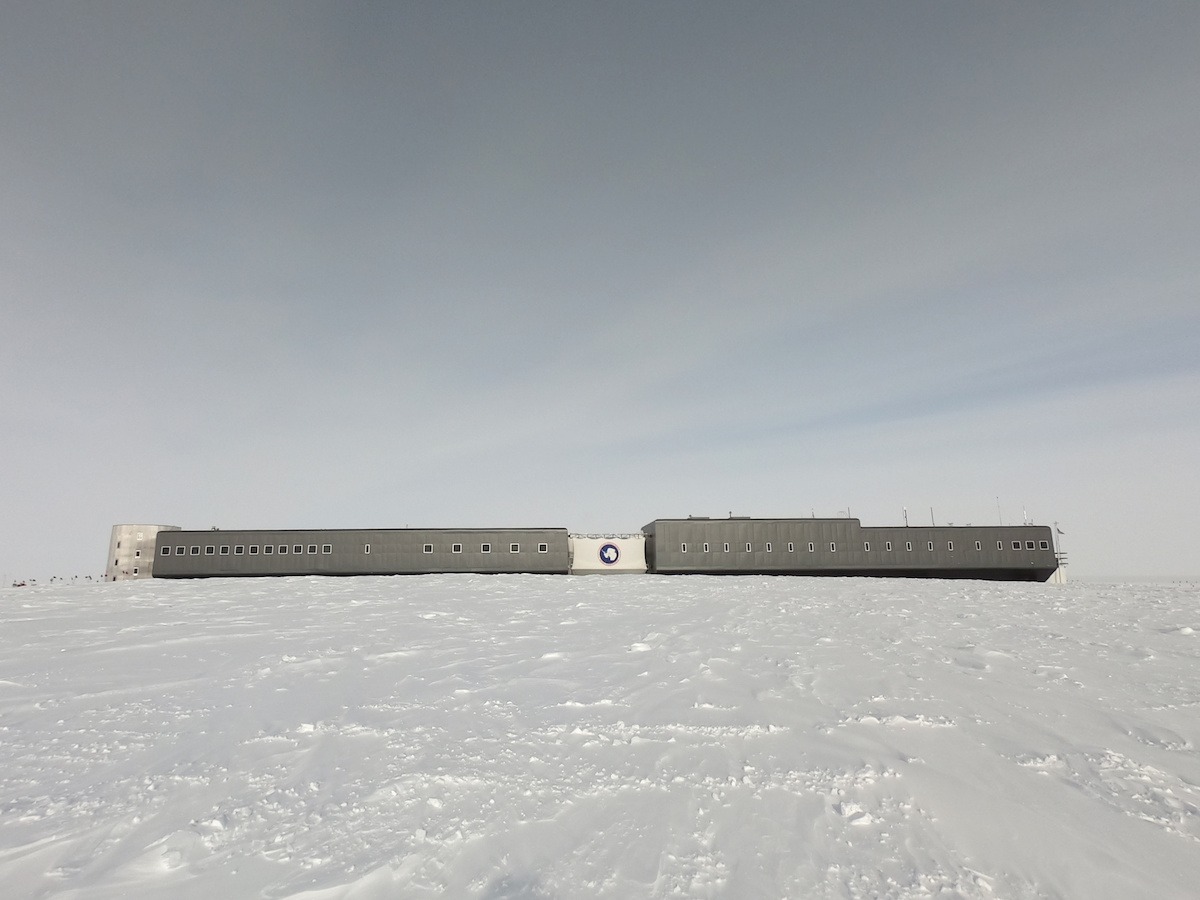
If you think about McMurdo being like a small mining town, then life at the South Pole is similar to living in a space station, but on ice.
An ice station, if you will.
Most of life at the South Pole takes place within the elevated station.
Here you’ll find basic facilities such as living quarters, dining room, lounges, gym, laundry room, and offices.

Because it’s such a harsh environment (more on the weather later) and there’s not really a whole lot to do or see outside, Amundsen-Scott South Pole Station comes with a few amenities that make life for the community a little more enjoyable.
These include a sauna and hydroponic greenhouse, the latter of which is a rarity to anyone familiar with life (or lack thereof) in Antarctica.

Related: 20 Things You Didn’t Know About Life at McMurdo Station, Antarctica
Work at the South Pole
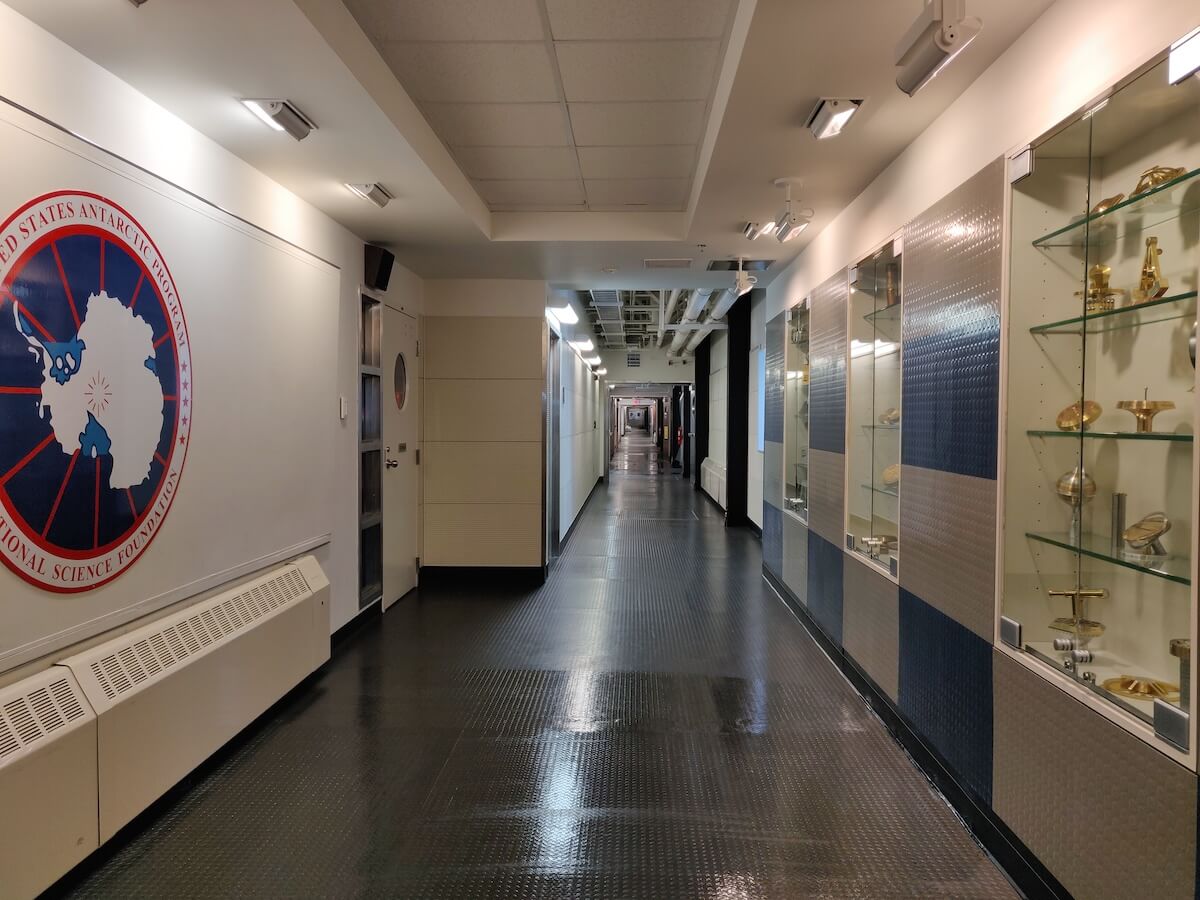
Just like the other U.S. Antarctic Stations, everyone at the South Pole works a minimum of 54 hours a week, six days a week.
The majority of personnel have Sundays off.
Similar to other stations on the “ice” (a common word used for Antarctica by those who work there), the South Pole has a position for any job necessary to keep the little ice station functioning year round.
(Yes, you can get paid to live in Antarctica .)
These positions include kitchen staff, mechanics, equipment operators, electricians, plumbers, and more.
All of these personnel are referred to as support staff, and they ensure that the station continues to run smoothly so that scientists can continue advancing their research.
Related: How to Get Paid to Travel to Every Continent (Yes, Even Antarctica)
How Hard is it to Get a Job at the South Pole?

The short answer is if you’ve never worked on the ice before, getting a job at the South Pole Station is much more challenging than getting a contract at McMurdo Station .
This is because Pole has a much smaller population, which means fewer personnel in each department (sometimes there’s just one role per department) and thus placements are much more coveted.
Personnel will usually have to work their way up to a Pole contract, putting in ice time and becoming experienced enough in their field.
That’s not to say it’s impossible to get a job at the South Pole as a new hire; it certainly happens every year.
However, many Polies previously worked one or more seasons in McMurdo before they landed a contract at the South Pole.
Science at the South Pole
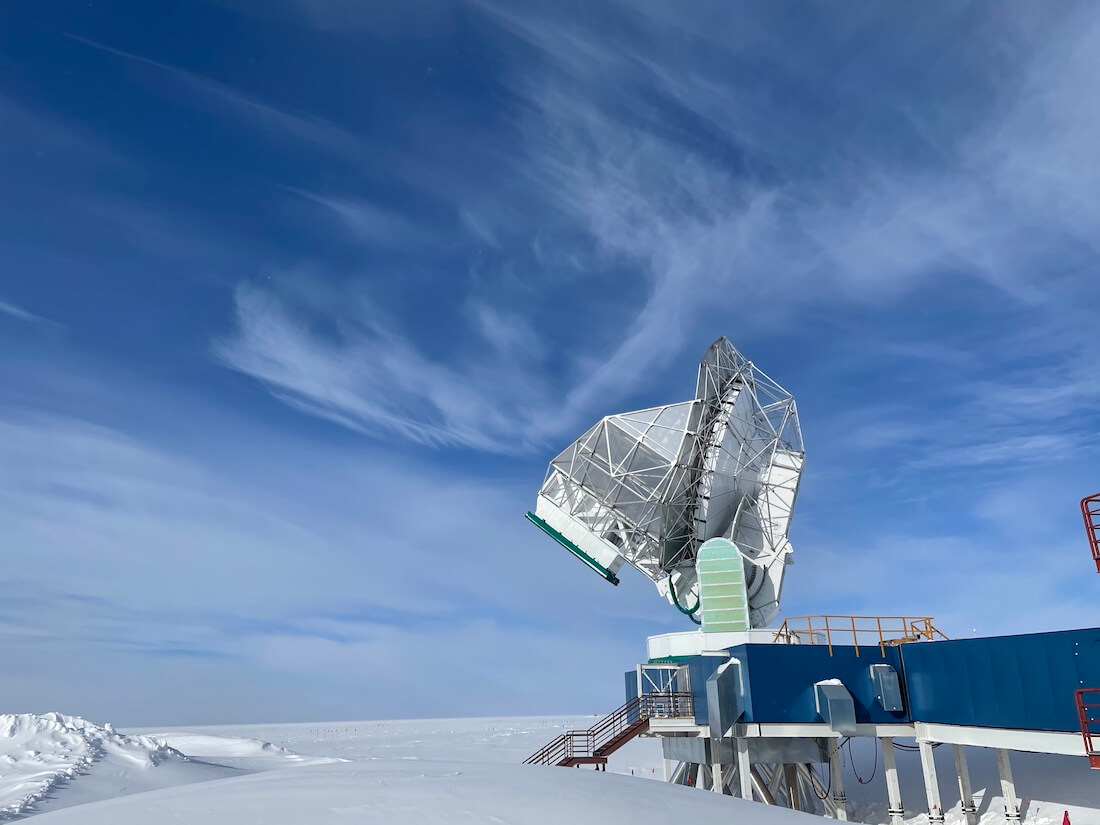
Because of the South Pole’s high altitude, low temperature, and low humidity, it’s the perfect place for research in a number of fields to take place.
This includes glaciology, geophysics, biology, astrophysics, astronomy, and meteorology.
From capturing the historic first image of the Milky Way’s supermassive black hole to even providing insight into how the universe was created, science at the South Pole provides valuable data that is unattainable anywhere else on Earth.
Much of the research takes place in lab facilities outside of the elevated station in two designated areas, the Clean Air Sector and Dark Sector.
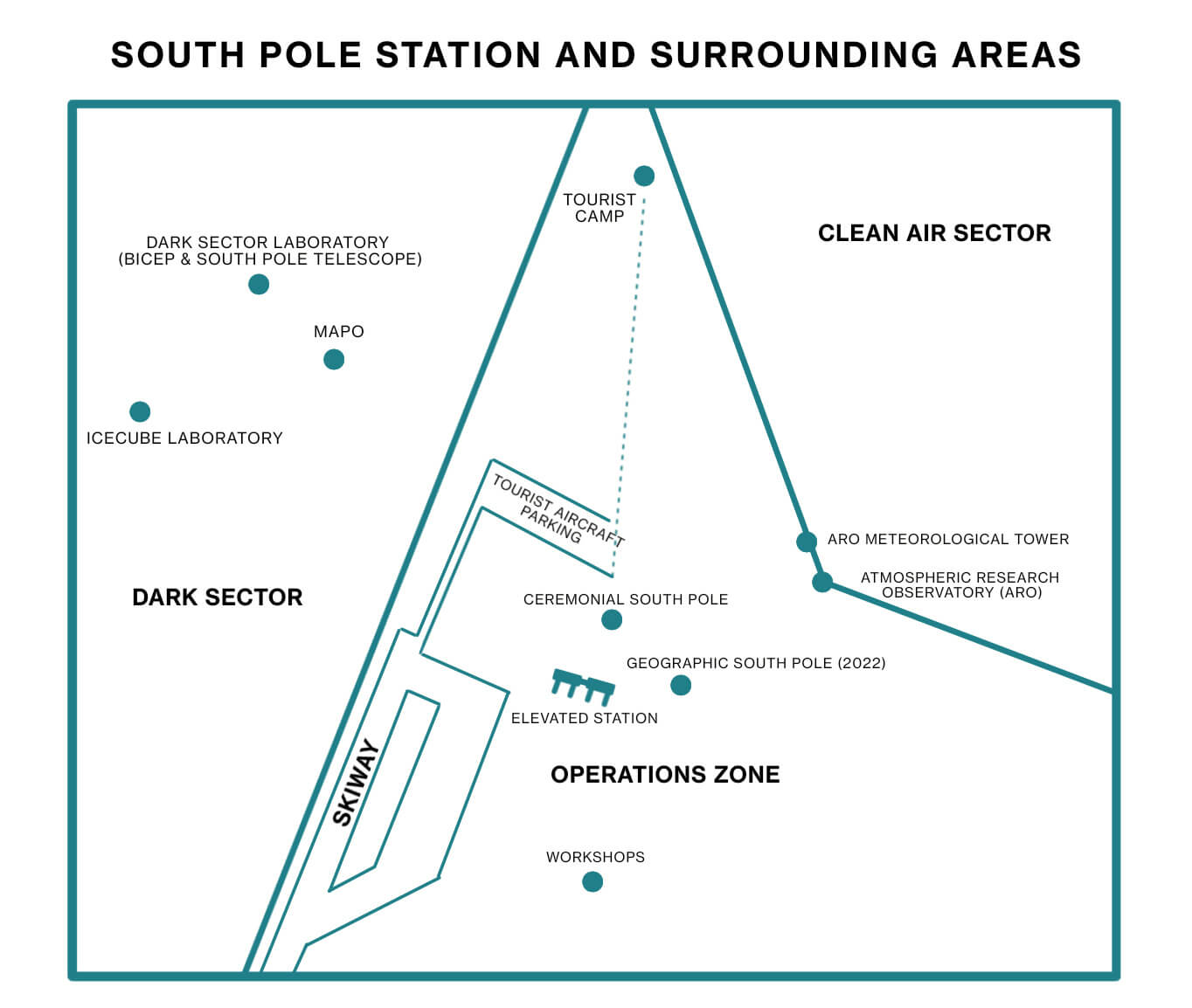
These sectors are sensitive and can be affected by light, cell phone or radio signals, and general air pollution.
This means vehicles aren’t allowed into the Clean Air Sector and only red lights are used around South Pole Station’s exterior during the 24 hours of darkness in the winter.
Getting to the South Pole
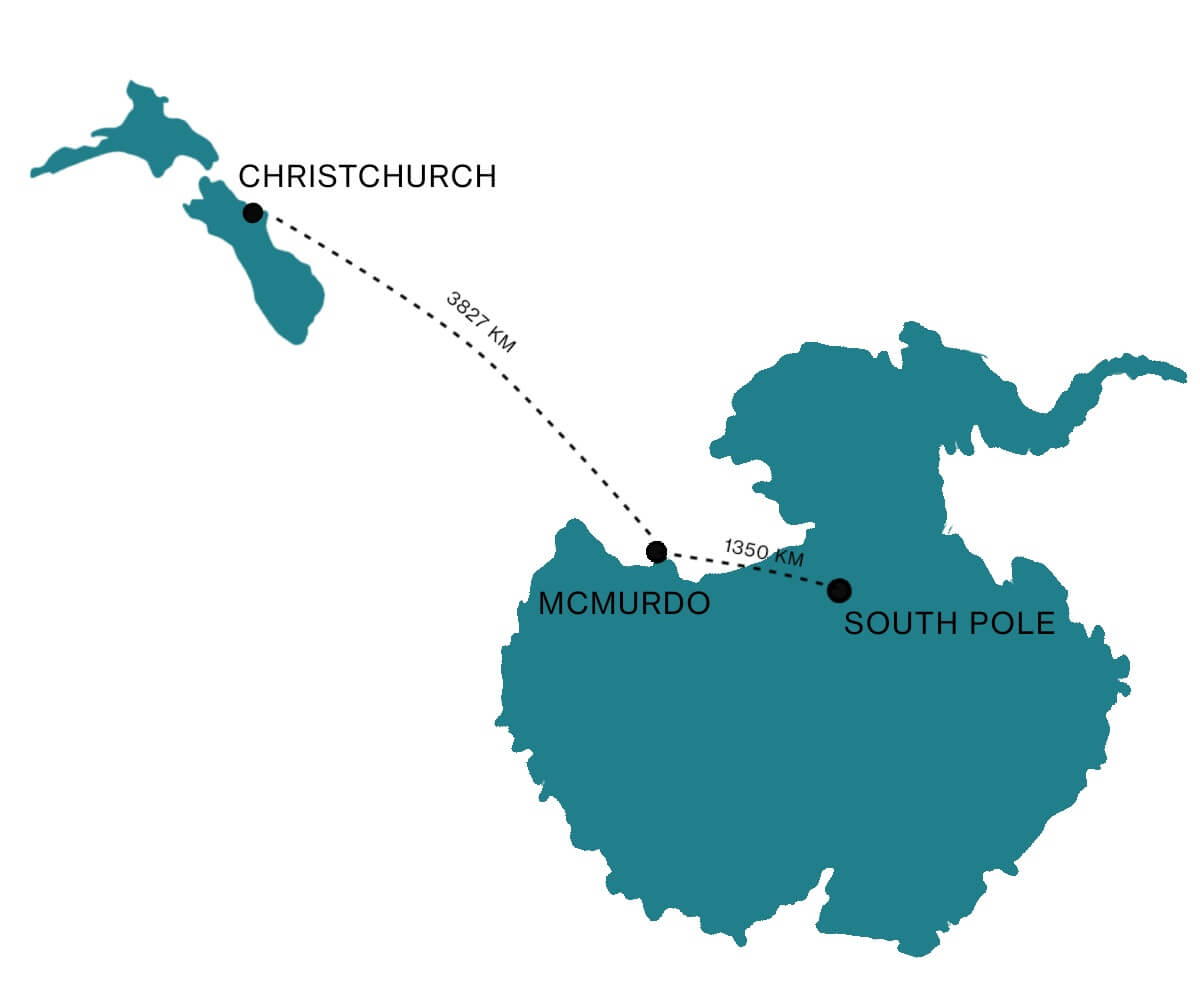
Because it’s one of the most remote locations in the world, getting to the South Pole isn’t as easy as finding a flight on Expedia.
The typical itinerary for reaching the station goes as follows:
1. Commercial flight to Christchurch, New Zealand
Christchurch is the U.S. Antarctic Program’s gateway city for McMurdo and South Pole Stations.
2. Charter flight to McMurdo Station (3,827 km/2,378 mi)
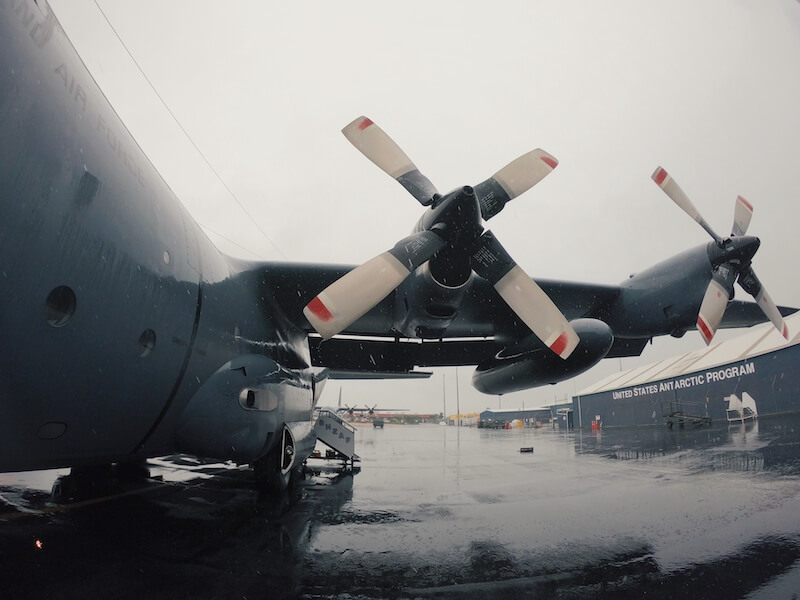
McMurdo Station is the largest station in Antarctica. This flight is also referred to in the USAP program as the “ice flight.”
Types of planes used:
- United States Air Force C-17 Globemaster III
- New York Air National Guard or Royal New Zealand Air Force LC-130 Hercules
- Royal New Zealand Air Force Boeing 757
- Skytraders Airbus A319
3. Charter flight to Amundsen-Scott South Pole Station (1,350 km/839 mi)
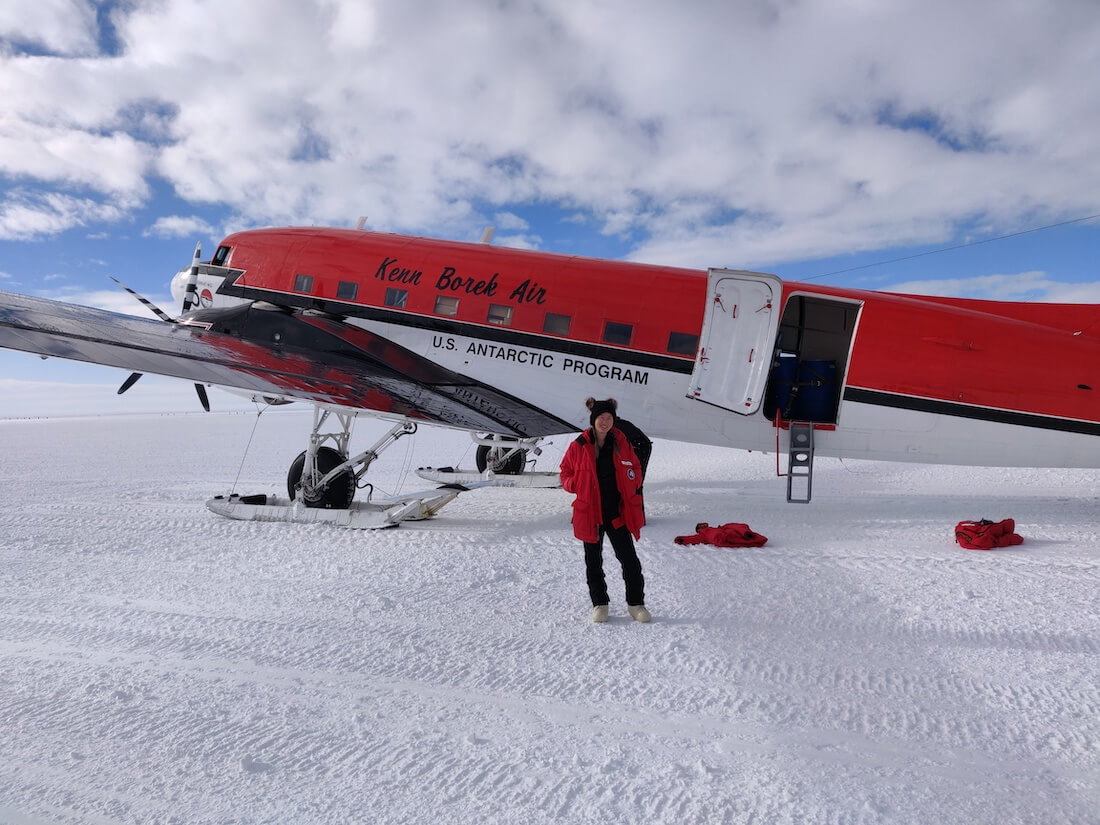
- New York Air National Guard LC-130 Hercules
- Kenn Borek Air Basler (modified DC-3)
Flights are only able to operate during the Pole summer season, which falls between late October to mid-February.
During the winter, the station closes and becomes self-sufficient.
Due to extreme cold and low visibility, planes are not able to safely reach the South Pole.
However, there have been a couple of exceptions with rare winter medical evacuations taking place in 2001 and 2016 .
What is it like living at Amundsen-Scott South Pole Station?
If I had to describe what it’s like based on my experiences, living at Amundsen-Scott South Pole Station is very similar to working and living on a cruise ship .
You live in a very big building in the middle of nowhere, you share living spaces, and because you’re isolated in a small community, you end up bonding with other members/Polies over silly events and parties created to pass the time.
Related: What Working on Cruise Ships is Really Like: Pros & Cons
View this post on Instagram A post shared by Michelle | Work + Travel (@wandereatwrite)
Living Accommodations
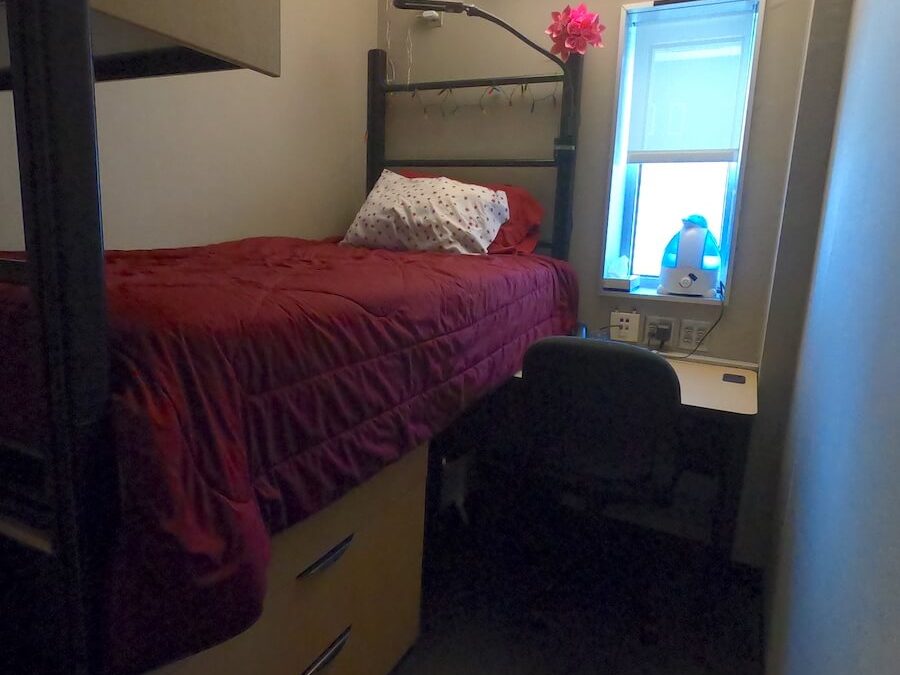
The majority of personnel live inside the elevated station in single or double rooms (the latter reserved for couples).
The single rooms are either 3×5 or 4×5 ceiling tiles large and consist of an extra-long twin bed, a wardrobe, a dresser, and a desk.
Bathrooms are dormitory style with one located outside each housing section (“berthing wing”).
The bathrooms include a couple of shower stalls as well as some shelves to store personal toiletries.
Water and Showers
Water is a precious resource at the South Pole.
Because the station has to produce its own water by melting and treating ice, every Polie is encouraged to reduce their water usage.
This means that most personnel are allowed two 2-minute showers per week, with the exception of certain departments such as kitchen staff or mechanics.
Lifestyle and Recreation

While life at McMurdo Station is a mix of college meets military base, life at the South Pole is a little slower and more laid back.
Think Spring Break in Cancun vs. a holiday in the Maldives.
But colder, obviously.
Although the Pole station is smaller than McMurdo and lacks an official bar, it does have a variety of facilities and activities available, including the following:
- Fitness: community-led exercise classes, weight room, gymnasium, climbing wall, South Pole Marathon, Race Around the World
- Leisure: Craft Room, Music Room, Sauna, Greenhouse, Game Room, Movie Lounge
- Social Events: board game night, trivia, open mic/talent shows, film/tv series showings, themed parties, Annual South Pole Head Weighing Contest
Below is a peek into what the inside of Amundsen-Scott South Pole Station looks like:

Community Responsibilities
Community involvement is big at Pole, and everyone is encouraged to help out where it’s needed.
Usually, this means keeping the dormitory bathrooms and showers clean.
Because there’s no full-time janitorial position, life at Amundsen-Scott South Pole Station means everyone is expected to take turns cleaning their bathroom once a week in what’s referred to as “house mouse.”
Community members can also volunteer their time in the dish pit as there is typically only one steward per shift washing all of the meal dishes from the community as well as the pots and pans used by the chefs.

During the holidays, there is a designated community cook day where the galley staff is given a day off in lieu of working on the station’s special days off (Thanksgiving, Christmas, New Year’s, etc.) and various departments sign up to cover shifts both in the kitchen and in the dish pit so that the station continues to be fed.
Population and Demographics
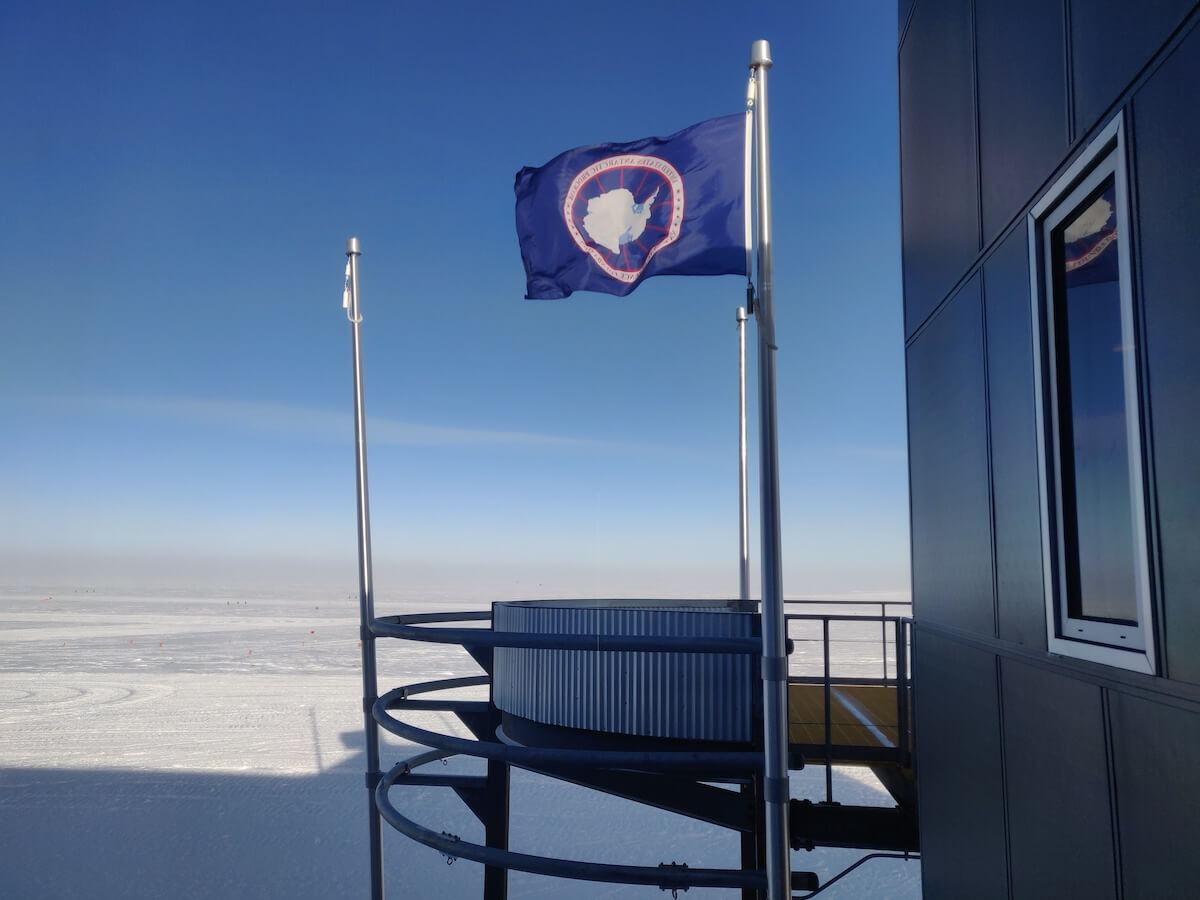
In a regular summer season, the Pole Station population can reach upwards of 150 people, while 40-50 scientists and support staff will keep the station running in the winter.
Like most Antarctic stations, the majority of personnel are men.
While the ratio fluctuates season to season, generally speaking the split is usually 80% men and 20% women.
At one point during my summer at Pole, I was one of 15 women among a station population of roughly 80 people (give or take).
Internet and Communication
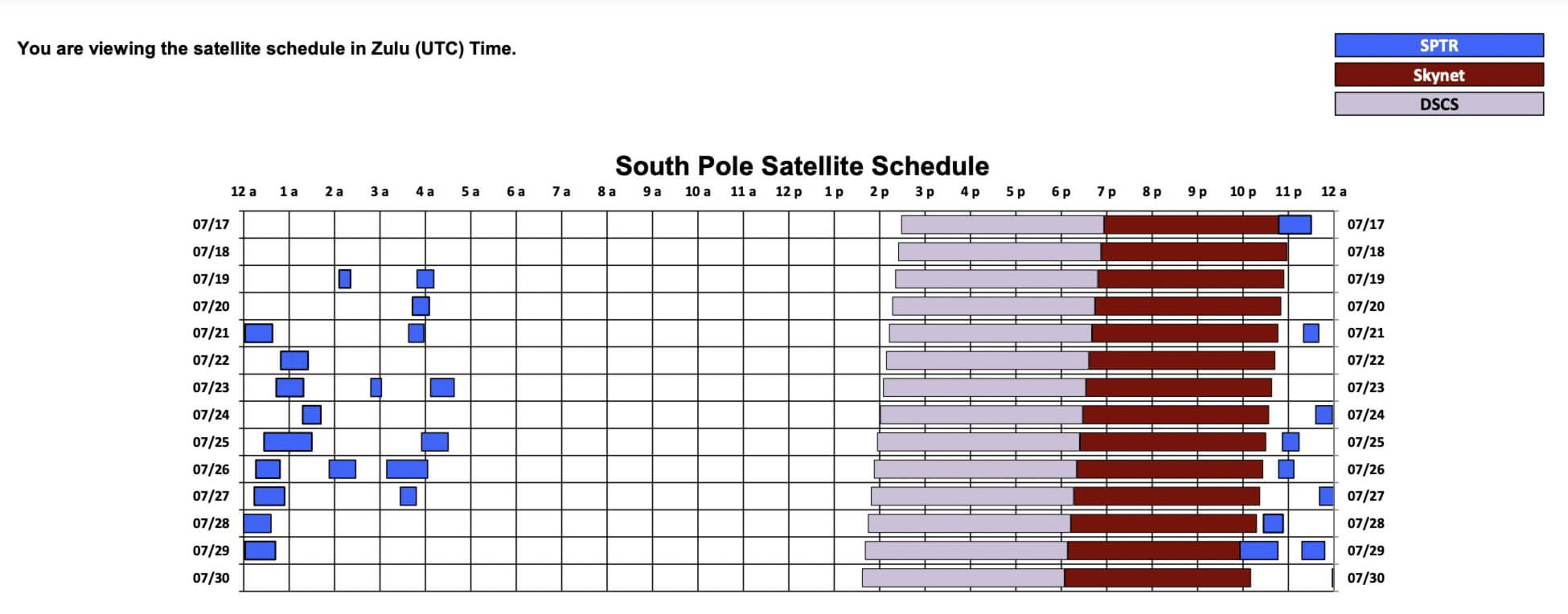
Unlike McMurdo Station, South Pole Station does not have regular internet access.
Pole relies on satellites for outside communication.
This means that the station only has decent internet for 4-6 hours a day.
Some days there is technically up to 10 hours of access possible, but the third satellite, SkyNet, is often too slow to use.
Because of the satellite’s orientation to Earth, internet access begins 4 minutes later everyday.
At the start of the summer season, internet access will be available later in the night and by the end of the summer it will have moved to the middle of the afternoon.
Relying on satellites also means that regular phone calls and emails cannot be received or sent outside of satellite hours.
(Emergency phone calls can still be made using Iridium satellite phones.)
This can take some adjustment for those used to life in McMurdo where phone calls or email access is 24/7 (albeit slow or laggy).
You can find the weekly South Pole Station satellite service schedule here .

The South Pole Dining Room offers three hot meals a day Monday- Saturday with an added Brunch meal on Sunday in the summer.
The kitchen typically runs on a 35-day menu cycle with popular dishes and items recurring more frequently.
Meals are often themed for cohesiveness, such as Asian fusion lunches or steak night.
There are always fresh baked goods (breads and desserts) available for each meal as well as vegetarian/vegan items.
Because South Pole Station has its own greenhouse, fresh greens may also be available year-round depending on the harvest.
Otherwise, Pole is completely dependent on resupply flights from McMurdo Station.
Special meals are prepared for the holidays (Thanksgiving, Christmas, New Year’s, Midwinter Dinner, etc.) and there is also a grab-and-go fridge available 24/7 with leftovers for community members to help themselves to.
There is none.
Unlike McMurdo and the Antarctic Peninsula, Amundsen-Scott South Pole Station is, well, as south as it gets and there’s no chance for natural wildlife to survive there.
No seals, no whales, no penguins, and no skua— typically, although one wayward skua did make it all the way to Pole once.
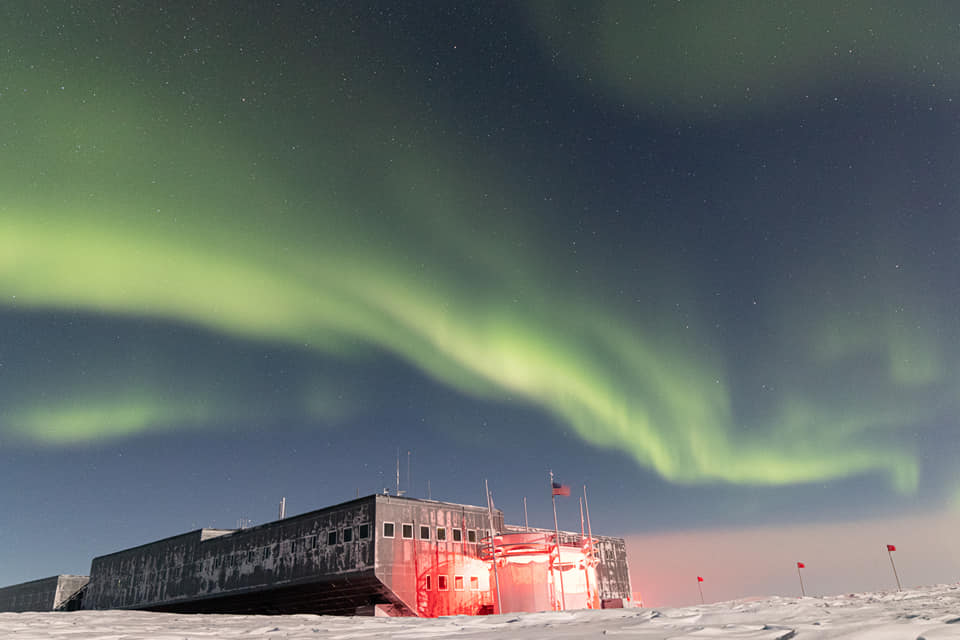
The South Pole experiences 24 hours of sunlight between November and February (austral summer).
After the sun sets on March 23, Pole experiences twilight throughout April until approximately May 10– the first day of night and 24 hours of darkness.
Amundsen-Scott frequently sees bright auroras ( Southern Lights ) during the winter due to its location in the auroral zone and the absence of light pollution.
The light begins to return in August and the sun returns in late September.
Related: Antarctica Northern Lights & Southern Lights Guide 2023
Weather and Climate
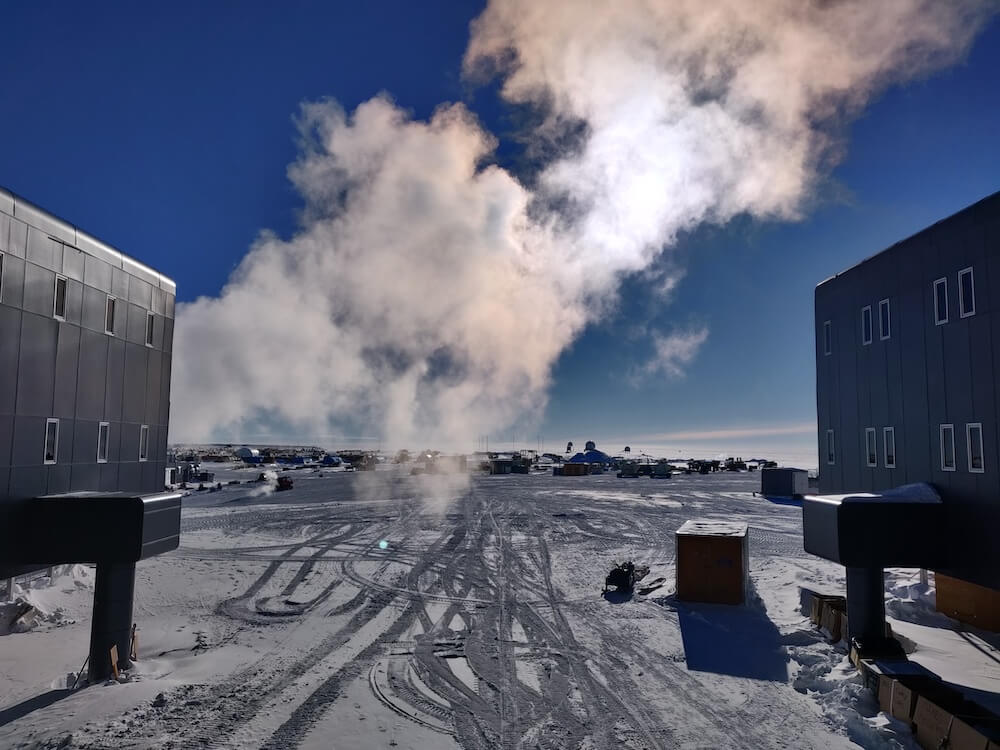
So how cold does the South Pole get?
In the austral summer, the average temperature at South Pole Station is approximately -18°F (-28°C) and -76°F (-60°C) in the winter.
The warmest South Pole has ever been was 9.9°F (-12.3°C) and the coldest was -117°F (-82.8°C).
Elevation and Humidity
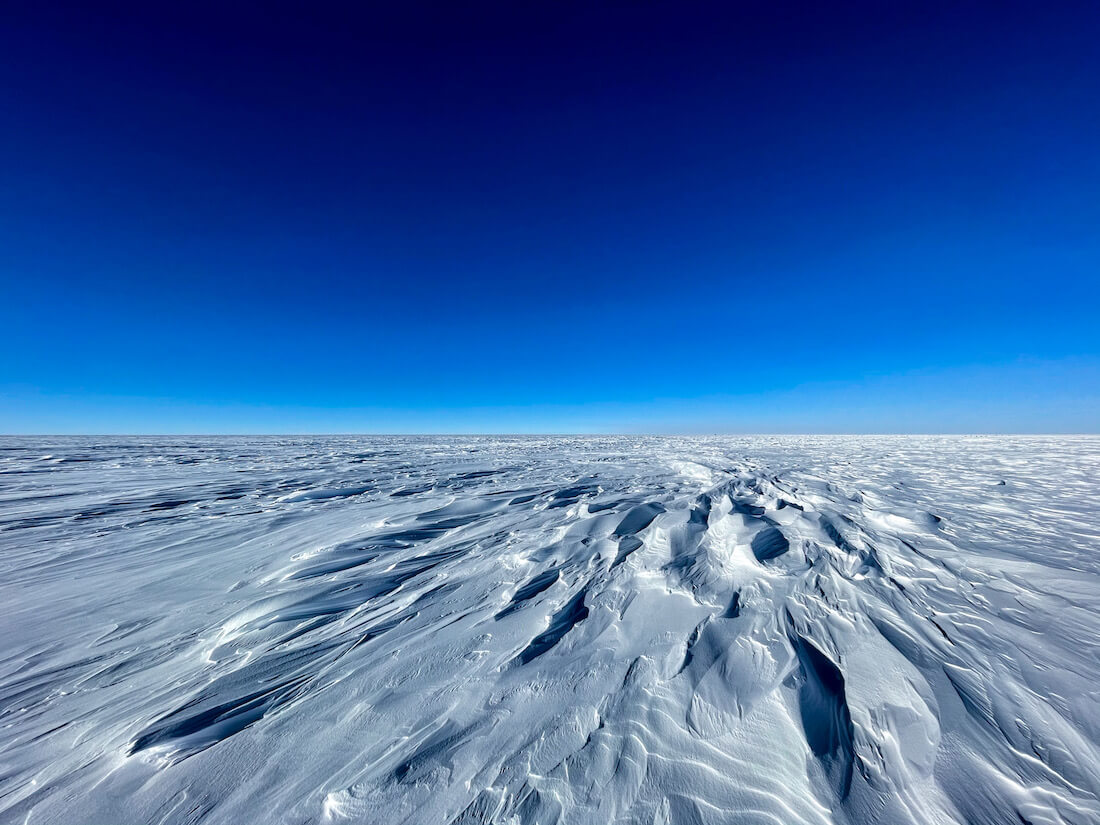
Amundsen-Scott South Pole Station sits at an elevation of roughly 2835 meters (9,300 ft).
Humidity is nearly nonexistent at Pole, making it a polar desert.
The air is both extremely thin and dry.
The harsh high-altitude environment can take a toll on your health: small cuts take weeks to heal, climbing a flight of stairs knocks the wind out of you, and minor body aches have you feeling twenty years older.
I also woke up nearly every morning with dried blood in my nose and went through a box of tissues weekly.
It can be rough.
Can You Visit the South Pole as a Tourist?
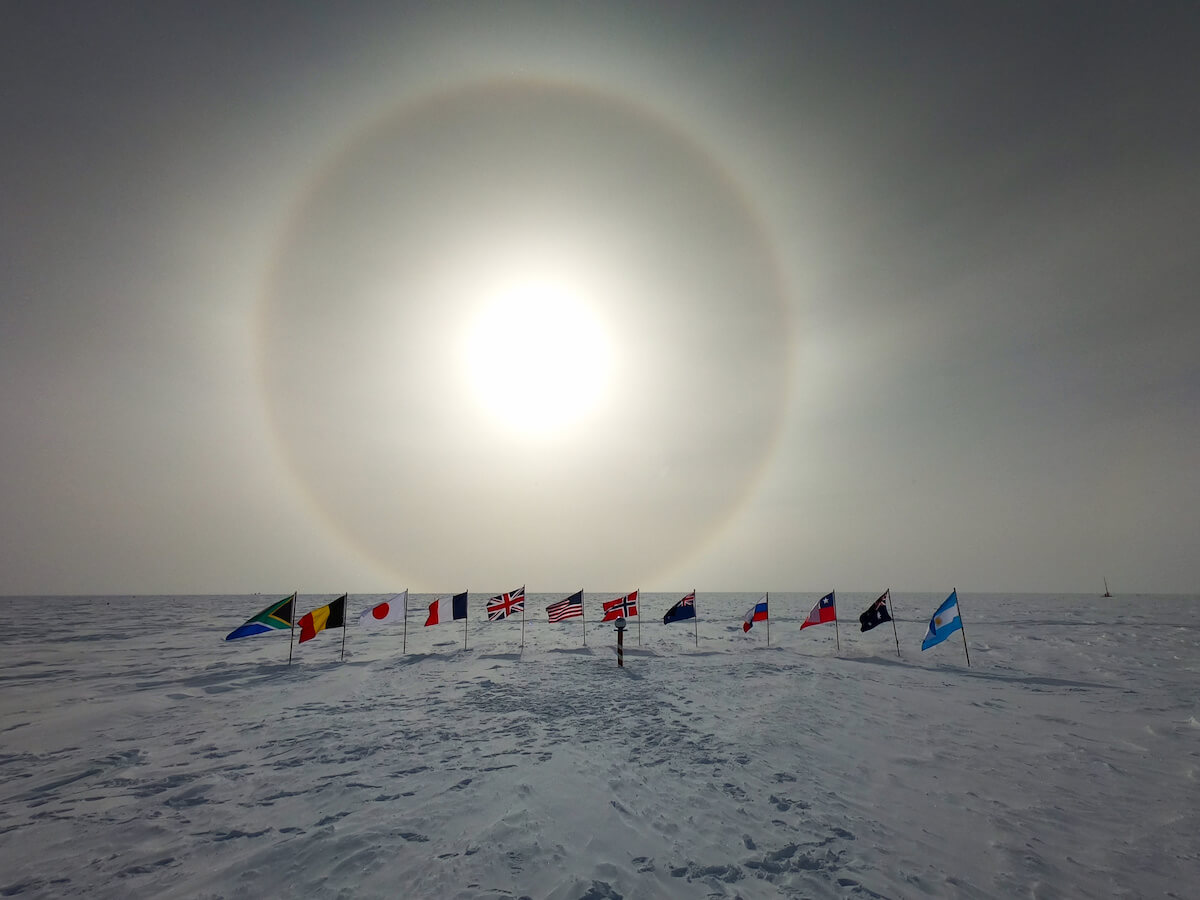
Yes— if you have enough money.
Most people who go to the Amundsen-Scott South Pole Station for free or as part of their job are either researchers, support staff, or distinguished visitors (program representatives, government officials, etc.)
However, if you don’t fall under one of these categories, it’s still possible to visit the South Pole as a tourist.
There are several luxury expedition tour companies that take clients to various sightseeing spots around Antarctica, including a quick trip to the South Pole.
The visit to the Pole could last anywhere from just an hour or two to camping overnight.
Depending on the company and tour package, these excursions can cost between USD 51,000 – 250,000 per person.
Final Thoughts: Life at Amundsen-Scott South Pole
While life at the South Pole can be hard on the mind, body, and soul, I’d still highly encourage anyone who has the opportunity to work at Pole to do so.
After all, it’s such a unique experience that many people are willing to pay upwards of a quarter of a million dollars to merely spend a few hours visiting where we get paid to live.
Additional Antarctica Posts:
- How I Got Paid to Live in Antarctica: FAQ About Working on the Ice
- 20 Things You Didn’t Know About Life at McMurdo Station, Antarctica
- McMurdo Station Packing List for Working in Antarctica
- How to Get Paid to Travel to Every Continent (Yes, Even Antarctica)
- Antarctica Northern Lights & Southern Lights Guide 2023
Save and Pin
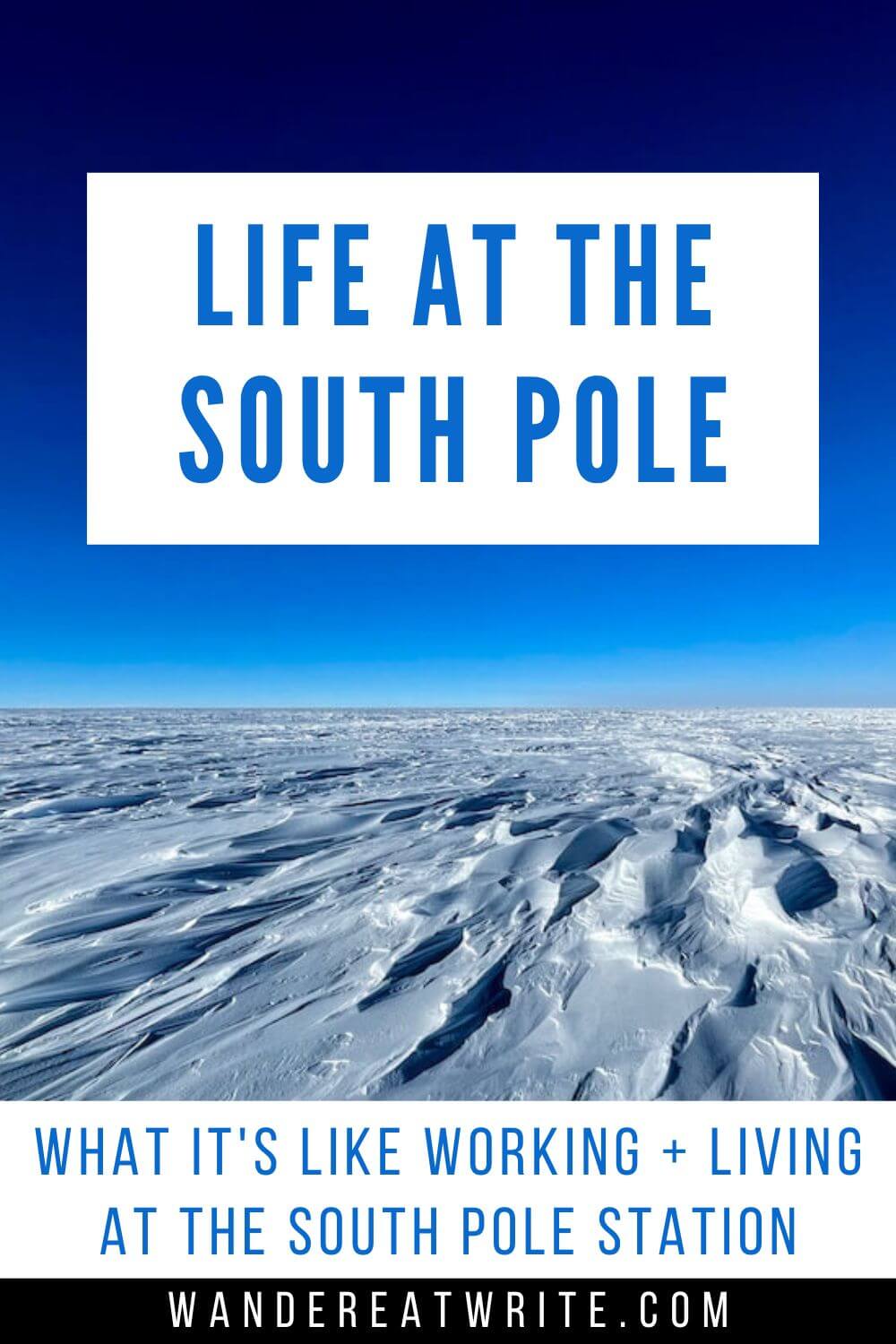
Michelle is a freelance writer who has traveled to all seven continents and 60+ countries through various forms of employment. Over the last ten years, she’s worked as an ESL teacher in Japan, a youth counselor aboard cruise ships, and a hospitality manager in Antarctica.
Related posts
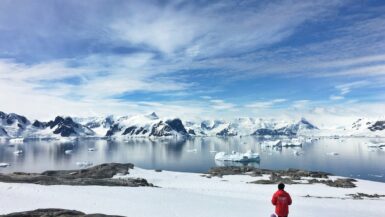
17 BEST Boots for Antarctica: Expert Tips from an Ice Veteran
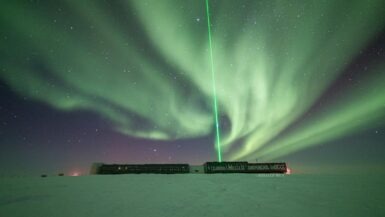
Antarctica Northern Lights & Southern Lights Guide 2023
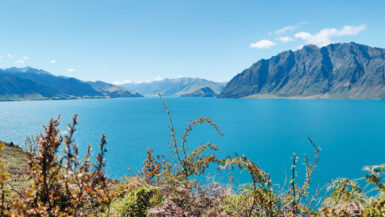
31 BEST Jobs That Travel (No Experience Necessary) 2023
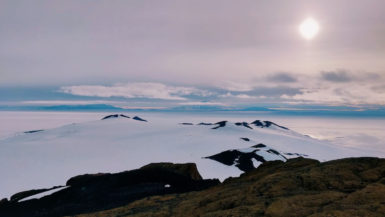
Working in Antarctica: Blaster Garry Rex | Stories From the Ice
Leave a reply cancel reply.
Your email address will not be published. Required fields are marked *
Wow, what a great guide! Thank you so much for sharing this :)
I’m always so fascinated by your stories and this one was no exception! I can’t imagine how physically and mentally challenging it must be to live here but like you said, it’s such an incredible and rare experience that sounds totally worth it at the same time! Also, this is just so wild: “visitors can go through 24 time zones in a matter of seconds.” Thanks for sharing! Xx Sara
Thanks, Sara! Definitely was an adventure for the books :)
Wow! This is fascinating! Thank you so much for sharing your experience.
Wow! What an amazing experience. I found this fascinating to read, I’ve always wondered what it was like to live and work at the South Pole. It looks challenging, but it also looks amazing. You’ve inspired me to start looking at whether it would be possible for me to go!
It’s definitely possible! You can take a look at my guide here on how to get a job in Antarctica :)
What an amazing experience. Thanks for sharing. I’m impressed by how nice the inside of the facility is. The library is great!
Thanks for the great info!! My son heads out next week! We’re so excited (and anxious).
You have an incredible talent for writing simply but extremely clearly.
Thank you so much for sharing your adventures and stay safe.
Privacy Overview
Privacy Policy - Terms and Conditions


China Plants First-Ever National Flag on Far Side of Moon
Red and yellow.
China's latest visit to the Moon is already proving a huge success.
On Sunday, the country's Chang'e-6 lunar lander touched down on the far side of the Moon in the South Pole-Aitken basin, where it scooped up samples shortly thereafter.
And then, earlier today, the probe lifted off to make its long return to the Earth.
But not before planting China's flag on the Moon's far-less-studied hemisphere that always faces away from Earth — a symbolic move that underlines just how far the country's space program has come since its first uncrewed Moon mission a mere 17 years ago.
Big Star, Small Stars
The squat lander can be seen lifting the red Chinese flag with its robotic arm in an image taken by a mini rover that the lander deployed shortly after touching down on the Moon's surface.
It's China's second sample return mission to the Moon, and the fourth to its surface, including two rovers.
The flag itself differs greatly from the ones we fly back on Earth. It's made from volcanic rock basalt, which was crushed into filaments that measure only a third of the diameter of a human hair, to withstand extreme temperature fluctuations on the far side of the Moon.
China is already looking far ahead and planning to set up a more permanent presence on the Moon.
"The lunar surface is rich in basalt," Chang'e-6 engineer Zhou Changyi told state-owned broadcaster CCTV . "Since we’re building a lunar base in the future, we will most likely have to make basalt into fibers and use it as building materials."
It'll take the spacecraft roughly three weeks to make its return to Earth. The plan is for it to drop off its loot in Mongolia around June 25.
By literally planting its flag on the far side of the Moon — the second time it's visited its heavily cratered hemisphere so far — China is quickly establishing itself as a force to be reckoned with. While NASA is still laying the groundwork for its long-awaited return to the lunar surface, China is forging ahead, running laps around its international competition.
More on China's Moon missions: China Lands on Dark Side of the Moon, Prepares to Gather Loot and Return to Earth
The post China Plants First-Ever National Flag on Far Side of Moon appeared first on Futurism .

- Skip to main content
- Keyboard shortcuts for audio player
Weekend Edition Sunday
- Latest Show
Sunday Puzzle
- Corrections
Listen to the lead story from this episode.
Politics chat: How voters are responding to Trump's felony conviction
by Ayesha Rascoe , Mara Liasson
The Americas
Mexico votes for a new president after a campaigning season plagued by violence.
by Eyder Peralta , Ayesha Rascoe
Middle East
Aid workers in gaza say nowhere is safe after israeli attacks on 'humanitarian zones'.
by Hadeel Al-Shalchi
Girls in the U.S. are getting their period earlier. Here's what parents should know
by Ayesha Rascoe , Maria Godoy
Bookstores have come under attack in Ukraine. But interest in reading is only growing
by Joanna Kakissis
25 years ago, Napster changed how we listen to music forever
by Ayesha Rascoe
What locals think of the proposal to build U.S.'s tallest building in Oklahoma City
by Graycen Wheeler

Sunday Puzzle NPR hide caption
Sunday Puzzle: Second in Line
by Will Shortz
Movie Interviews
A new animated film follows a lonely dog and his robot friend in new york city, conservative media sows doubt about the verdict in trump's felony convictions.
by Ayesha Rascoe , David Folkenflik
Supreme Court judge accused of bias towards Trump declines to recuse himself from case
Some states are adopting a new form of reading instruction to combat falling scores.
by Juma Sei
A new movie tells the story of Kemba Smith Pradia, race and incarceration
Strange news, meet abby lampe, two-time champion of the cheese-wheel-chasing race, meet abby lampe, two-time champion of the chees-wheel-chasing race, 100 years ago, indigenous people were granted u.s. citizenship by law.
by Sandhya Dirks
The first professional women's hockey league in the U.S. has a winner
Music interviews, jon lampley, a veteran of stephen colbert's talk show, releases his debut album.
by D. Parvaz , Ayesha Rascoe , Ryan Benk
Searching for a song you heard between stories? We've retired music buttons on these pages. Learn more here.
- lol Badge Feed
- win Badge Feed
- trending Badge Feed
Browse links
- © 2024 BuzzFeed, Inc
- Consent Preferences
- Accessibility Statement
19 Signs That You're In The Deep South, According To Southerners
I didn't even know peanuts could be boiled.

BuzzFeed Staff
If you've ever spent time in the southern US — especially the Deep South — you know that it's practically a whole different country compared to the northern states. So when u/ iwanttheworldnow asked the AskReddit community, "How can you tell you’re entering the Deep South in the US?" people had a lot of suggestions.

Some were stereotypical, some were surprising... Here are the most-upvoted ones:
1. "a sign that says hot boiled peanuts.".

—u/ Unable_Scheme_3884
2. "Every convenience store clerk wants you to have a blessed day."
—u/ Elusive_Dr_X
3. "Yelp’s highest rated restaurant in the county is a grill/biscuit spot inside a gas station."
—u/ msb2ncsu
"Best food you'll ever eat, half the time. The other half, well..."
—u/ Ion_bound
4. "Waffle Houses start being at every exit."
—u/ daddytyme428
5. "There will be billboards for Jesus next to billboards for strip clubs."

—u/ StatisticianNormal15
6. "I am from New Orleans, and was [driving back there from Boston] with minimal stops. At another random rest area, I got out of the car to walk my dog, and the first person I saw gave me a nod and said, 'How’s it going?' I hadn’t been spoken to by a stranger on the street in months. It was jarring. That was how I realized I was back in the South."
—u/ waterboy1321
7. "The harder people are to understand, the deeper yer' gettin!"
—u/ itzYumii
8. "Drove down to Georgia to visit my sister; we stopped on the way, and I saw a sign in a window that said 'Fried Bologna is Back!'"
—u/ MannyHec
9. "Grits are on the menu in restaurants."

—u/ oilman300
10. "Suddenly Buc-ee's, Zaxby's, and Waffle House signs are everywhere, and there are 'Are you injured?' lawyer billboards every 20 feet on the highway."
—u/ TakeoGaming
11. "Biscuits instead of toast with breakfast, biscuits instead of dinner rolls with supper."
—u/ Heinz37_sauce
12. "My grandmother (south Alabama) would write 'sweet milk' on her grocery list. This meant regular milk instead of buttermilk."
—u/ Alive_Baker_3696
13. "When you order iced tea, nobody asks if you want sweetened or unsweetened."

—u/ AnimalFarenheit1984
14. "You’ll hear a lot of sir and ma’am and please and thank you."
—u/ xMarked4Deathx
15. "If you were to throw a pebble in any direction, it'll hit a church. If it bounces off, it'll hit a Waffle House."
—u/ stalagit68
16. "Gas stations in the middle of nowhere with signs saying they'll skin the deer you just shot for you."
—u/ CautiousWrongdoer771
17. "The fastest way to get to a location with a GPS is going down a 50-year-old two-lane with no road markings, with nothing but forest and the occasional mobile home on the side."
—u/ ThatGuyFrom720
18. "When you tune into local radio stations and there's one talking NFL, another talking college football. And a third talking high school football. And it's March."
—u/ Adorable-Lack-3578
And finally:
19. "the f****** humidity.".

—u/ prof_dynamite
Share This Article

IMAGES
VIDEO
COMMENTS
You can visit both by foot, car or plane, and can also visit the US Scientific research base, and the Amundsen - Scott South Pole Station. Find Out More . Ceremonial moment at the South Pole. Walk with emperor penguins ... The South Pole: Temperatures here rarely climb above -25C (-13F). With windchill, it can feel like -40C (-40F).
Fly to the South Pole 2024/2025. Fly to the South Pole, where all 360 lines of longitude meet and in a few steps you can walk around the world. History comes alive as you stand at 90° South, the ultimate goal of polar explorers Amundsen and Scott. Imagine how it felt to head out across the frozen continent and into the unknown over 100 years ago.
Antarctica / South Pole Tour Reviews. Leena 29 Mar, 2024. 5. It is truly a once in a lifetime experience. Antarctica Classic. arindam chakraborty 5 Mar, 2024. 5. excellent in each and every aspect. Quest for the Antarctic Circle.
South Pole. Destinations. South Pole. We offer two ways to reach the southernmost point on earth, by air and by ski. Fly to 90° South aboard a ski-equipped aircraft or embrace the spirit of early explorers with one of our challenging ski expeditions to the South Pole.
The Southernmost Point on Earth. Fly to the South Pole, where all 360 lines of longitude meet and in a few steps you can walk around the world. History comes alive as you stand at 90° South, the ultimate goal of polar explorers Amundsen and Scott. Imagine how it felt to head out across the frozen continent and into the unknown over 100 years ago.
The Antarctic summer, from November to March, is the optimal time to visit the South Pole. During this period, temperatures are relatively milder, ranging from -20°C to -40°C (-4°F to -40°F). Days are longer, allowing for more exploration opportunities, and wildlife, such as penguins and seals, can be observed in their natural habitats.
Why Visit Antarctica? Since ancient Greek times, scholars and explorers were convinced there was a large landmass south. Way south. And as scientists began to realize that the world was round, that prevailing thought continued: there must be a landmass at the bottom of the globe to provide counterweight to all of the land in the north.
The history, the exclusivity, and the isolation. Join the small handful of adventurers to have checked off the mythical South Pole. Traversing Antarctica in hours by plane with magnificent views, you'll spend 4 whole days camping at the heart of the Antarctic continent. 6-7 Days. $62,895.
An Antarctic expedition cruise explores diverse wildlife, with zodiac landings, Antarctic exploration and charming English architecture. From $19,825.00. Best of Antarctica. Set off from Punta Arenas, relish four days of Antarctic wilderness, and culminate with a scenic glacial hike and a tour in Ushuaia. From $7,649.00.
The best time to visit the South Pole is from December to January during the middle of the Antarctic summer. Due to the extreme weather and temperatures at the South Pole for the rest of the year, the window for flying to the South Pole is limited to these two months.
Visit the South Pole webcam. Read recent reports from South Pole Station, published in the Antarctic Sun. Recent NSF press releases about the South Pole and research. Americans have occupied the geographic South Pole continuously since November 1956. The station stands at an elevation of 2,835 meters (9,306 feet) on Antarctica's nearly ...
Polar Explorers charges U.S. $45,500 for a flight to the pole on either anniversary and $65,000 for a two-month ski expedition, which involves pulling a 90-pound (41 kilogram) sled for 700 miles ...
The South Pole is the southernmost point on Earth. It is the precise point of the southern intersection of Earth's axis and Earth's surface. From the South Pole, all directions are north. Its latitude is 90 degrees south, and all lines of longitude meet there (as well as at the North Pole ). The South Pole is located on Antarctica, one of Earth ...
The Geographic South Pole is marked by the stake on the right NASA image showing Antarctica and the South Pole in 2005. The South Pole, also known as the Geographic South Pole or Terrestrial South Pole, is the southernmost point on Earth and lies antipodally on the opposite side of Earth from the North Pole, at a distance of 20,004 km (12,430 miles) in all directions.
The most popular things to do on a South Pole land tour in 2024 are land tours, adventure options, skiing, wildlife viewing, and camping. Our South Pole trips in 2024 range in price from $78,750 to $110,000. Tell us about your ideal South Pole trip , and our team of South Pole travel experts will help you to start planning to make it a reality.
South Pole. The Geographic South Pole is the point where the Earth's axis of rotation intersects the surface of the southern hemisphere, in the remote, bleak interior of Antarctica. The underlying land is close to sea-level but is covered by ice over 2.5 km thick, so the surface is at 2835 m / 9301 ft on a flat, featureless plateau.
Tourism in Antarctica. A party of skiers arrives after traversing overland to the South Pole, December 2009. Tourism started in Antarctica by the sea in the 1960s. Air overflights started in the 1970s with sightseeing flights by airliners from Australia and New Zealand, and were resumed in the 1990s. The (summer) tour season lasts from November ...
South Magnetic Pole - Currently located off the coast of Antarctica, this is a constantly shifting spot, due to changes in the Earth's magnetic field.; Geographic South Pole - The southernmost point on the planet, located at 90°S, is marked by a small sign and a tall stake driven into the ice. The markers must be moved annually, to compensate for the movement of the ice - about 10 ...
Opportunities to visit the South Pole as a tourist or on a private expedition are limited and generally expensive. A number of private companies operate organized tours and support expeditions to the South Pole, both overland and by air, more information on which is available from the non-governmental organization International Association of Antarctica Tour Operators (IAATO).
The South Pole, also known as the Geographic South Pole or Terrestrial South Pole, is the southernmost point on the surface of the Earth with the Antarctic continent. It is the site of the US Amundsen-Scott South Pole Station, which was established in 1956 and has been permanently staffed since that date. Contact our Antarctica experts now.
The Geographic South Pole is the southernmost point on Earth, located at 90° South. Every direction from this point is north. This pole marker is located to the side of the station and is adjusted by approximately 10 meters (33 feet) every year on January 1st to compensate for the shifting polar ice sheet that covers Antarctica.
The first ever expedition to reach the Geographic South Pole was led by the Norwegian explorer Roald Amundsen.He and four other crew members made it to the geographical south pole on 14 December 1911, which would prove to be five weeks ahead of the competitive British party led by Robert Falcon Scott as part of the Terra Nova Expedition.Amundsen and his team returned safely to their base, and ...
Name. Locale. Remarks. Date. John Forbes Kerry. McMurdo Sound, South Pole. Visited the McMurdo Station and the Amundsen-Scott South Pole Station. First visit of a Secretary of State to Antarctica. November 10-12, 2016.
China's latest visit to the Moon is already proving a huge success. The country's Chang'e-6 lunar lander touched down on the far side of the Moon, within the South Pole-Aitken basin, on Sunday ...
The IEC is nearing the completion of vote capturing. Reading Time: 2 minutes The Electoral Commission of South Africa (IEC) is nearing the completion of vote capturing.. Currently, more than 96% of the national votes have been declared; the ANC remains in pole position with just over 40%; the DA is close to 22%; and the former President Jacob Zuma's MK party is at just under 15% of the votes.
2024 India General Election: Live Results. By Matthew Bloch , Agnes Chang , Saurabh Datar , Martín González Gómez , Mujib Mashal and Urvashi Uberoy. June 3, 2024. Prime Minister Narendra Modi ...
The IEC is anticipating a significant turnout in the May 2024 elections. IEC chief electoral officer Sy Mamabolo said all people who were at the voting station by the 9pm cut off would be allowed ...
Jon Lampley, a veteran of Stephen Colbert's talk show, releases his debut album. by D. Parvaz, Ayesha Rascoe, Ryan Benk. 7 min. Searching for a song you heard between stories?
14. "You'll hear a lot of sir and ma'am and please and thank you." —u/ xMarked4Deathx. 15. "If you were to throw a pebble in any direction, it'll hit a church. If it bounces off, it'll hit a ...
Stay informed with our live updates on South Africa's 2024 elections. Get real-time updates, breaking news, and in-depth analysis as the nation votes. Follow along for up-to-the-minute election ...